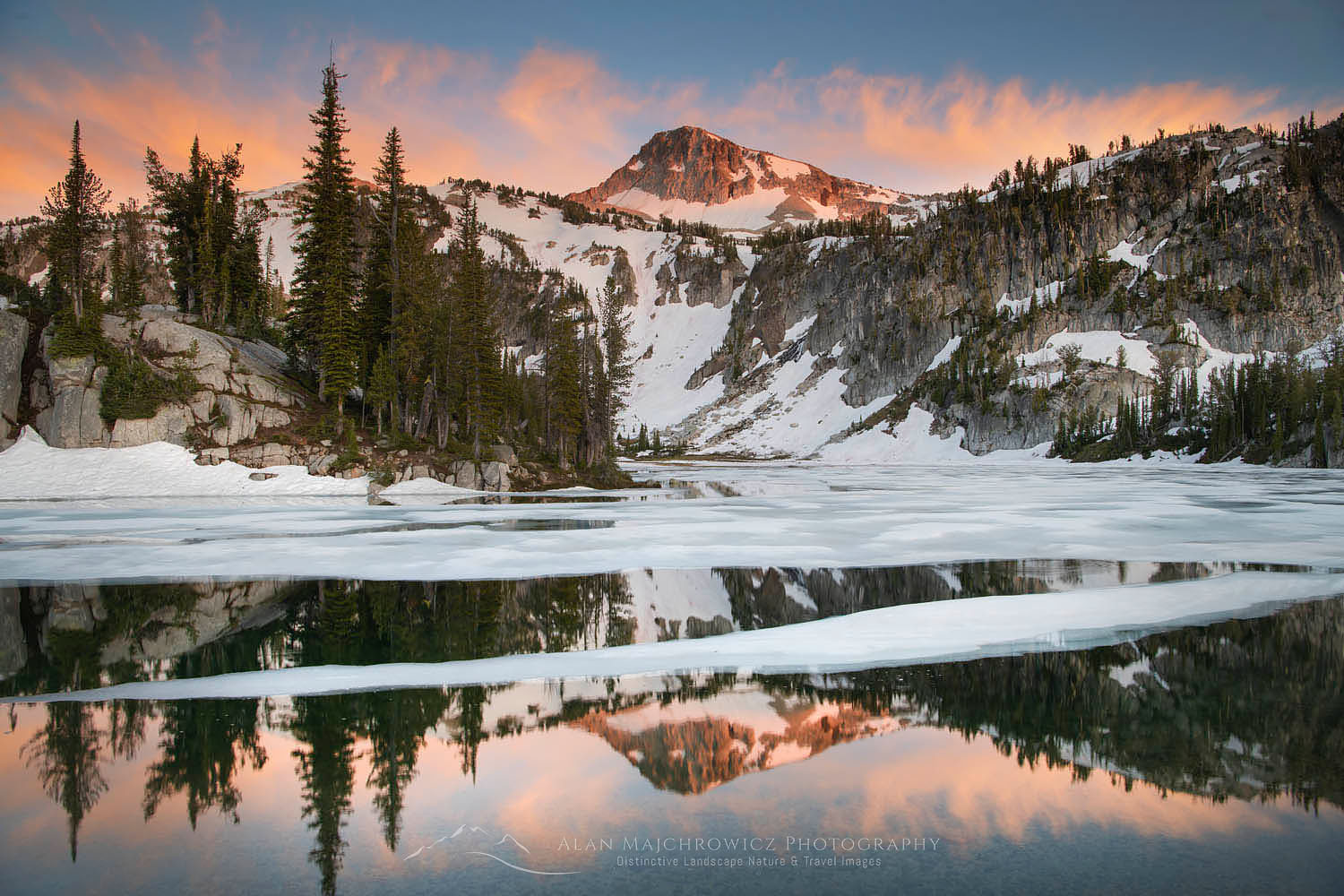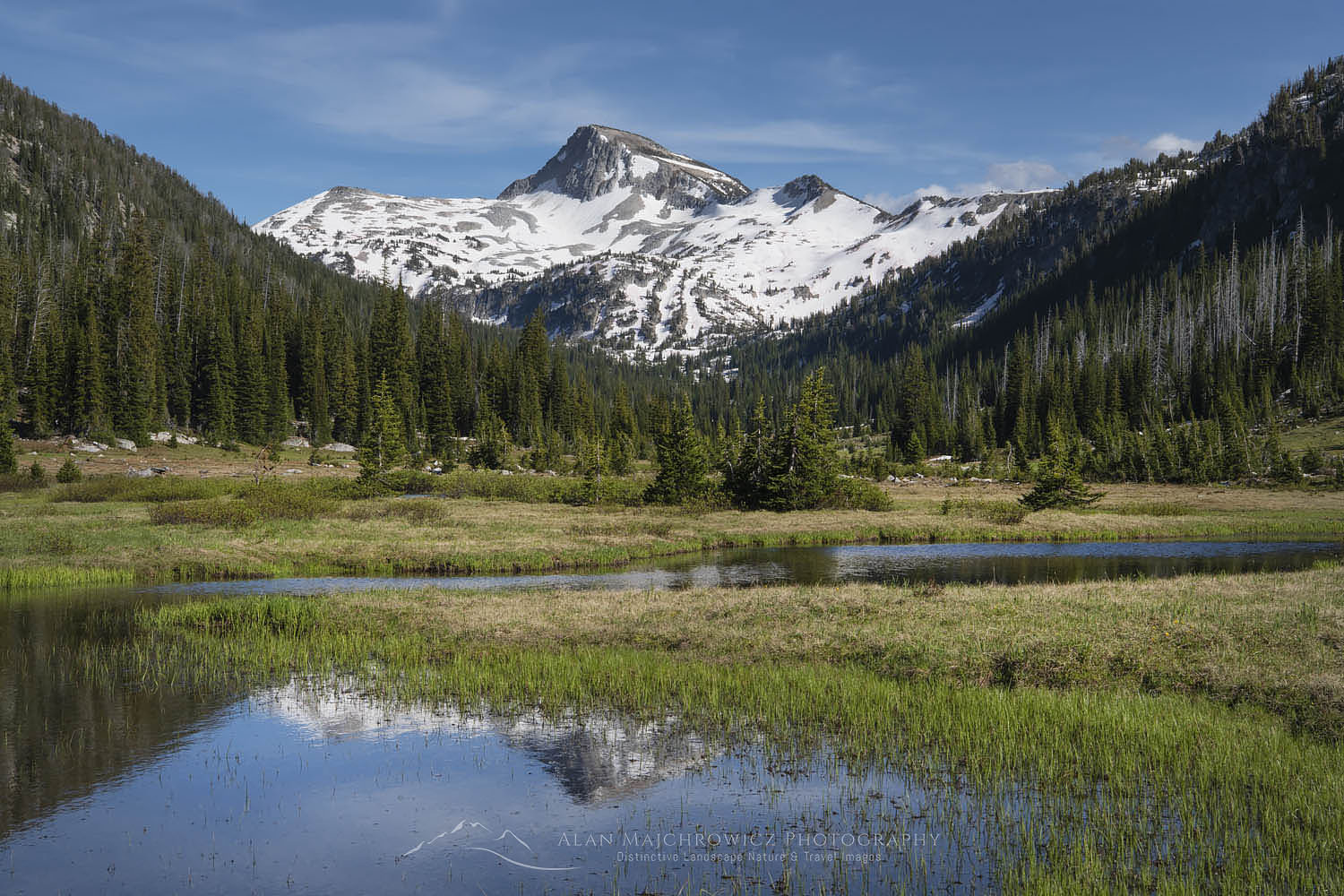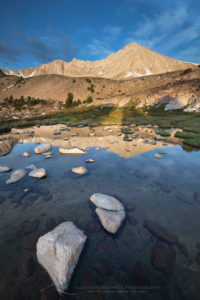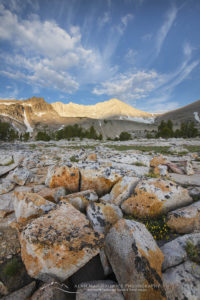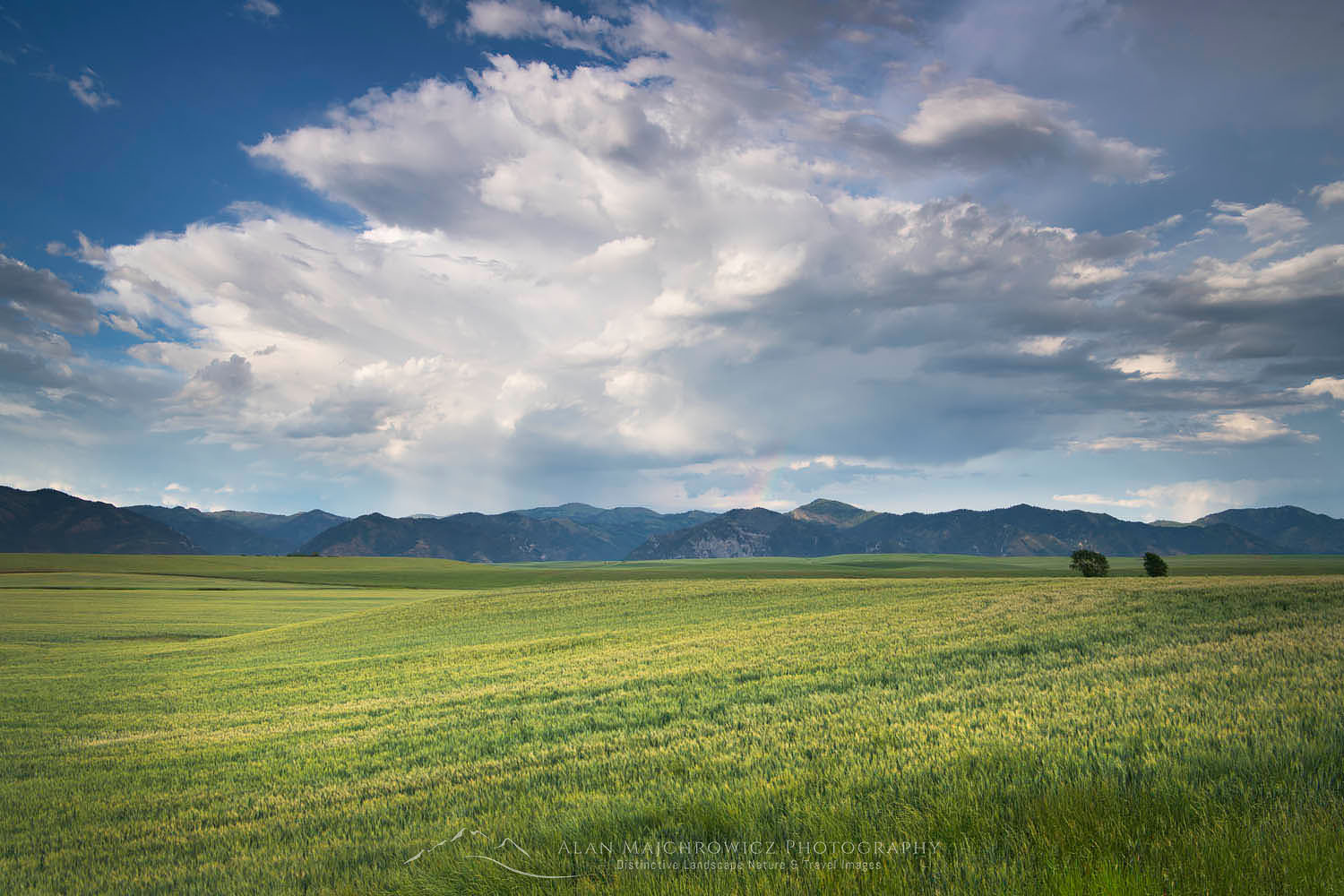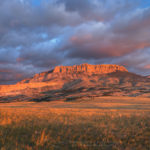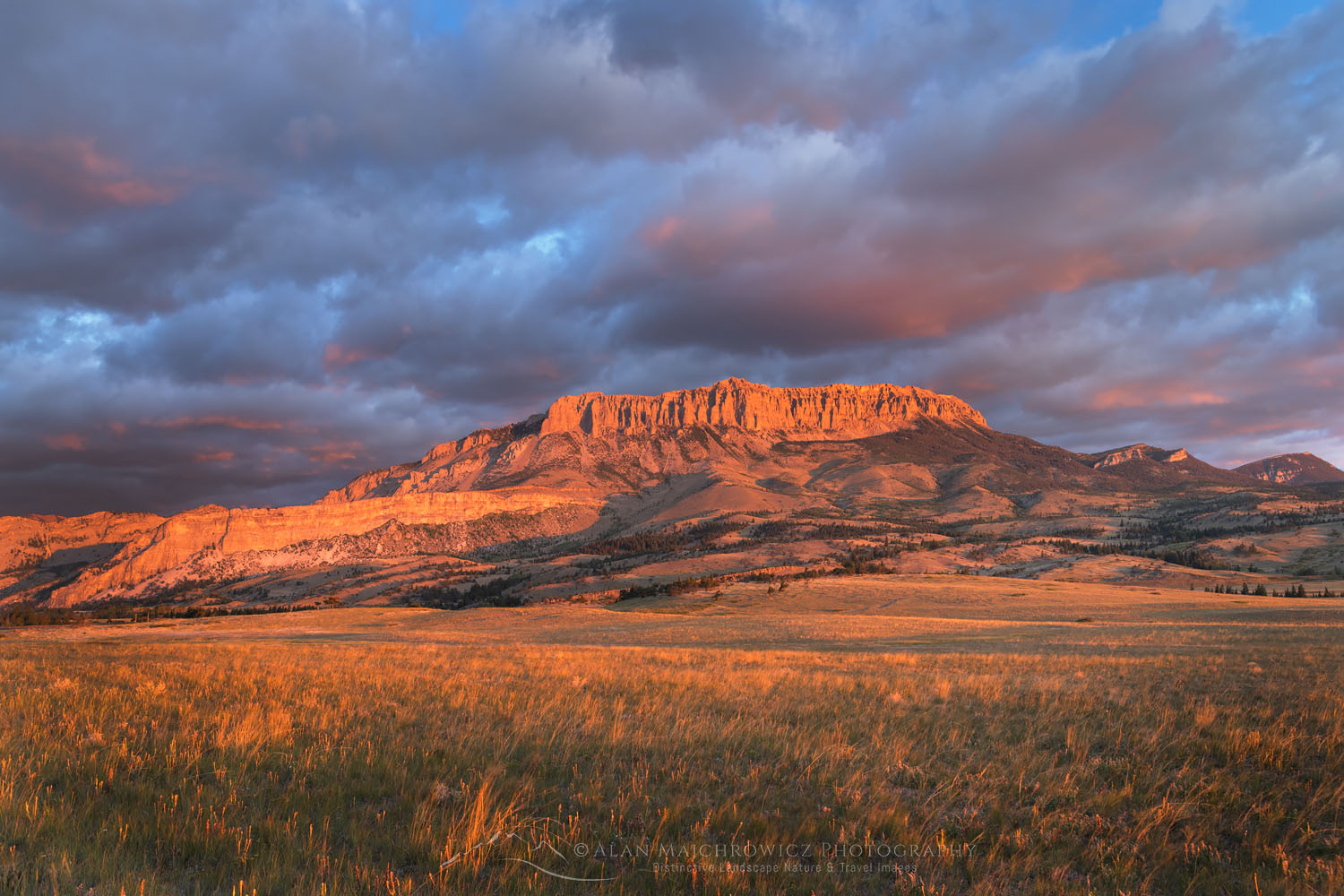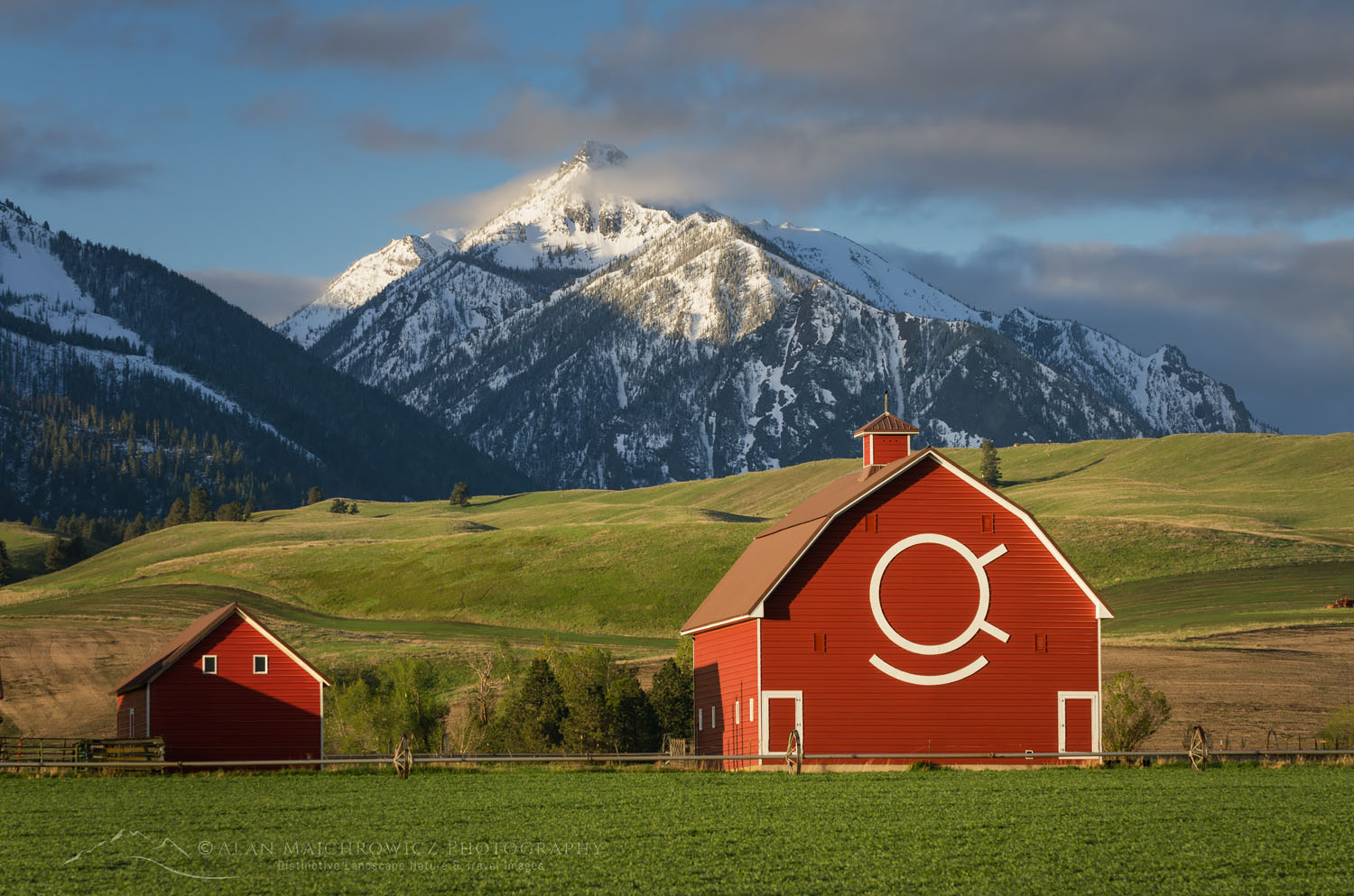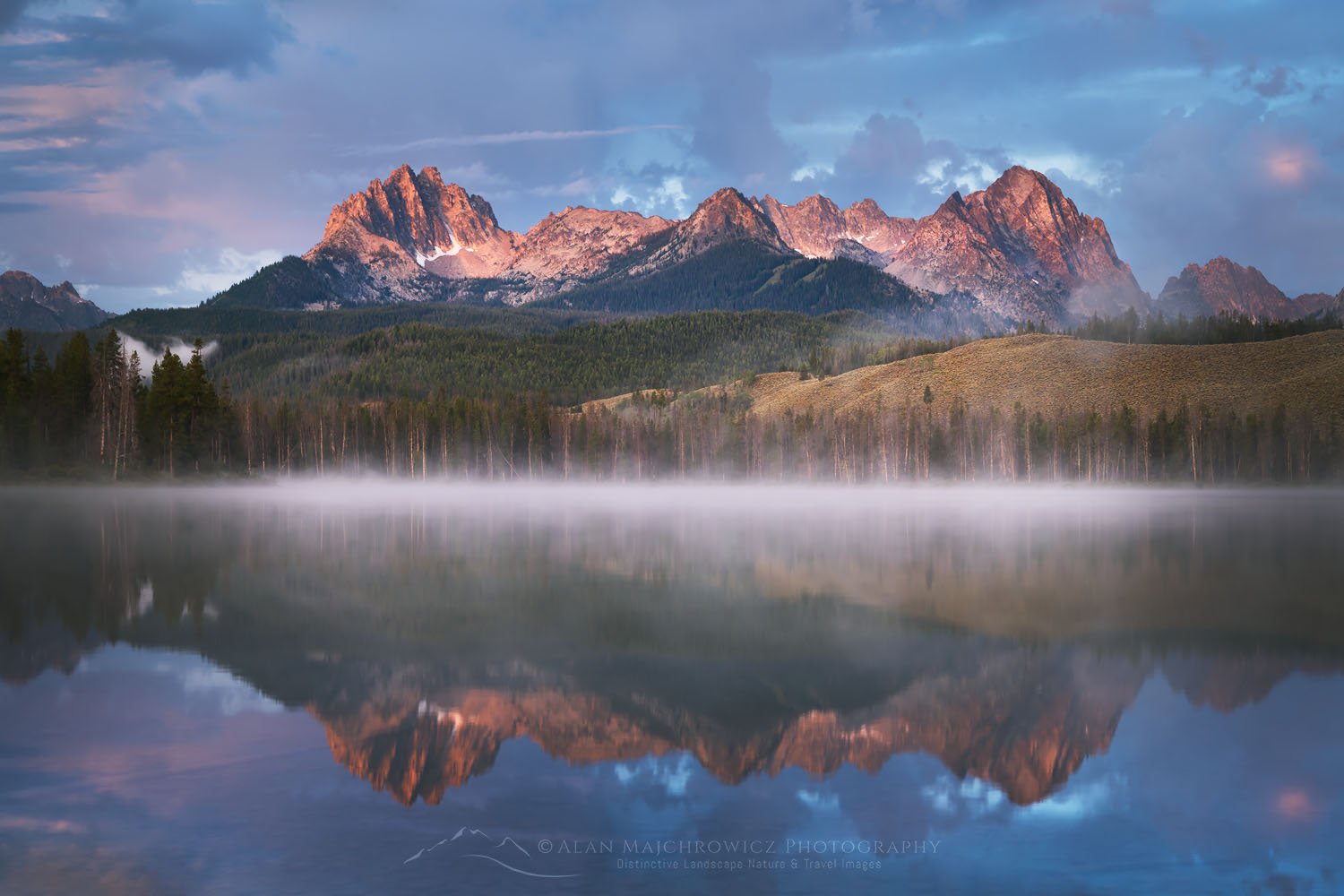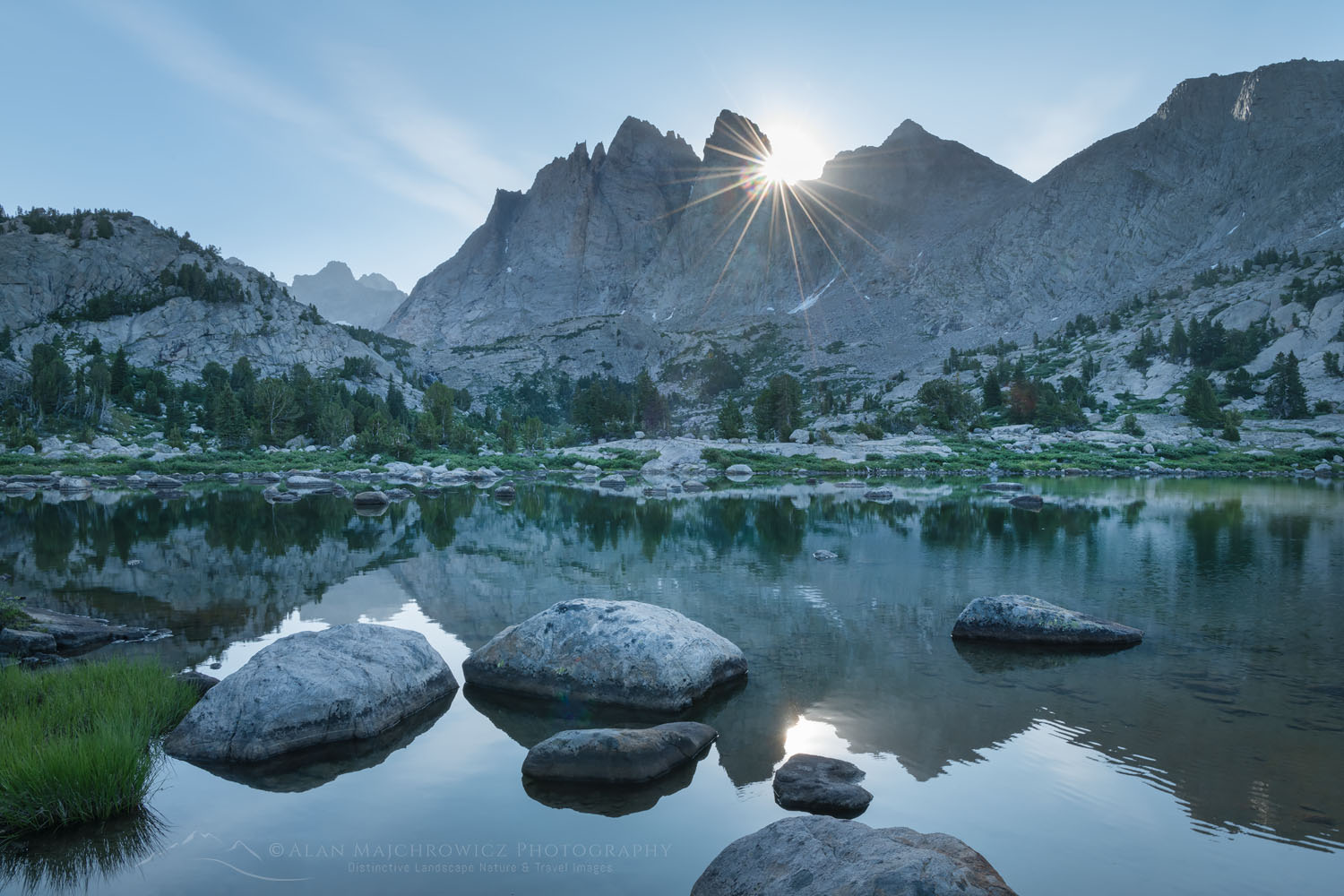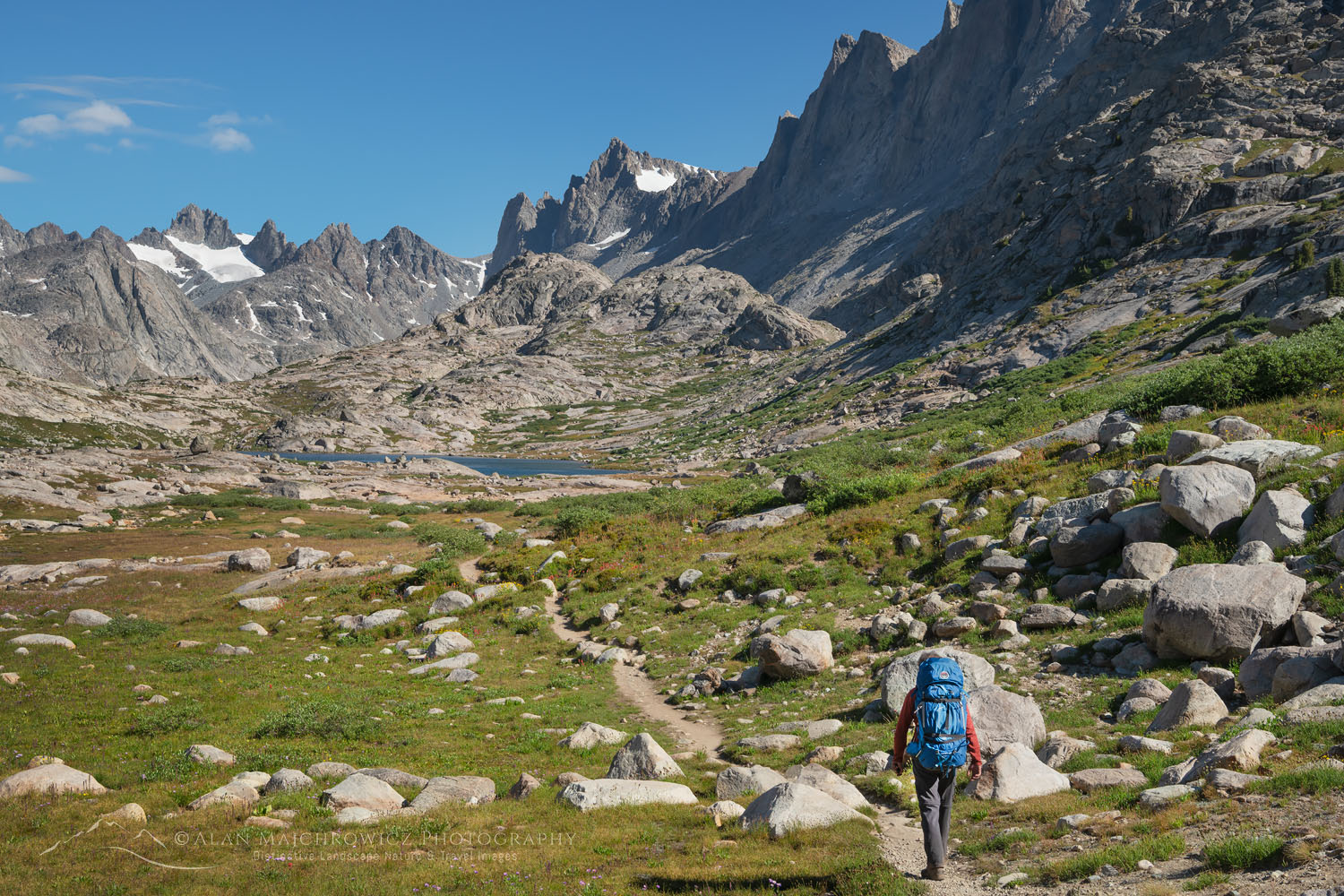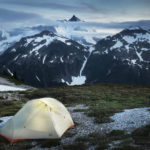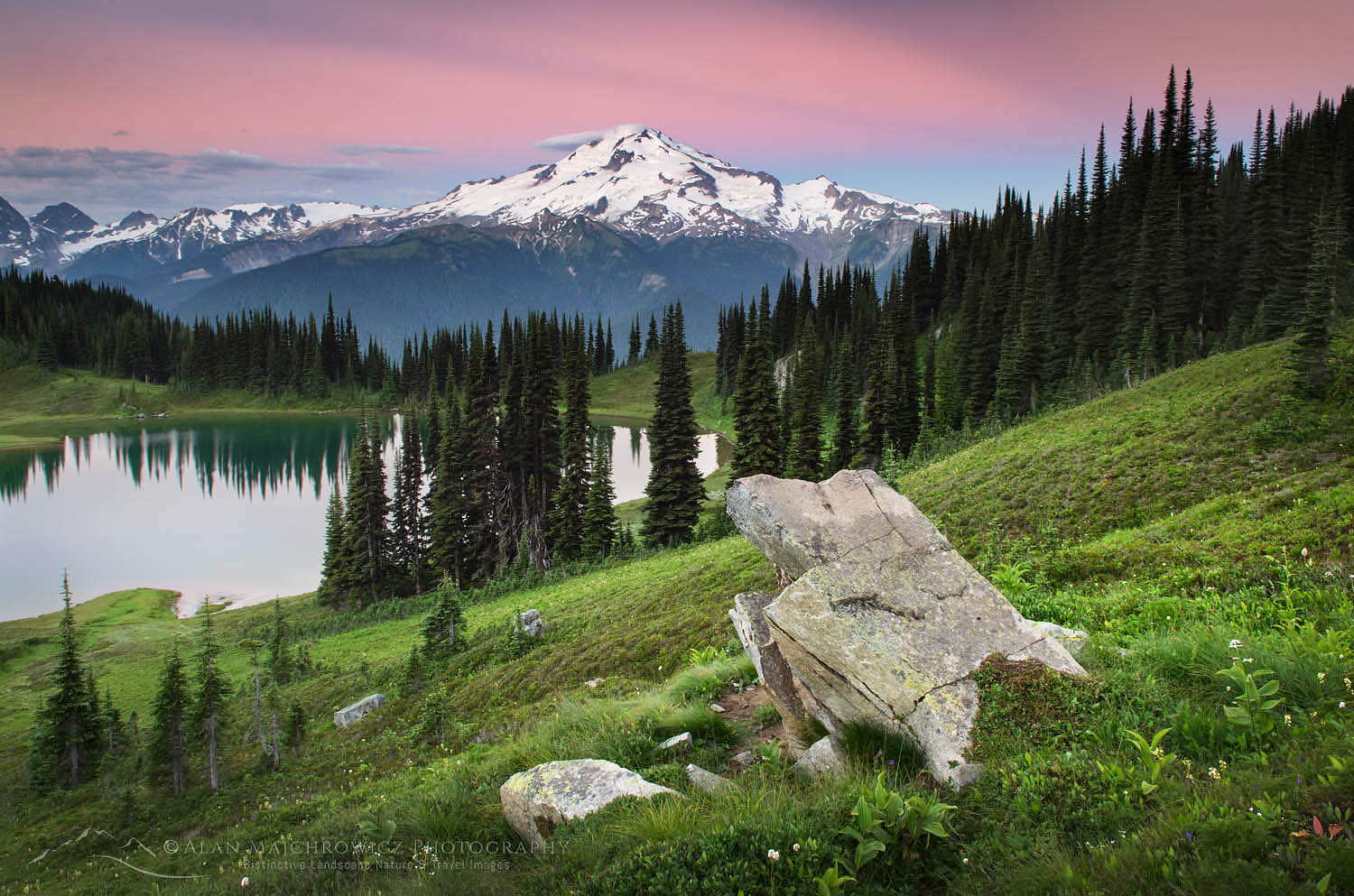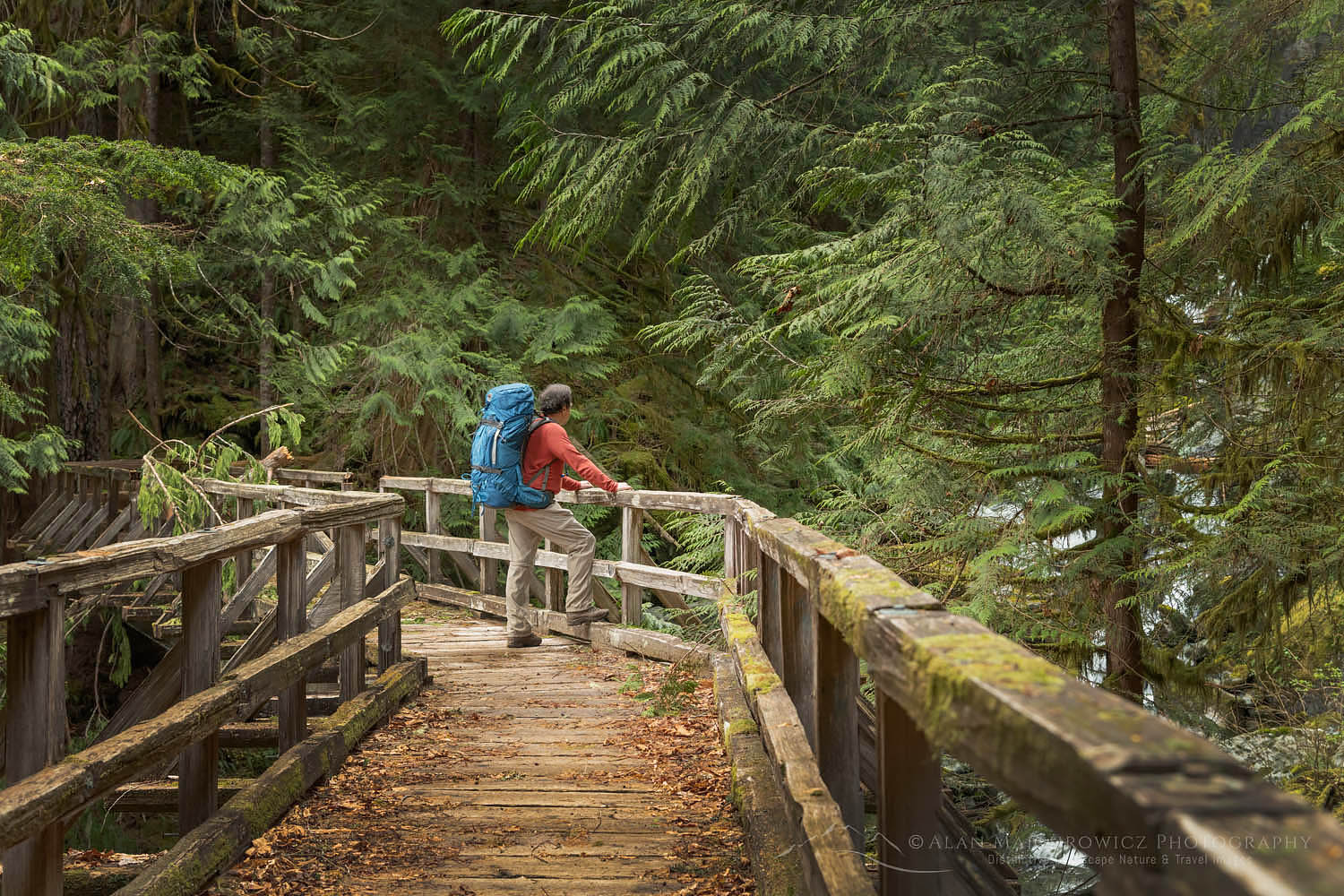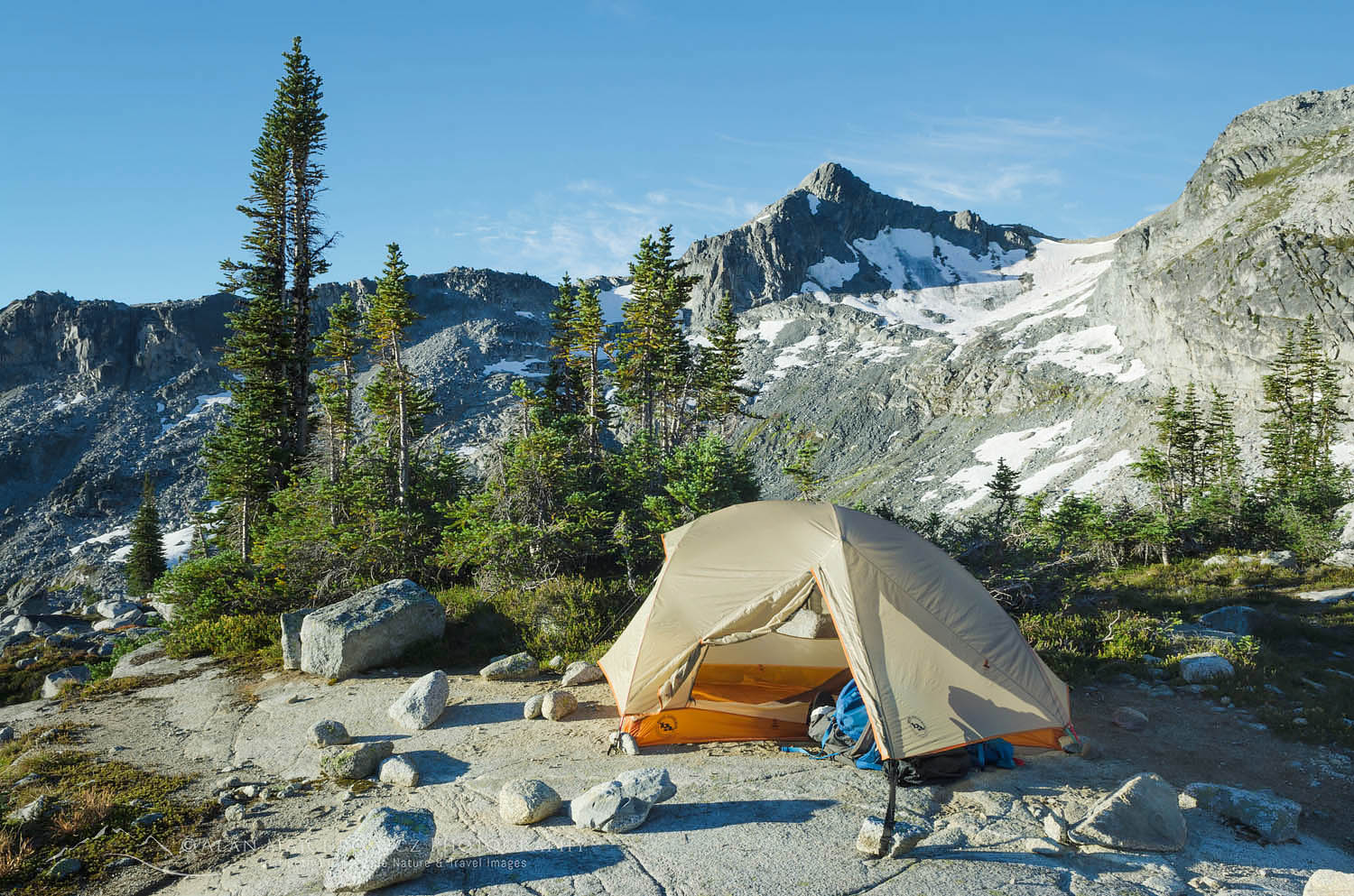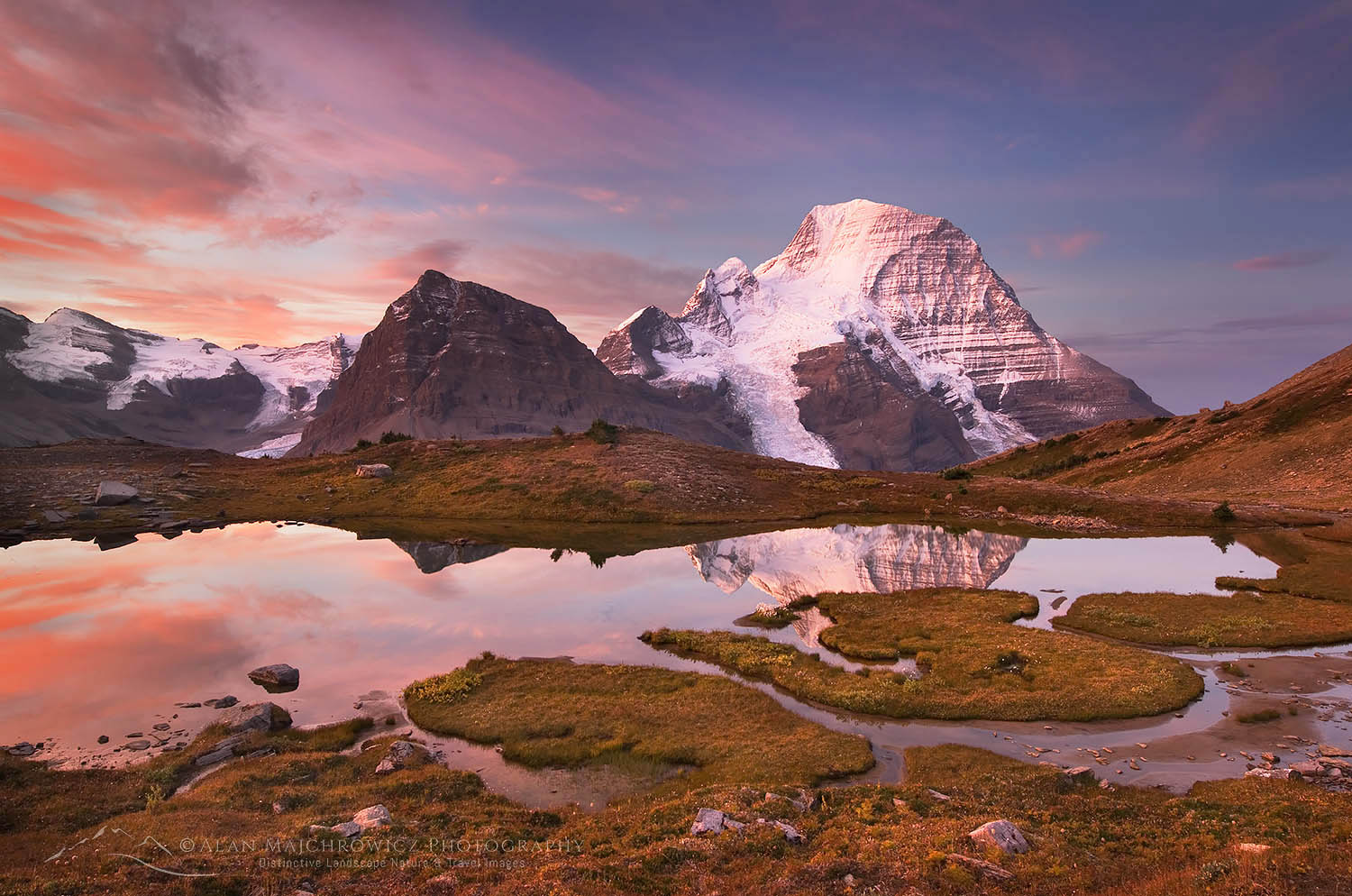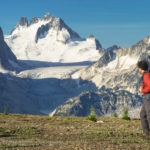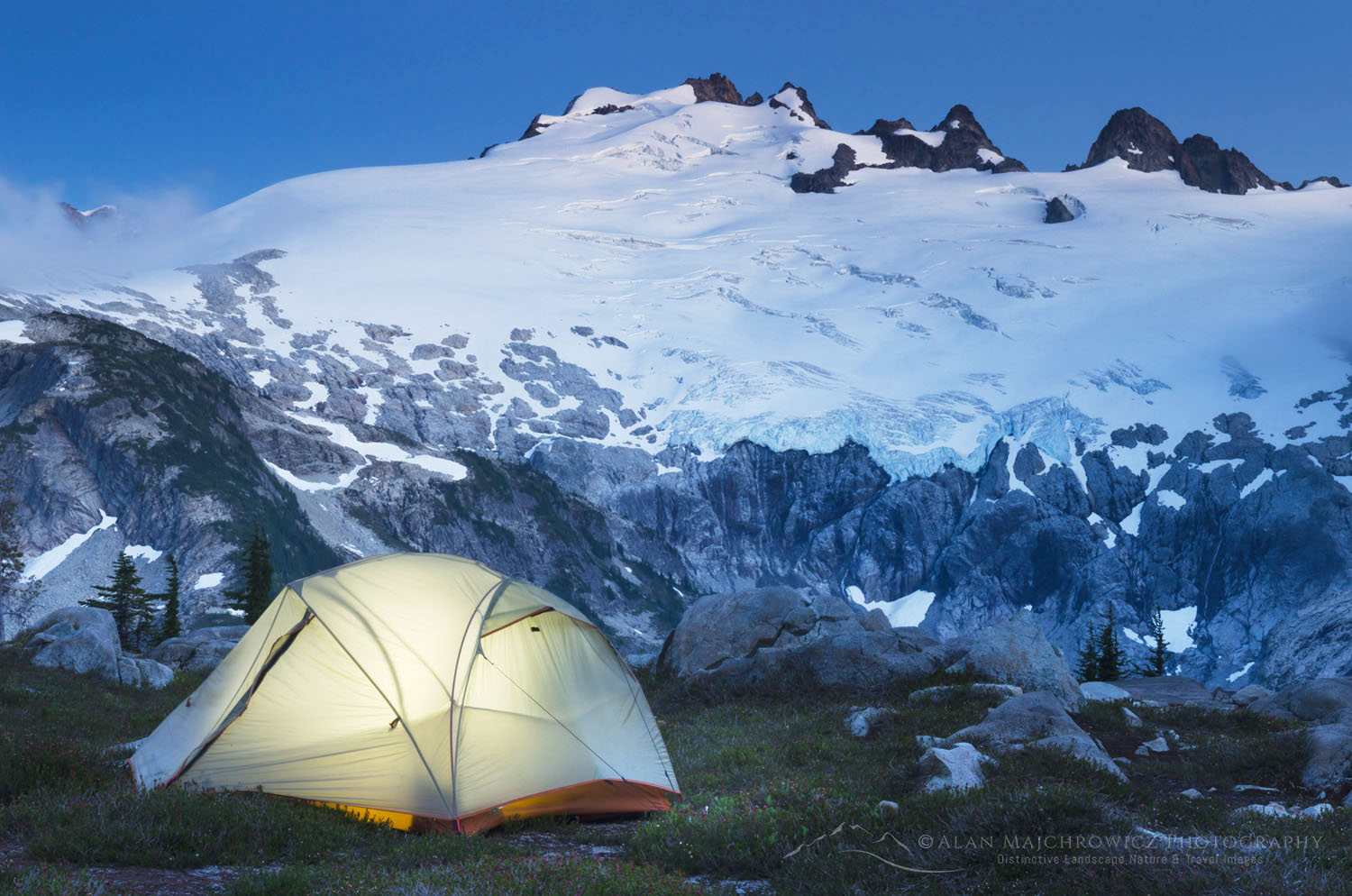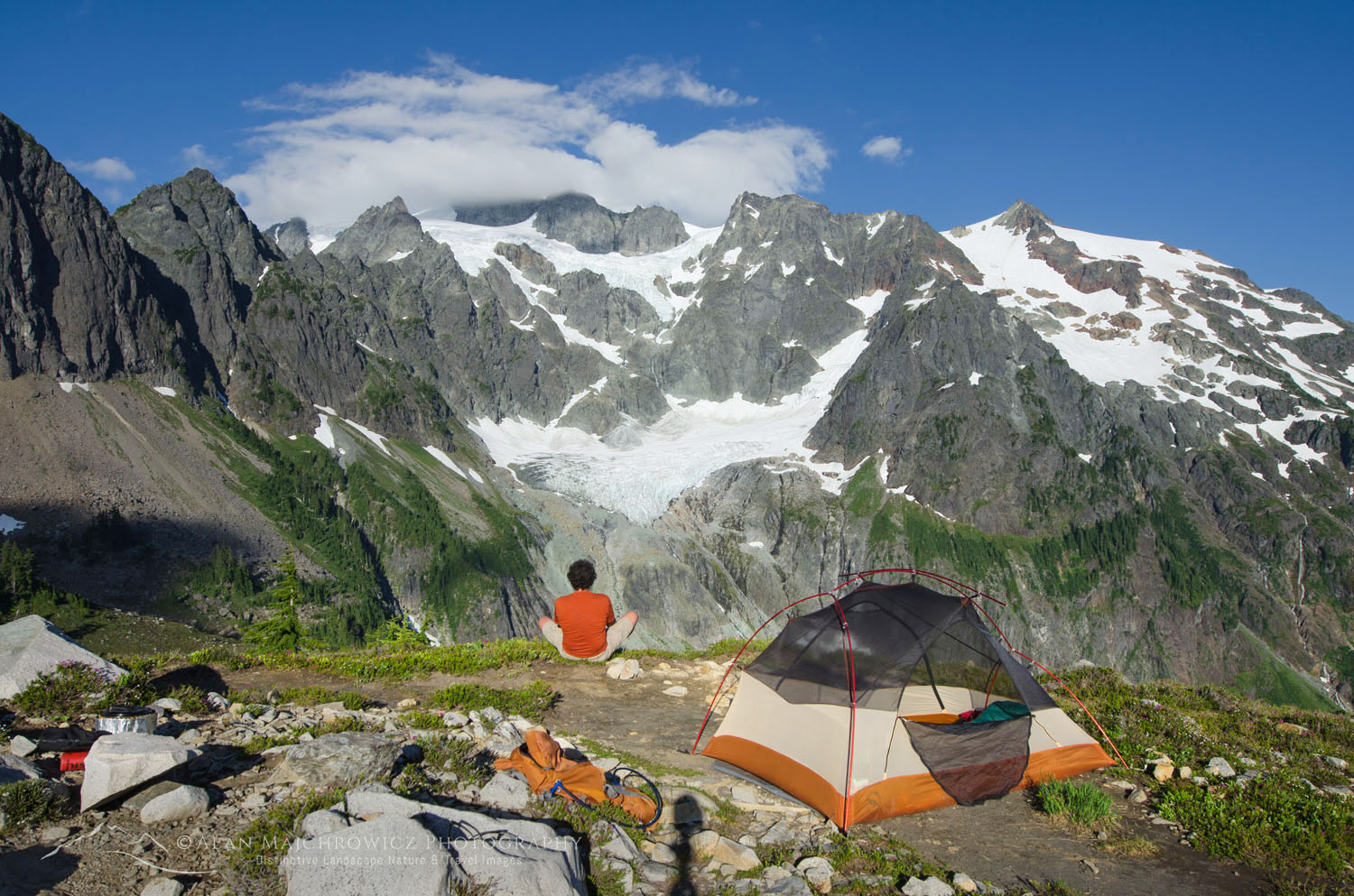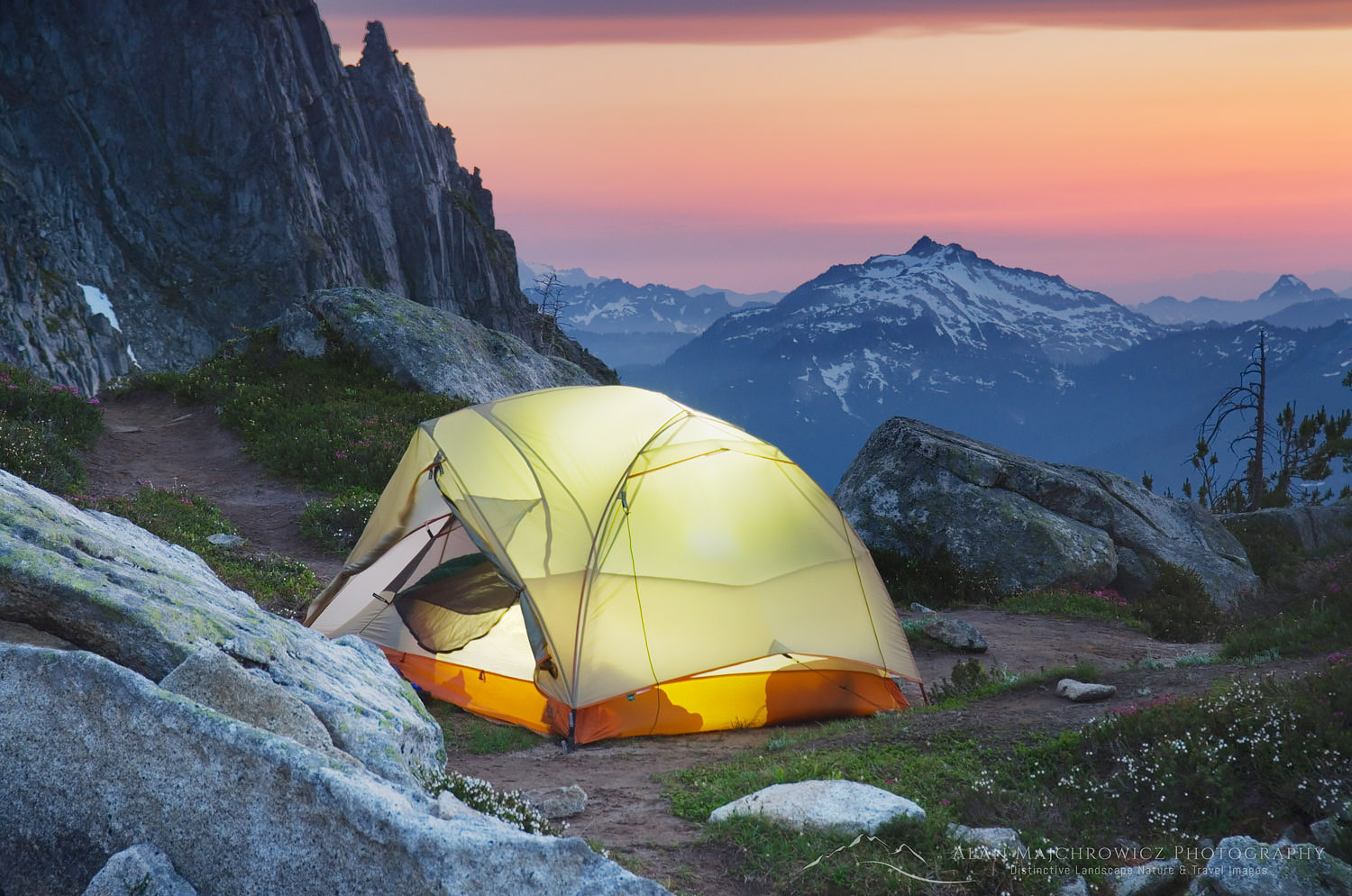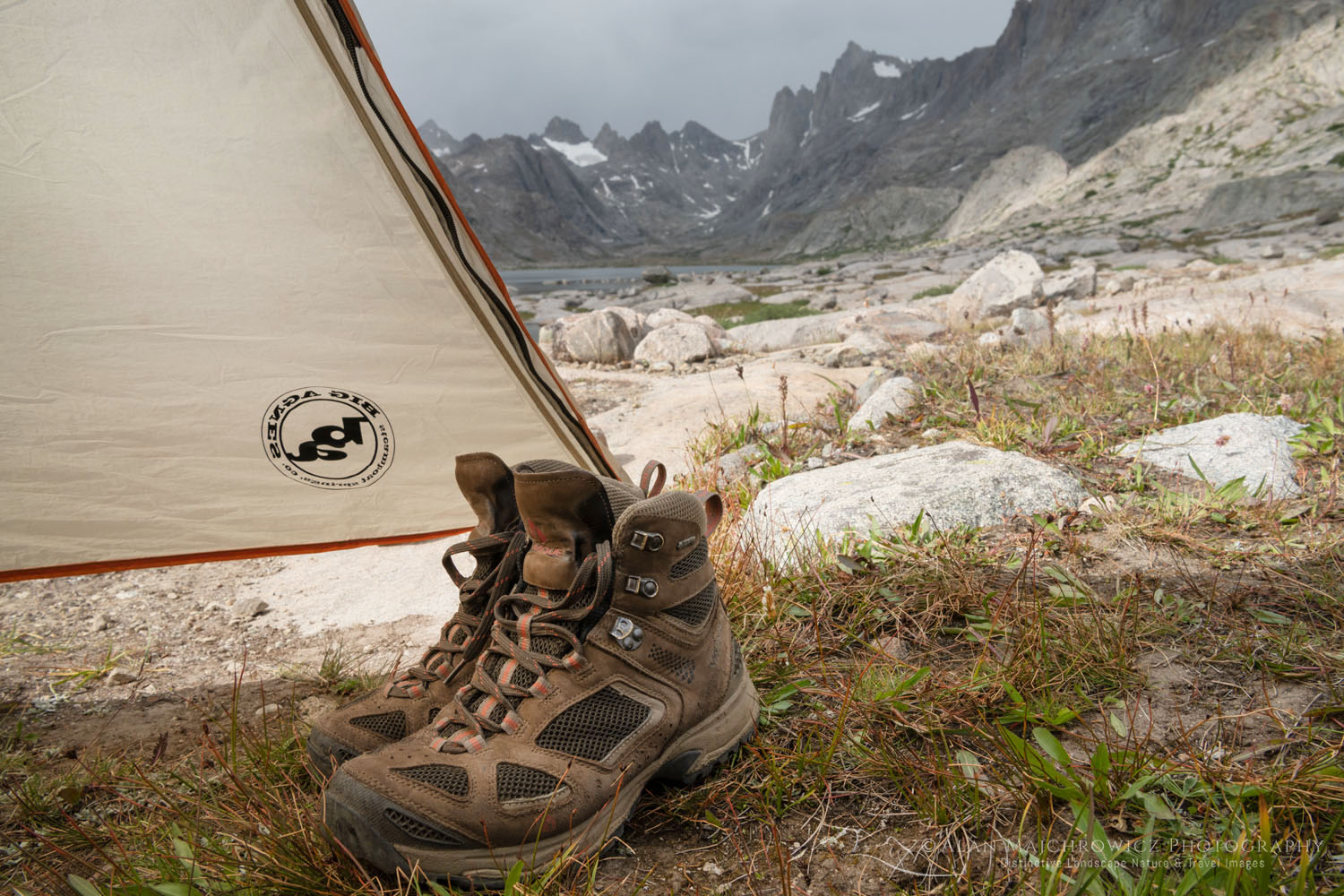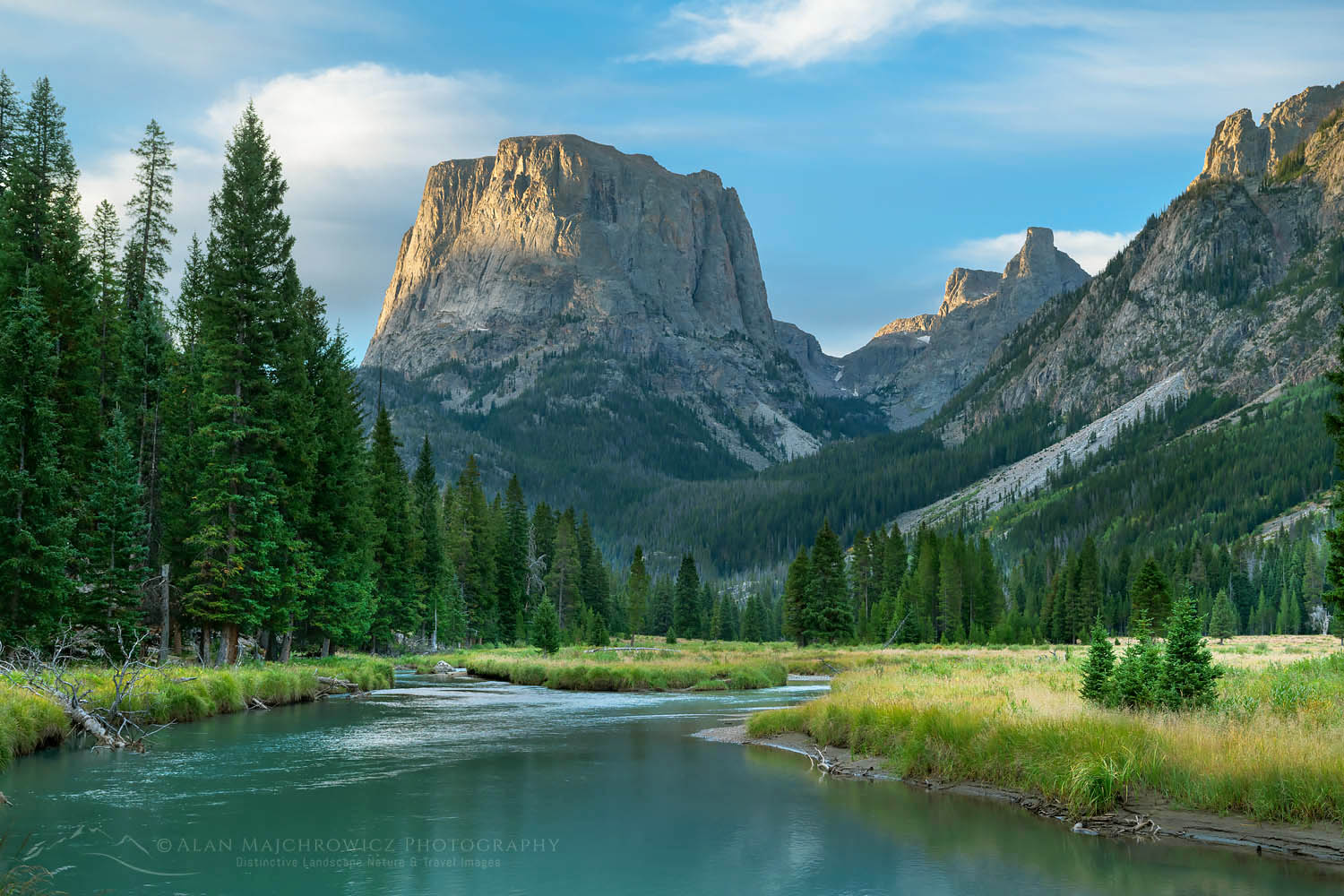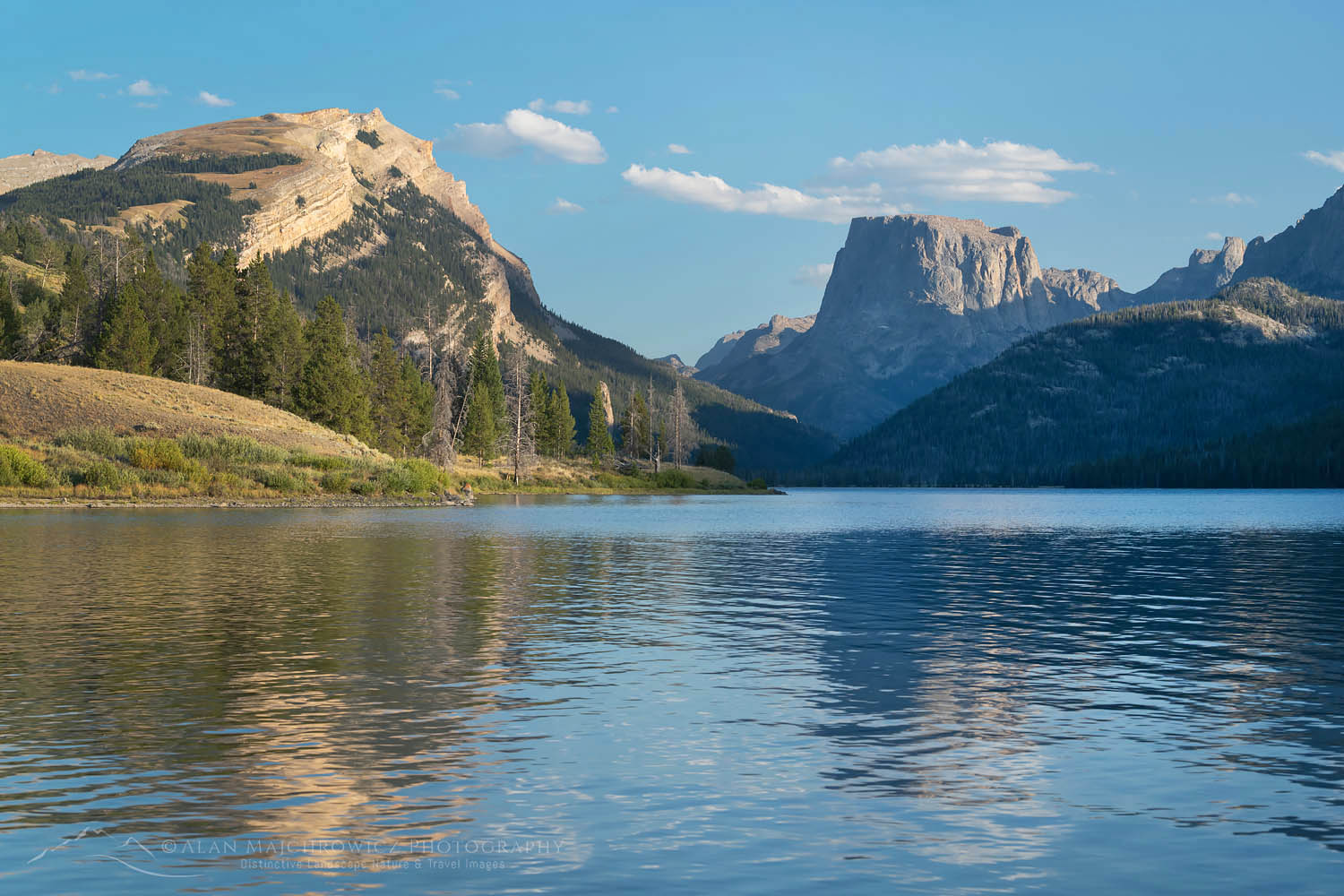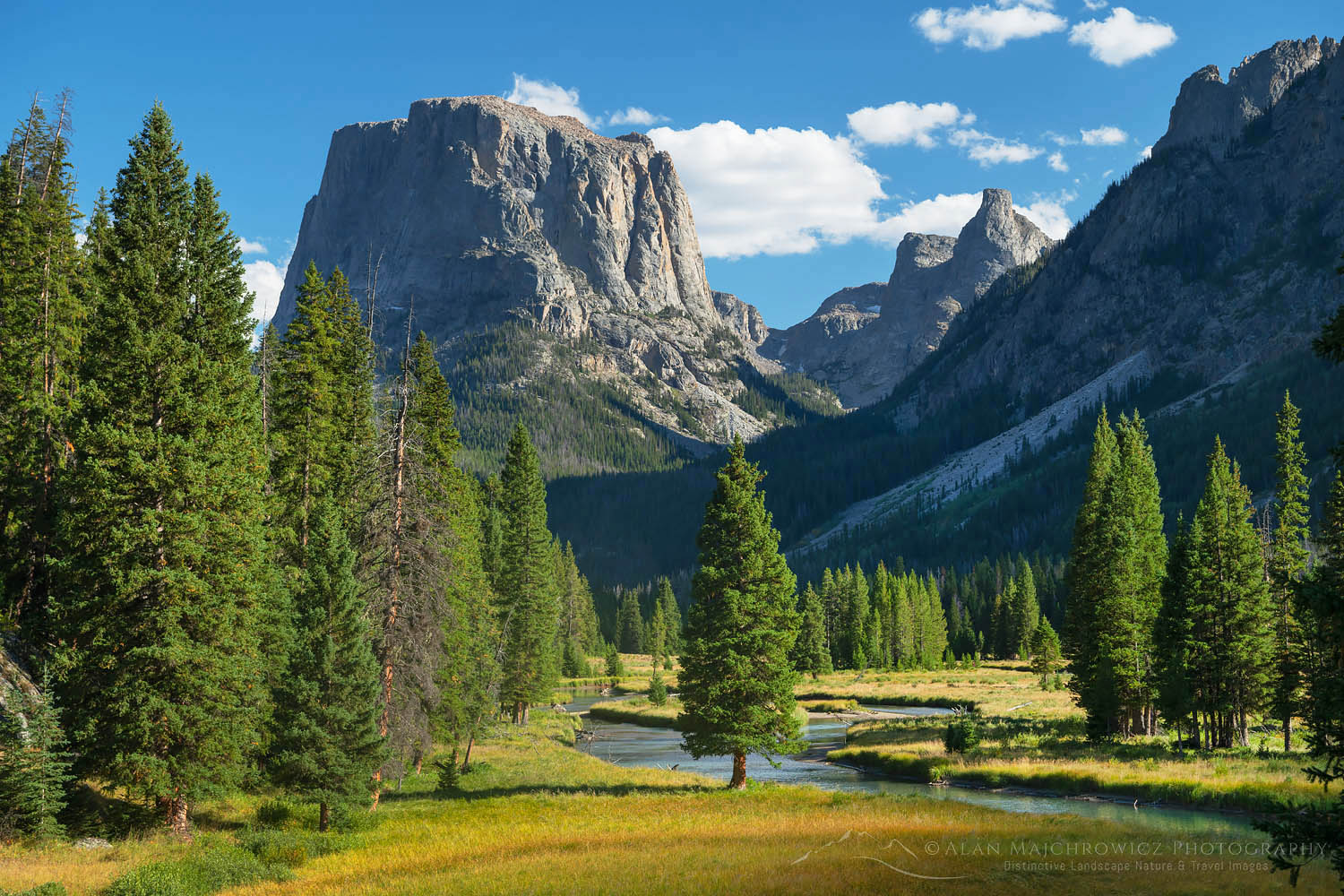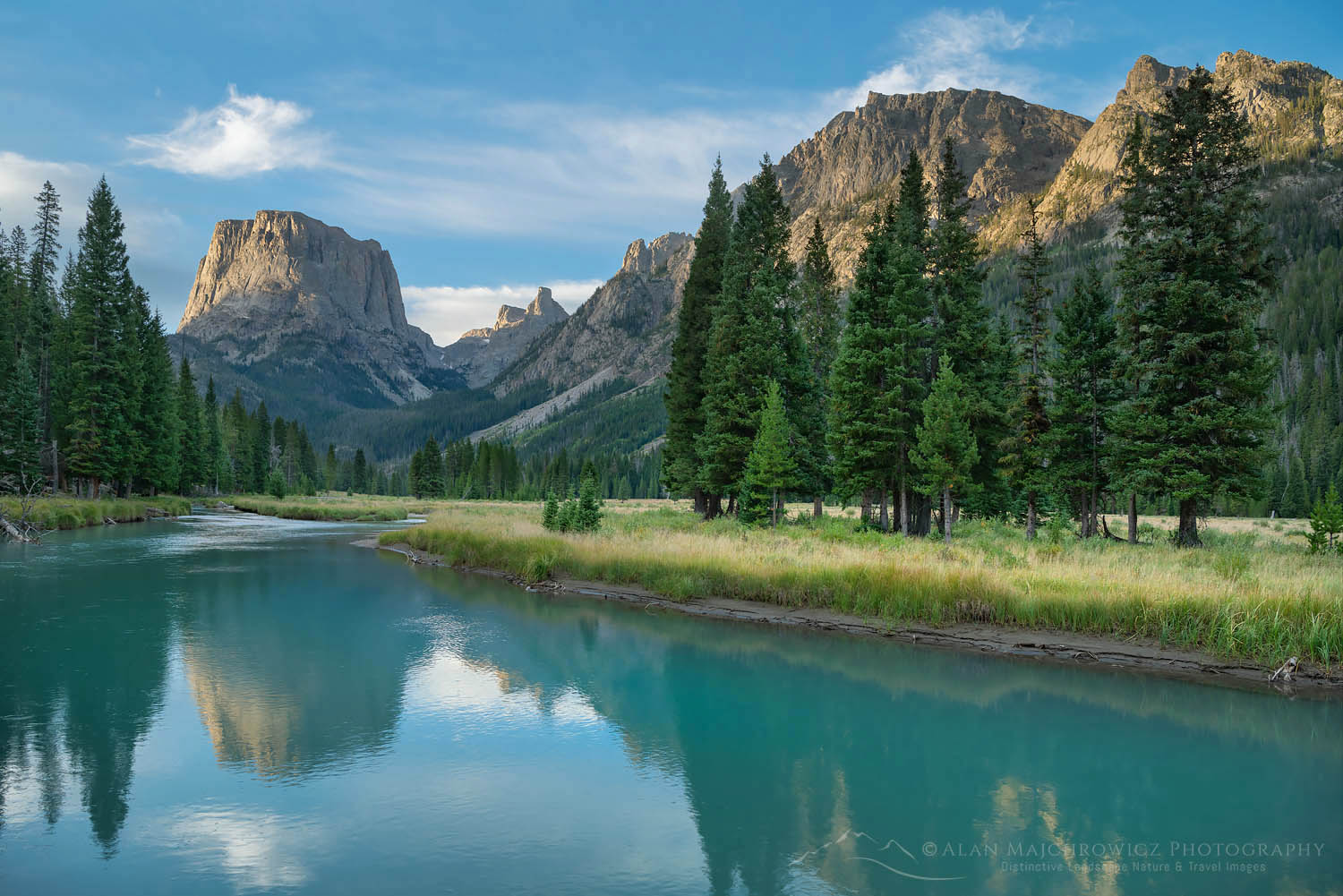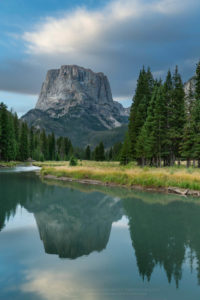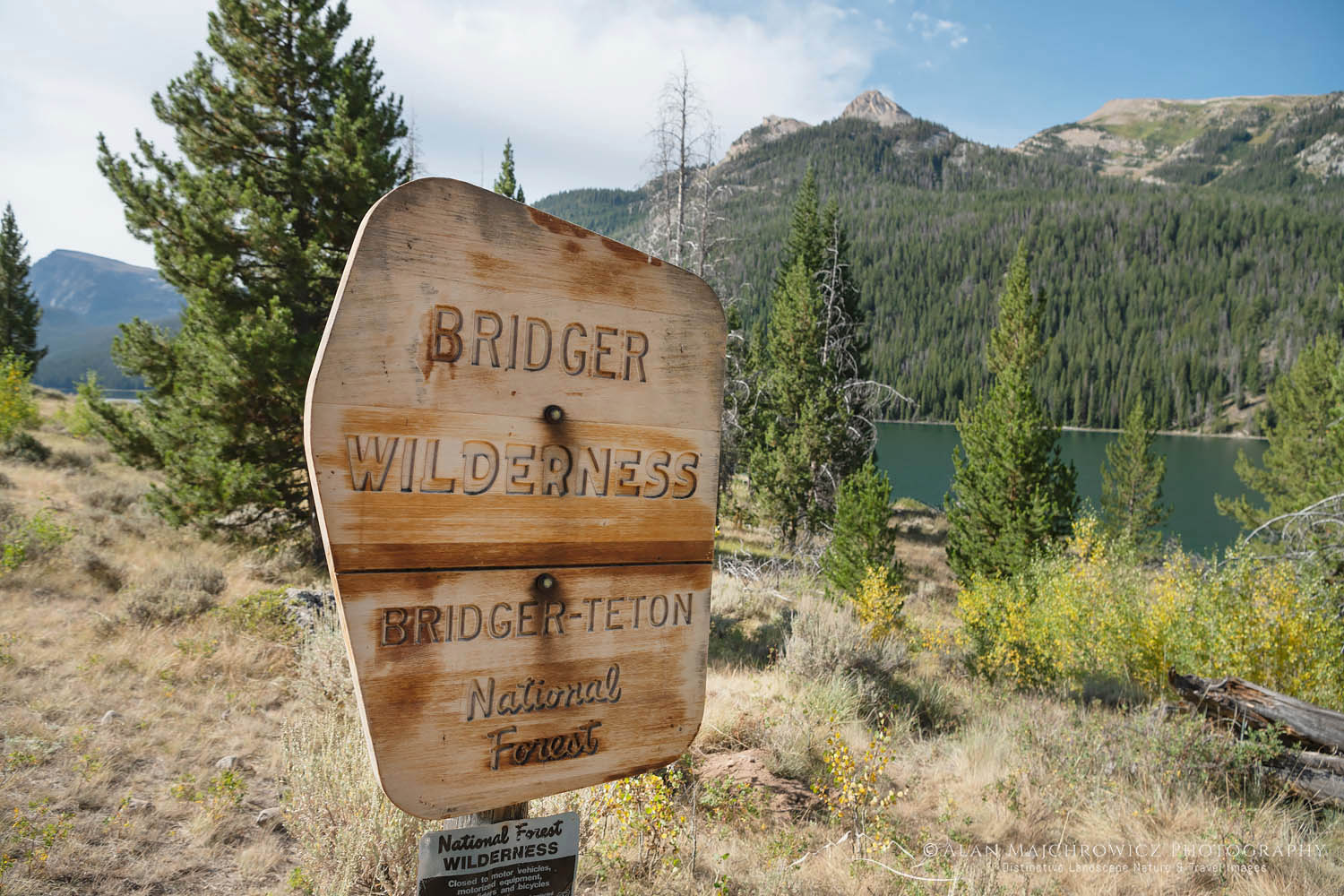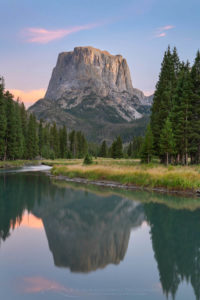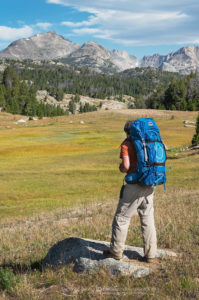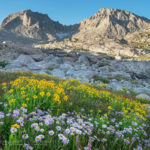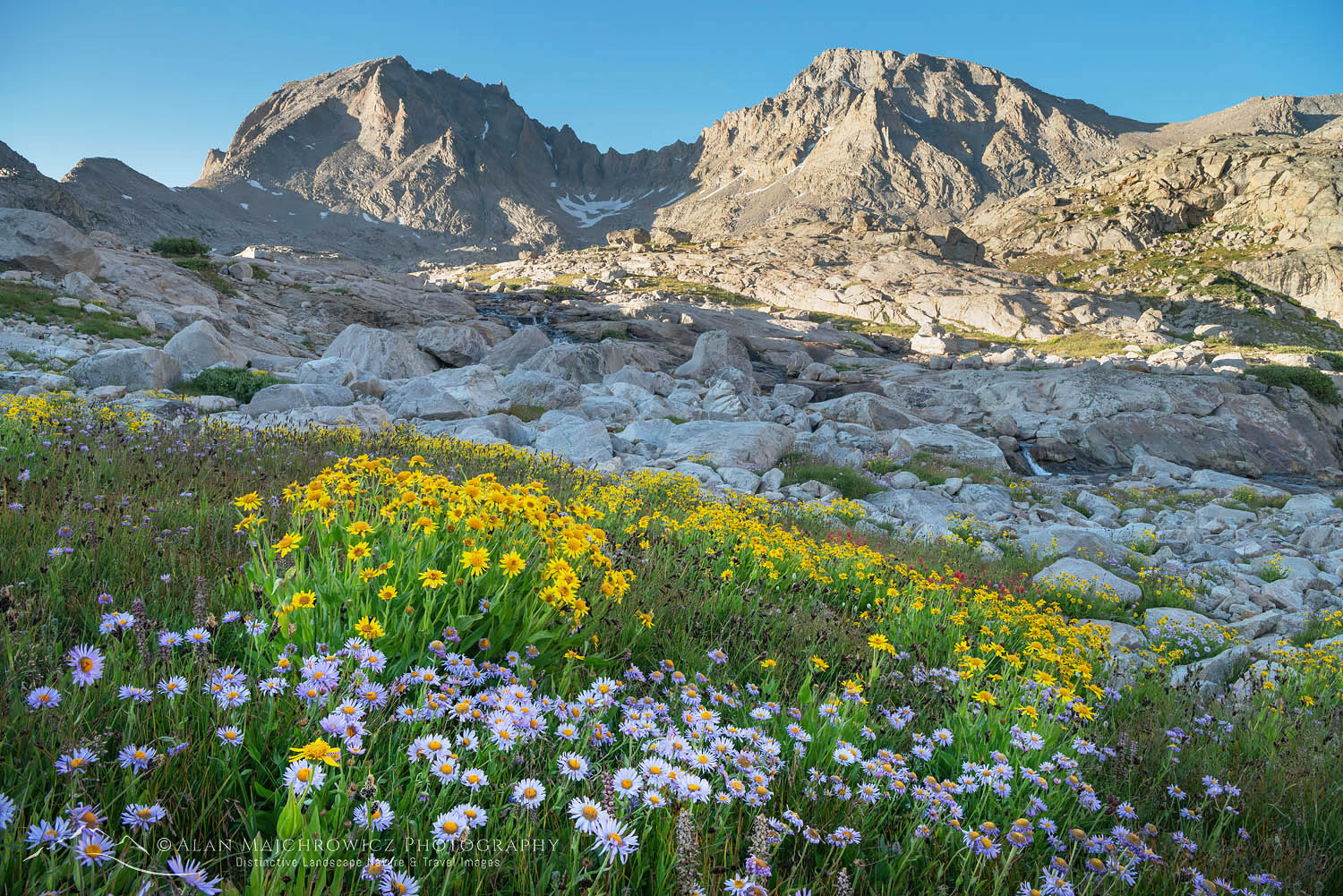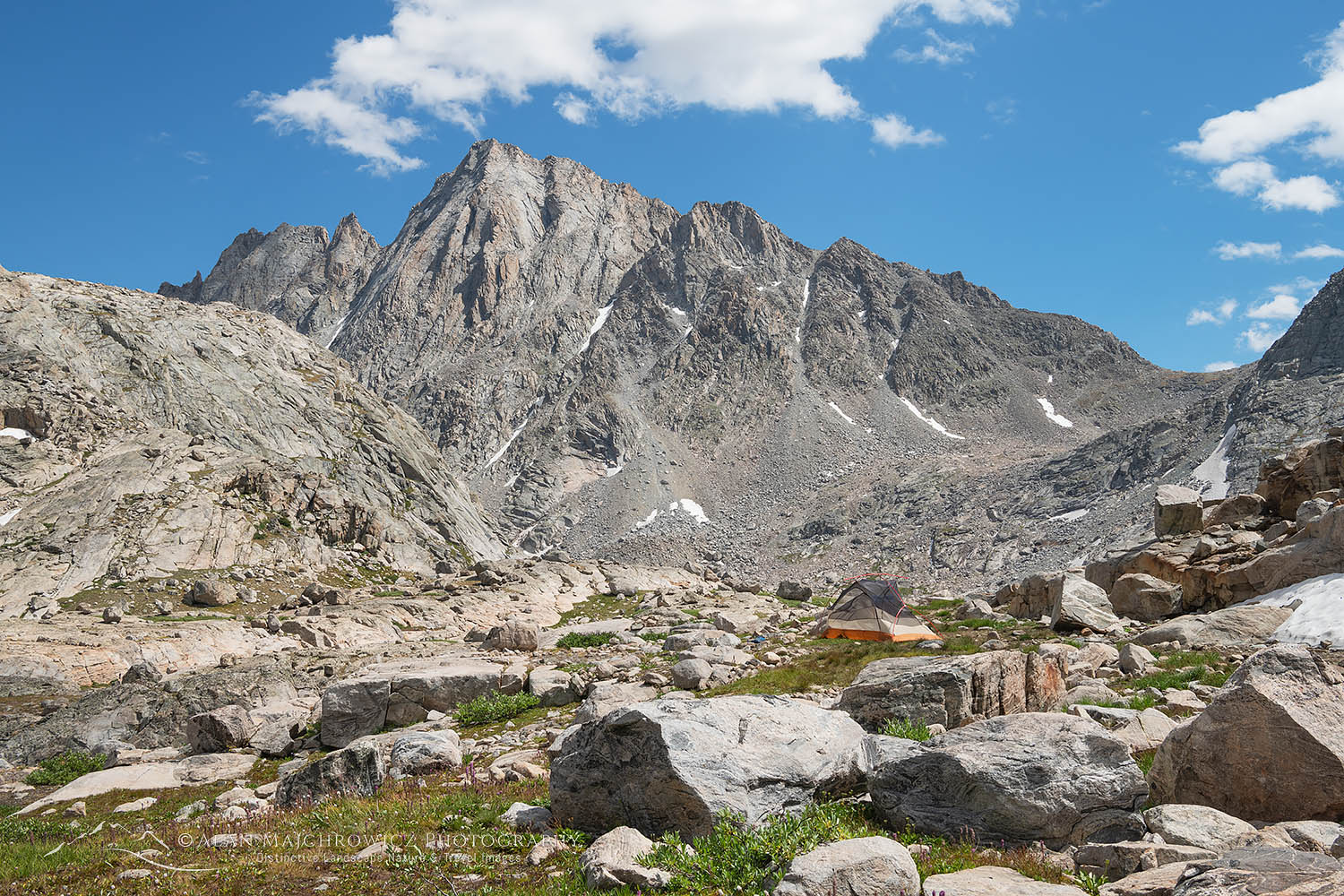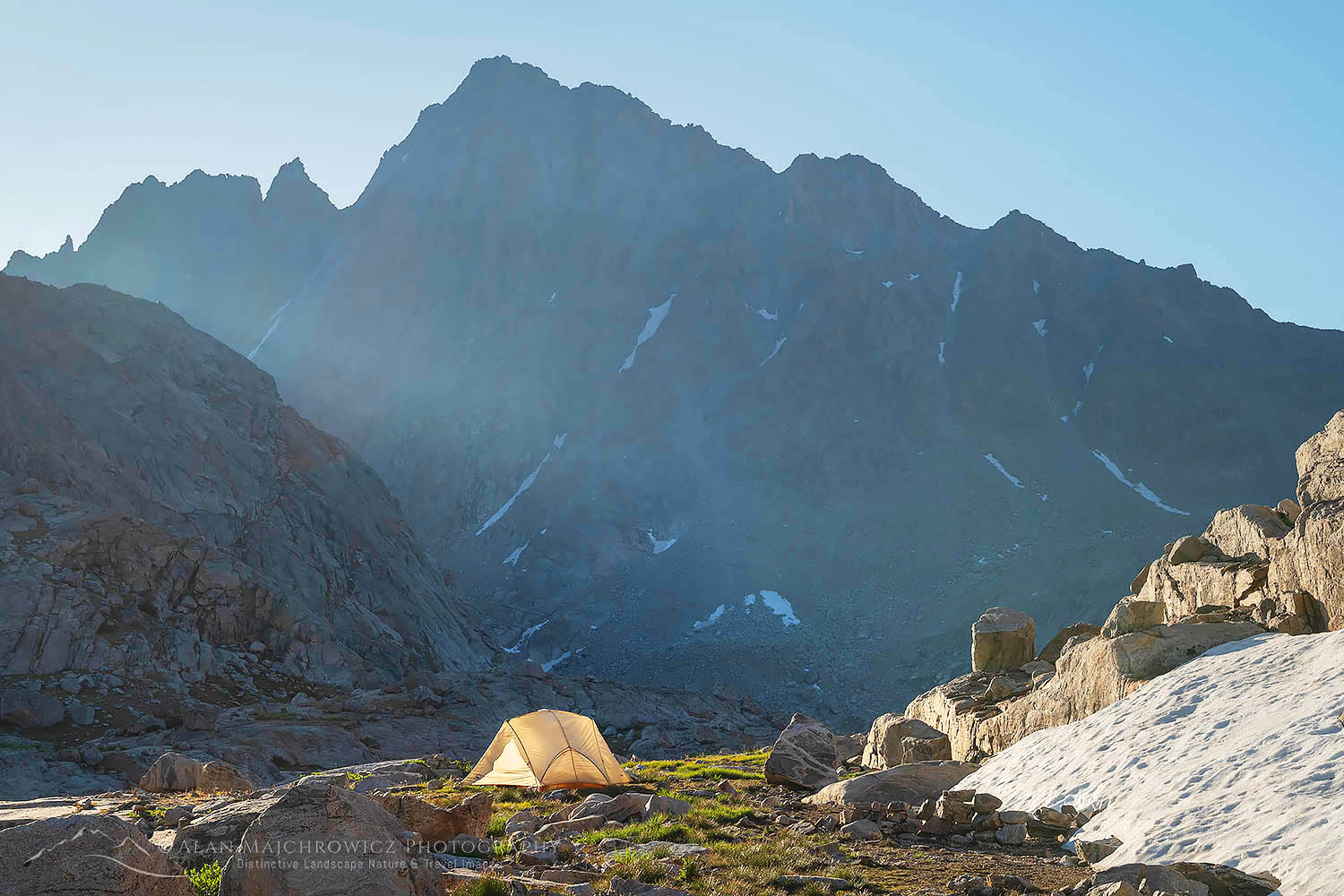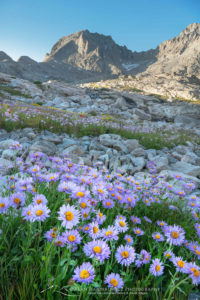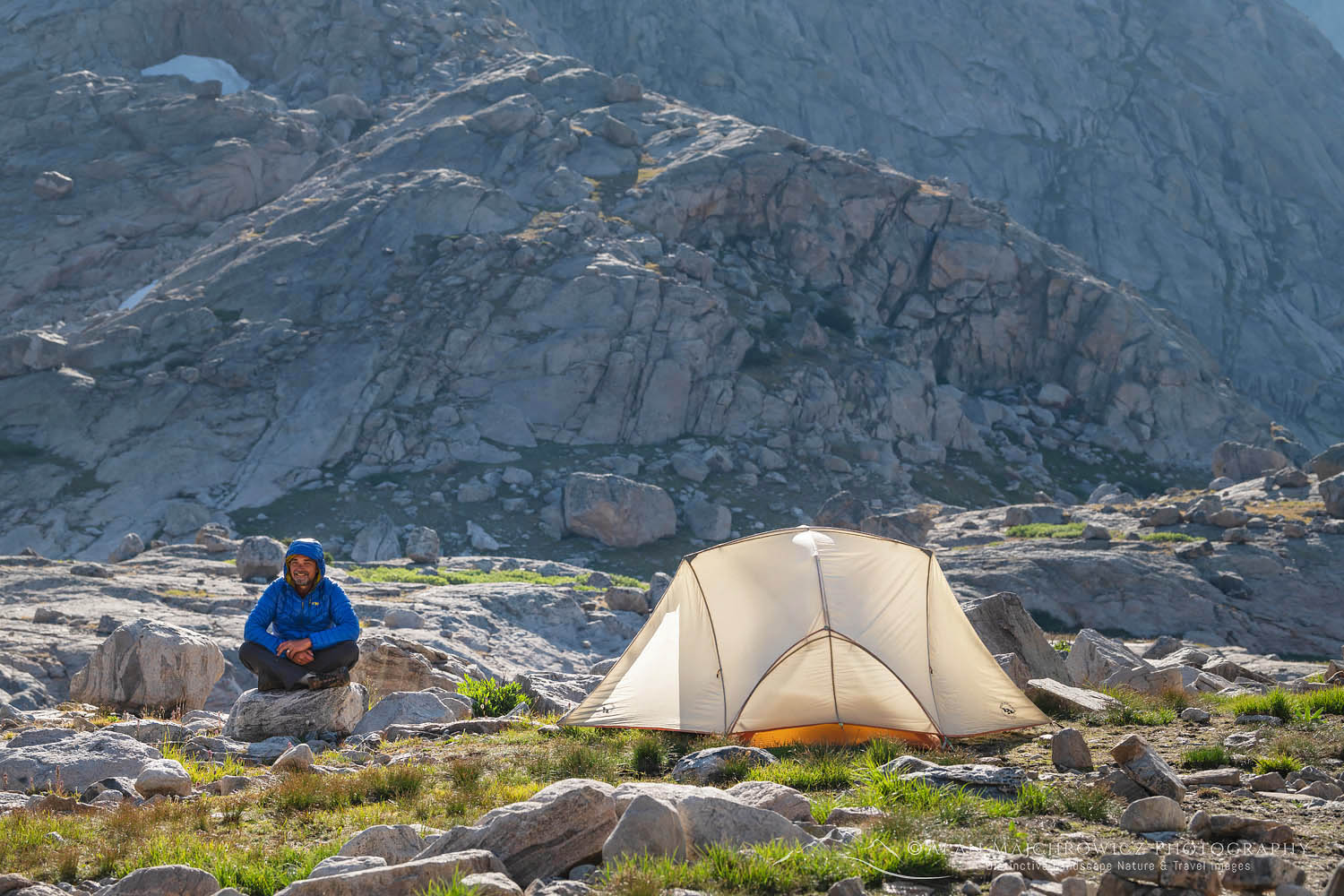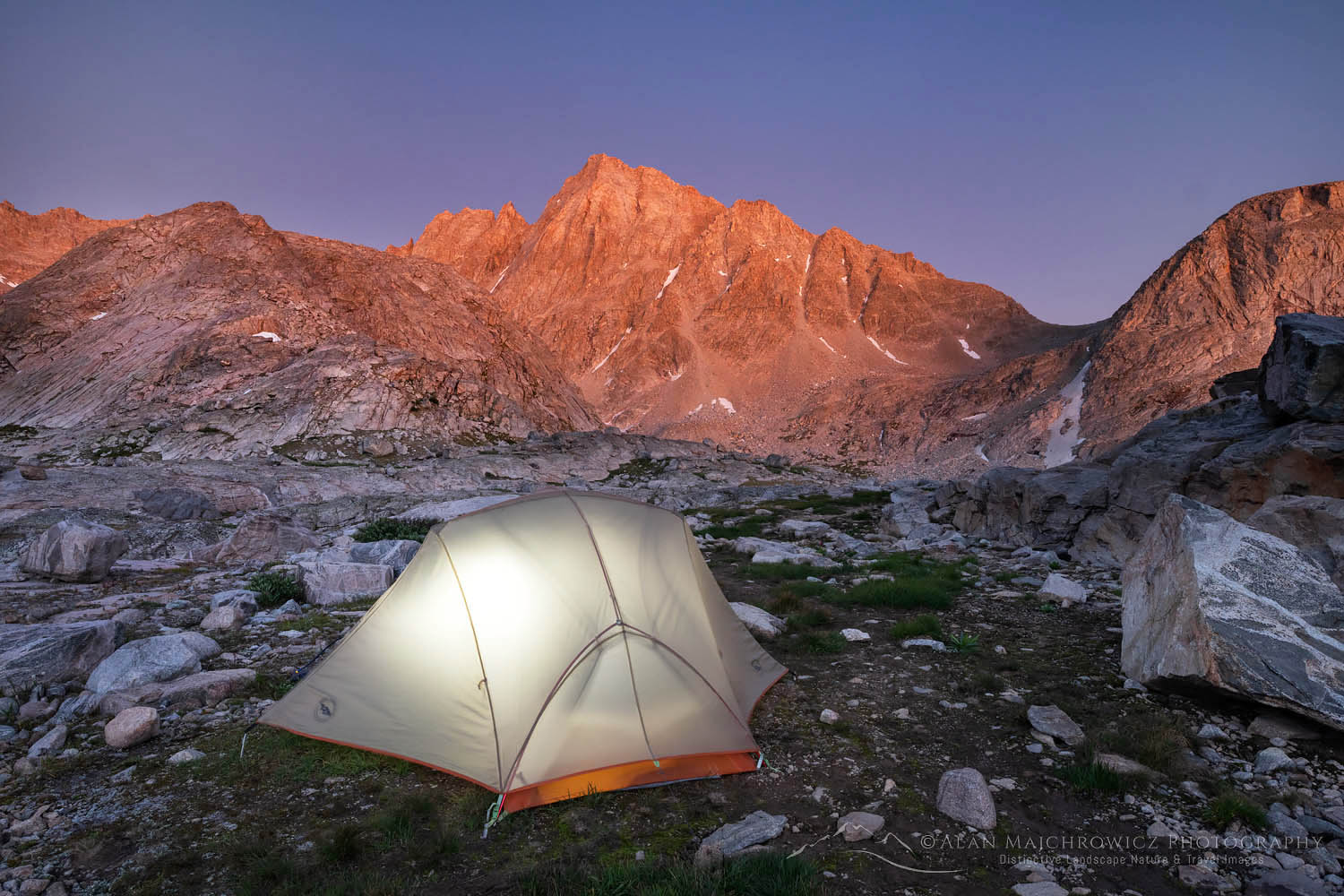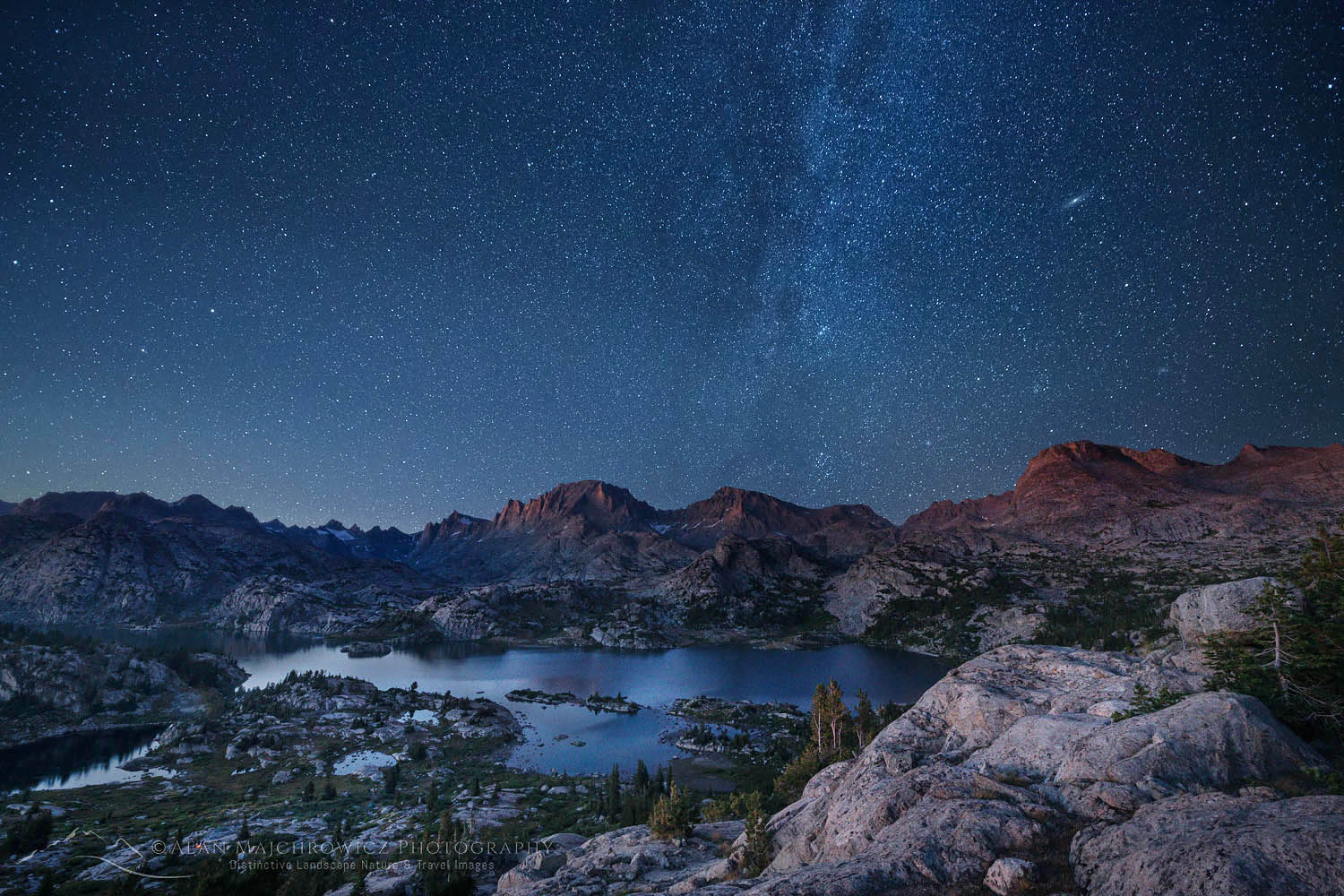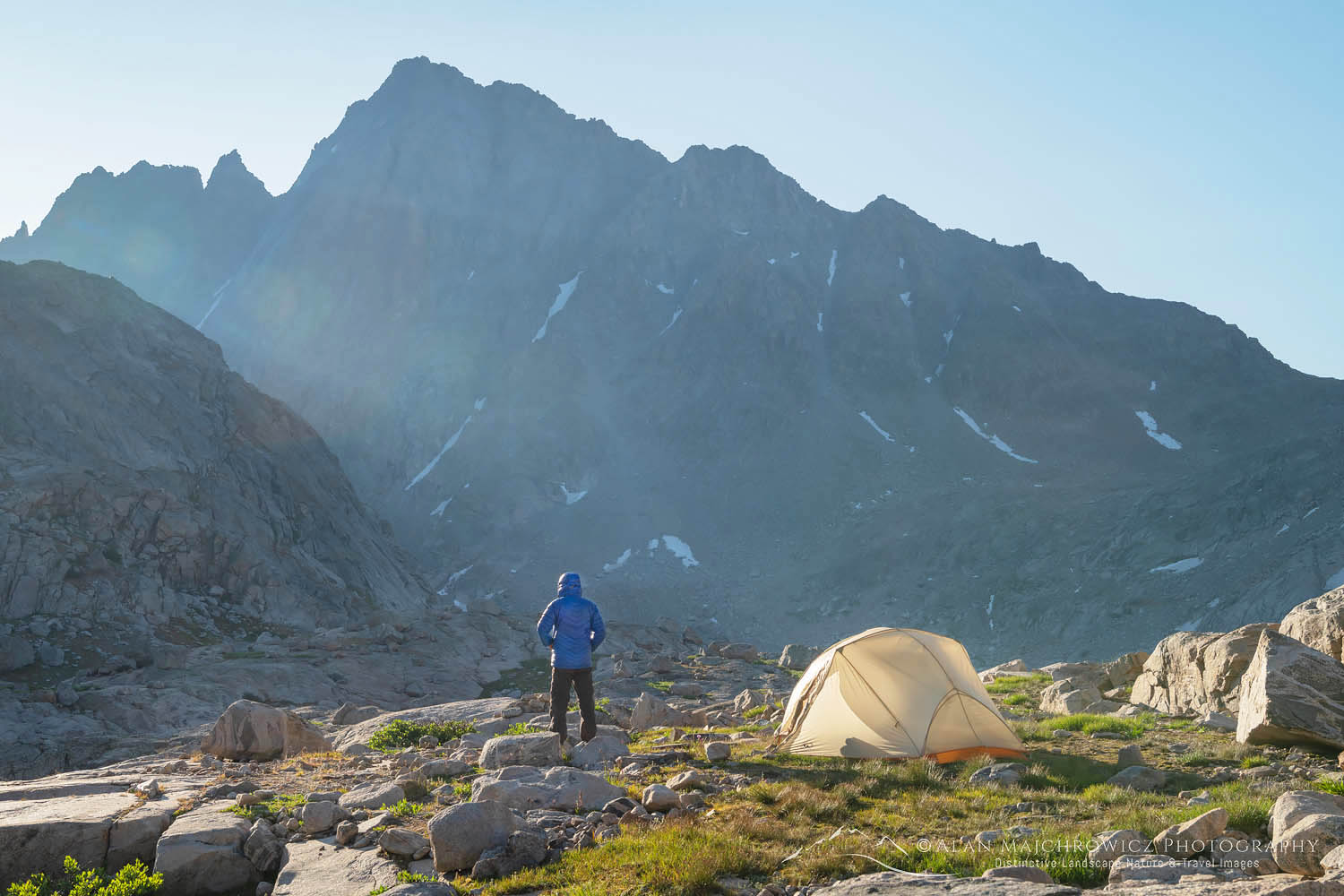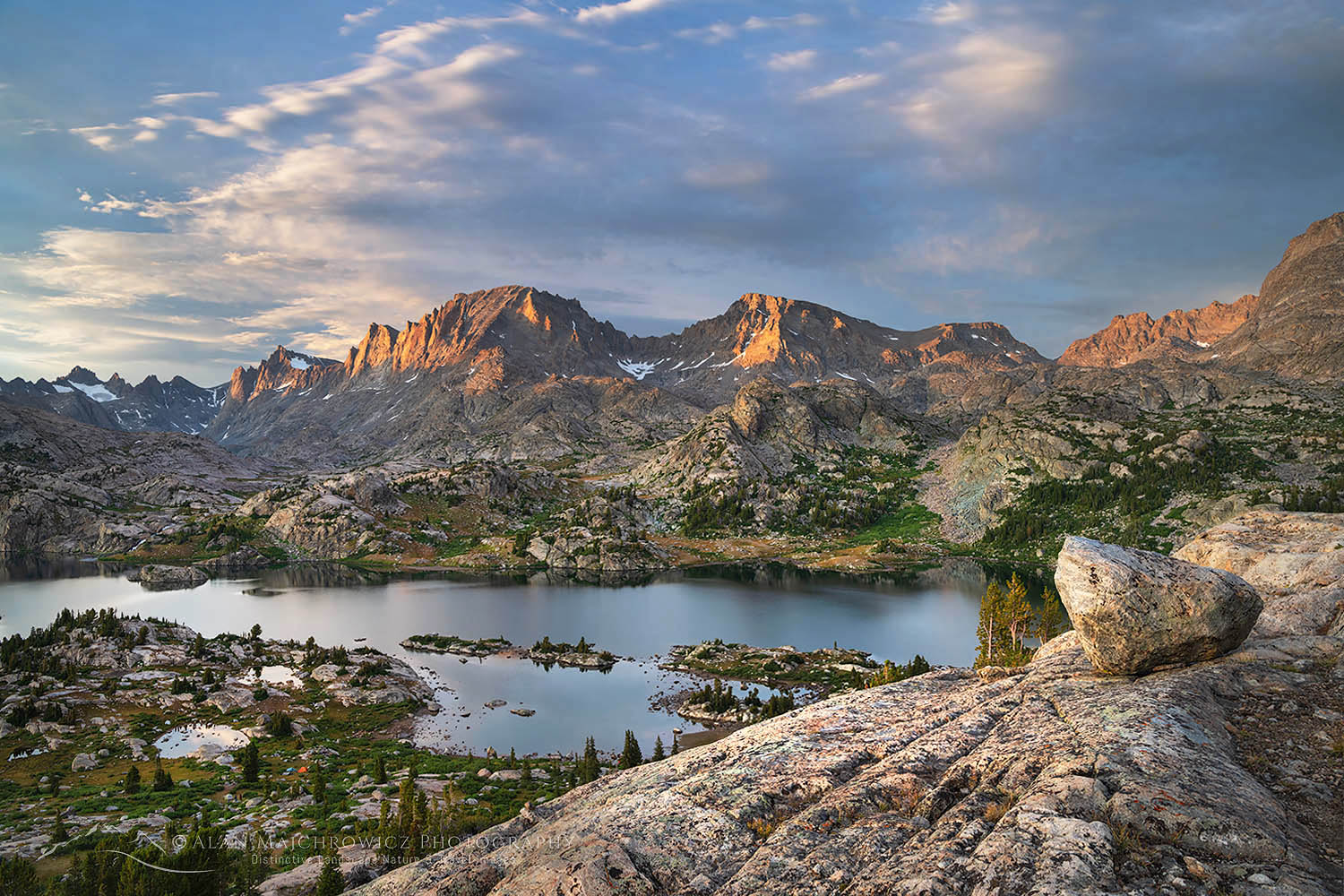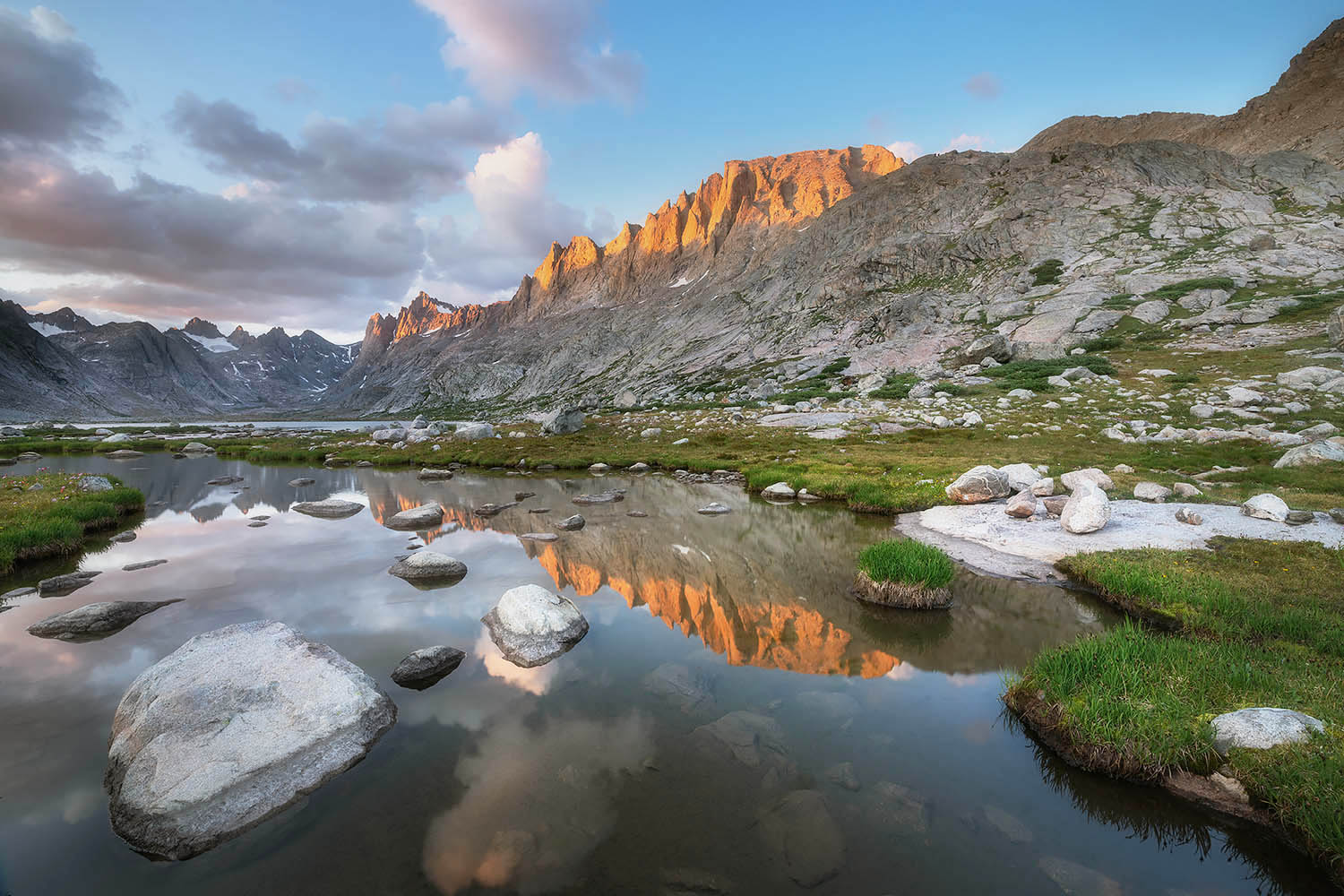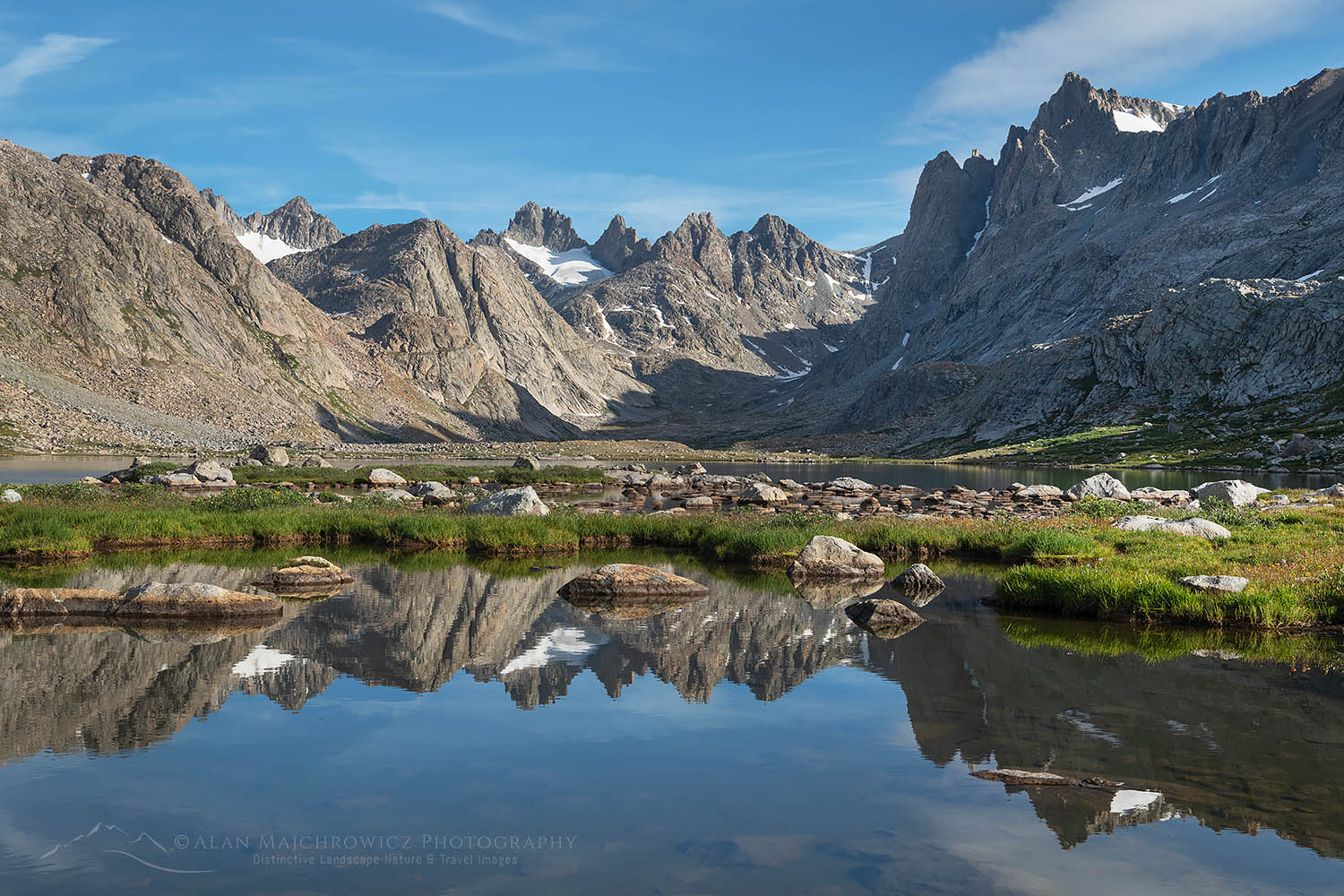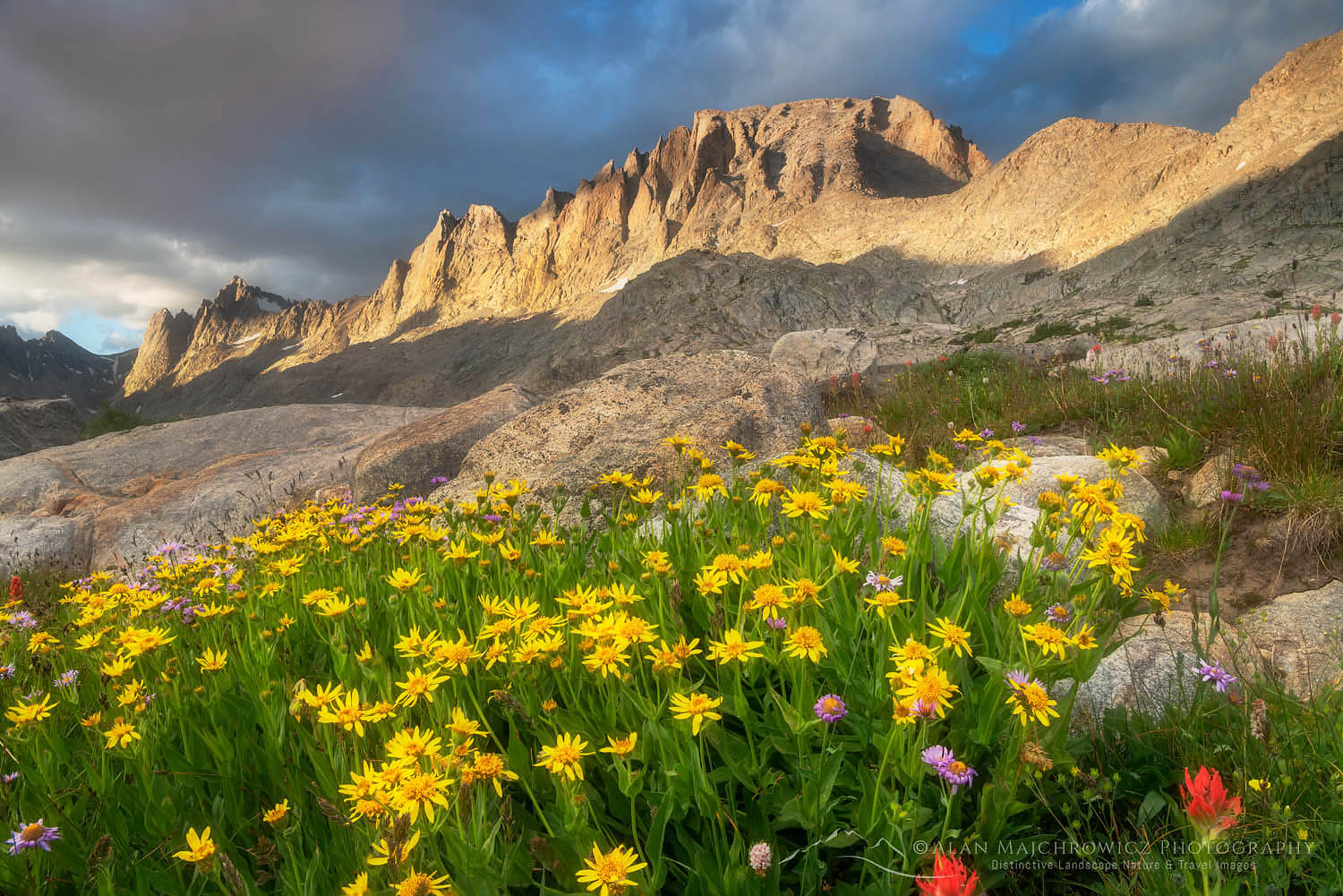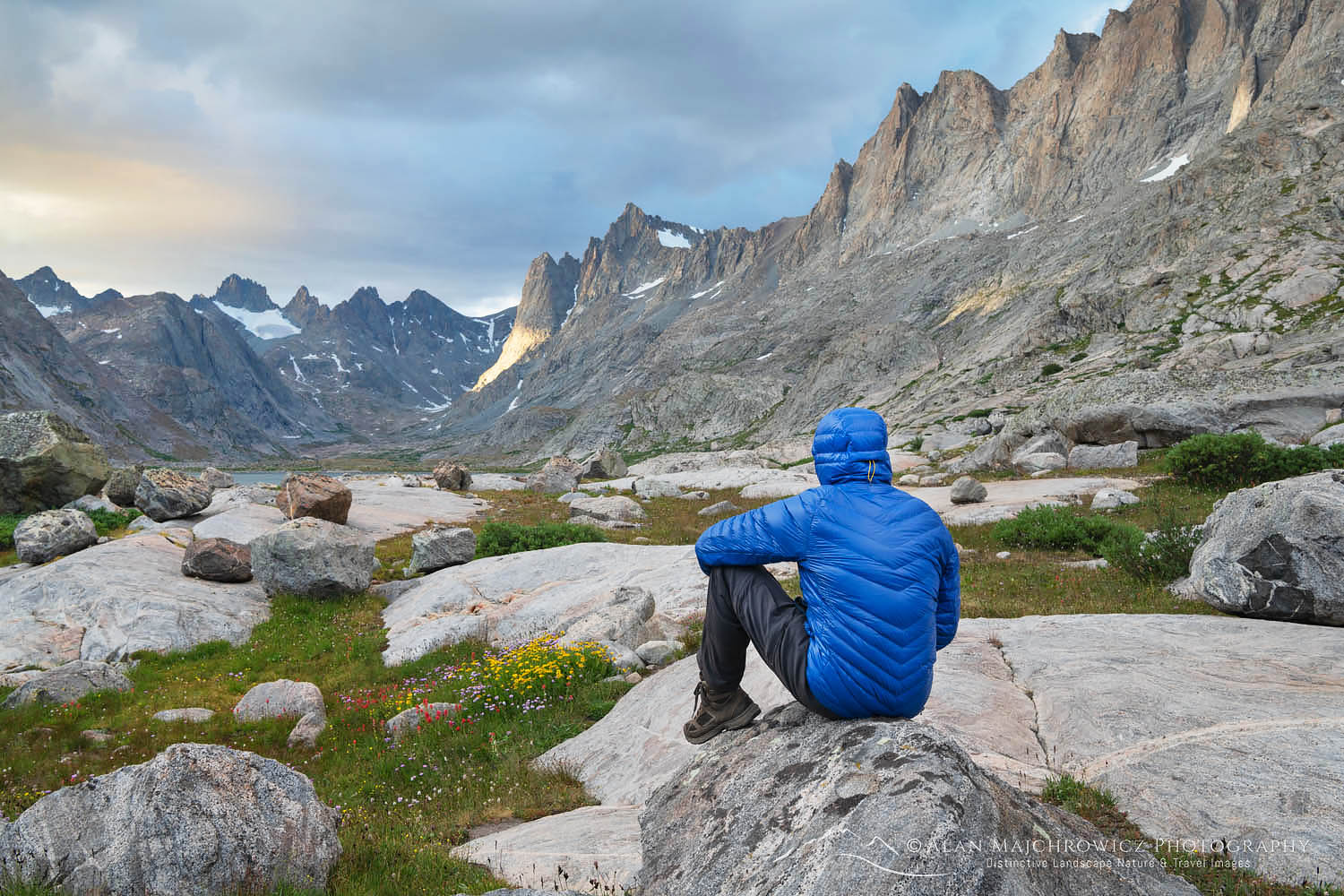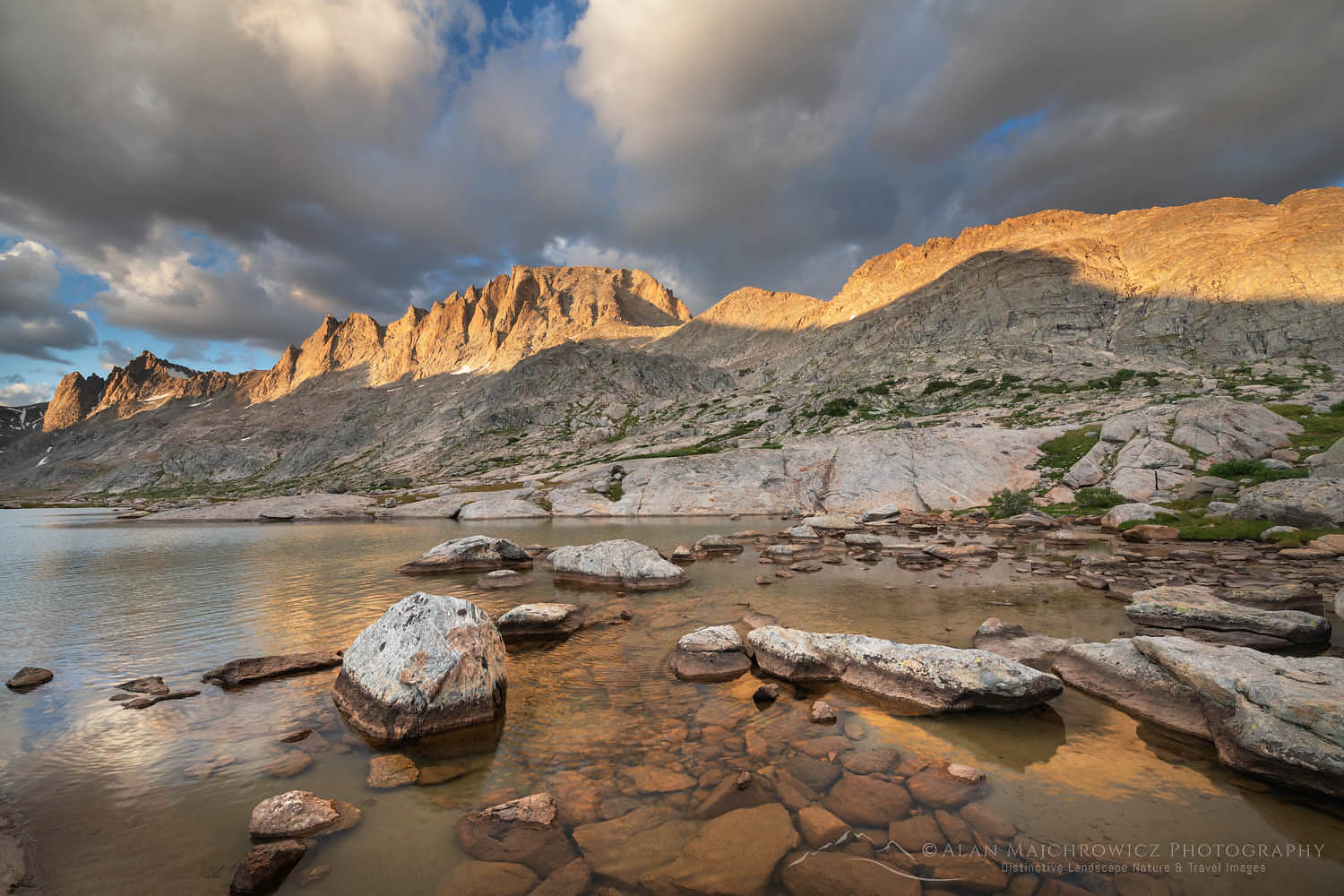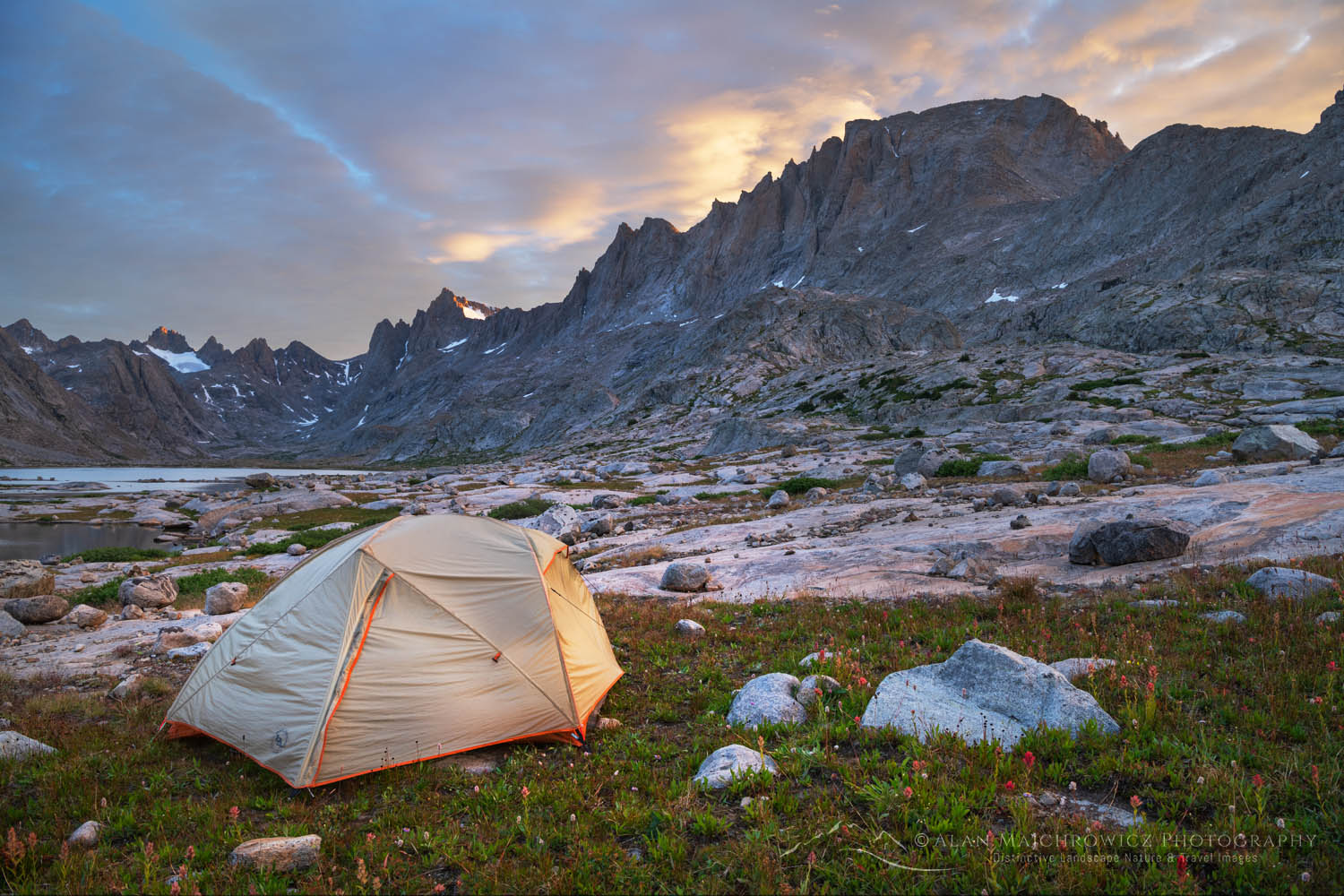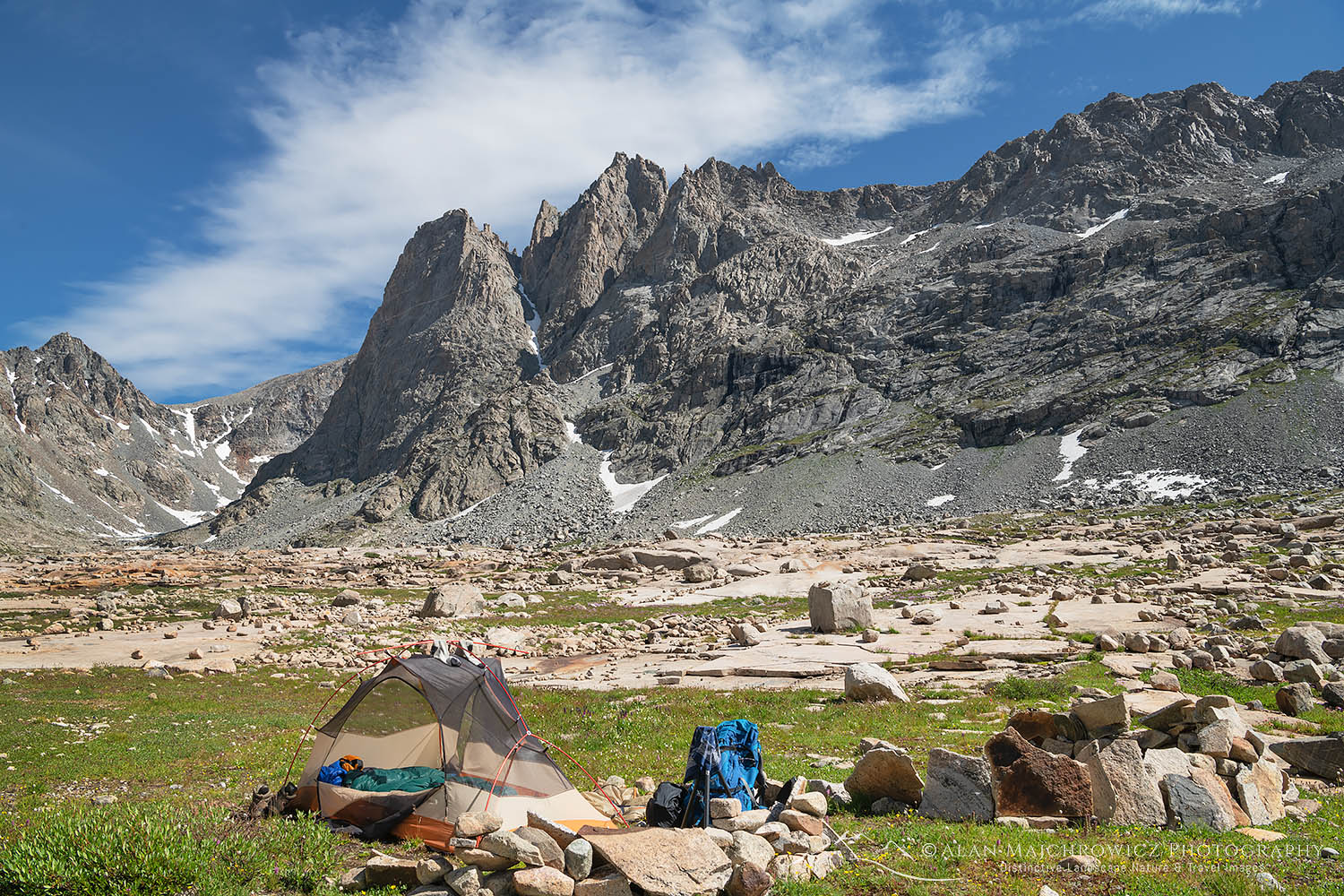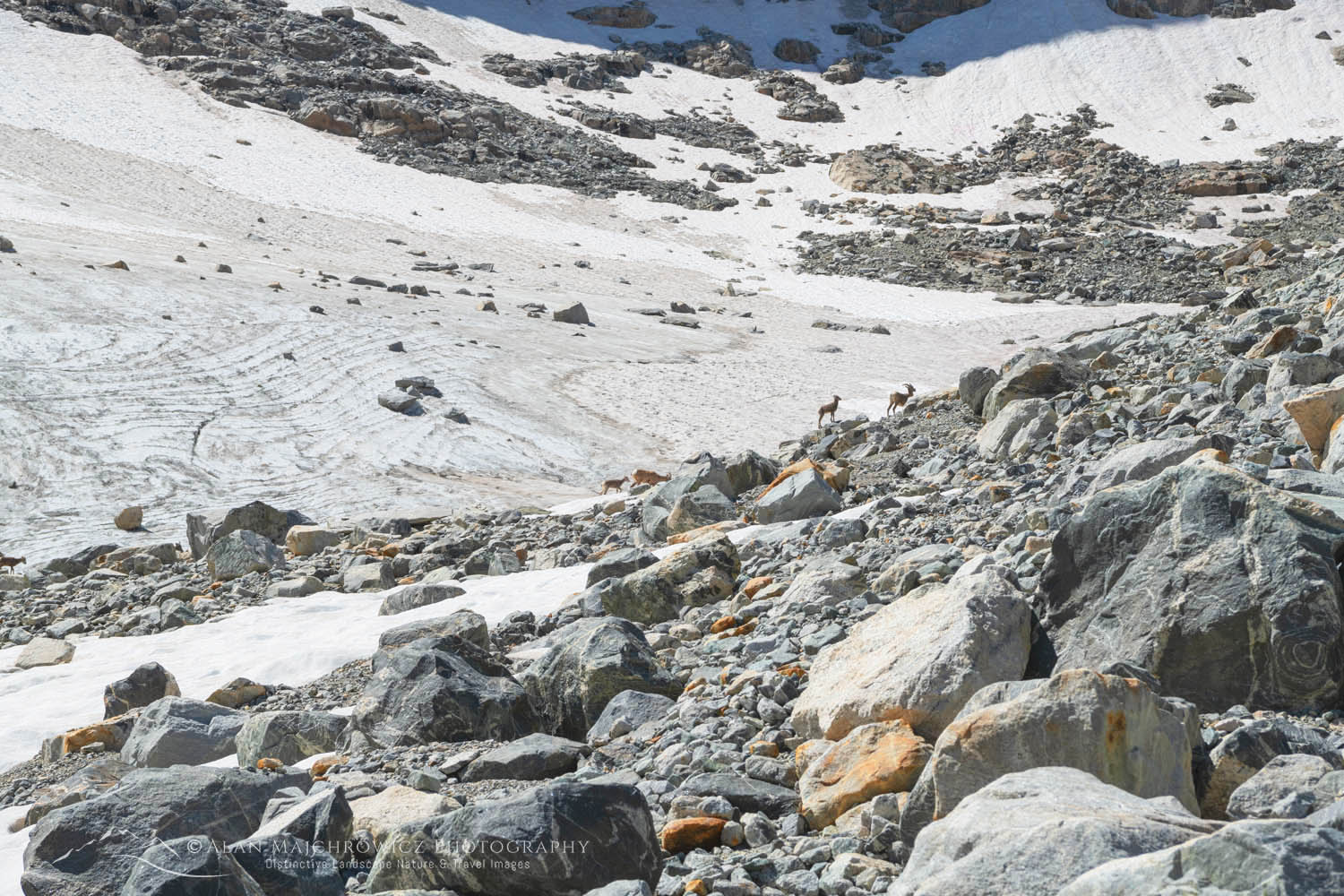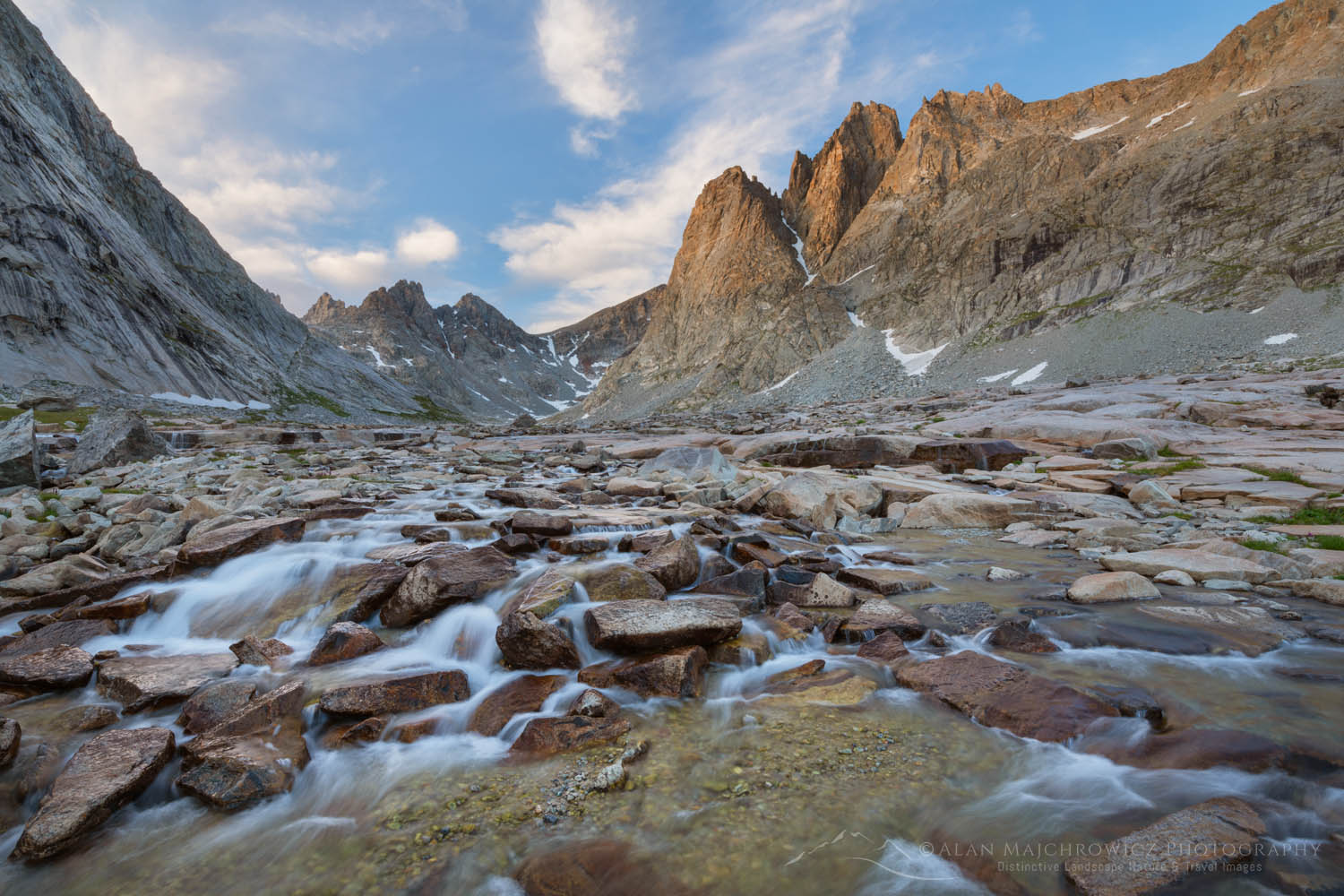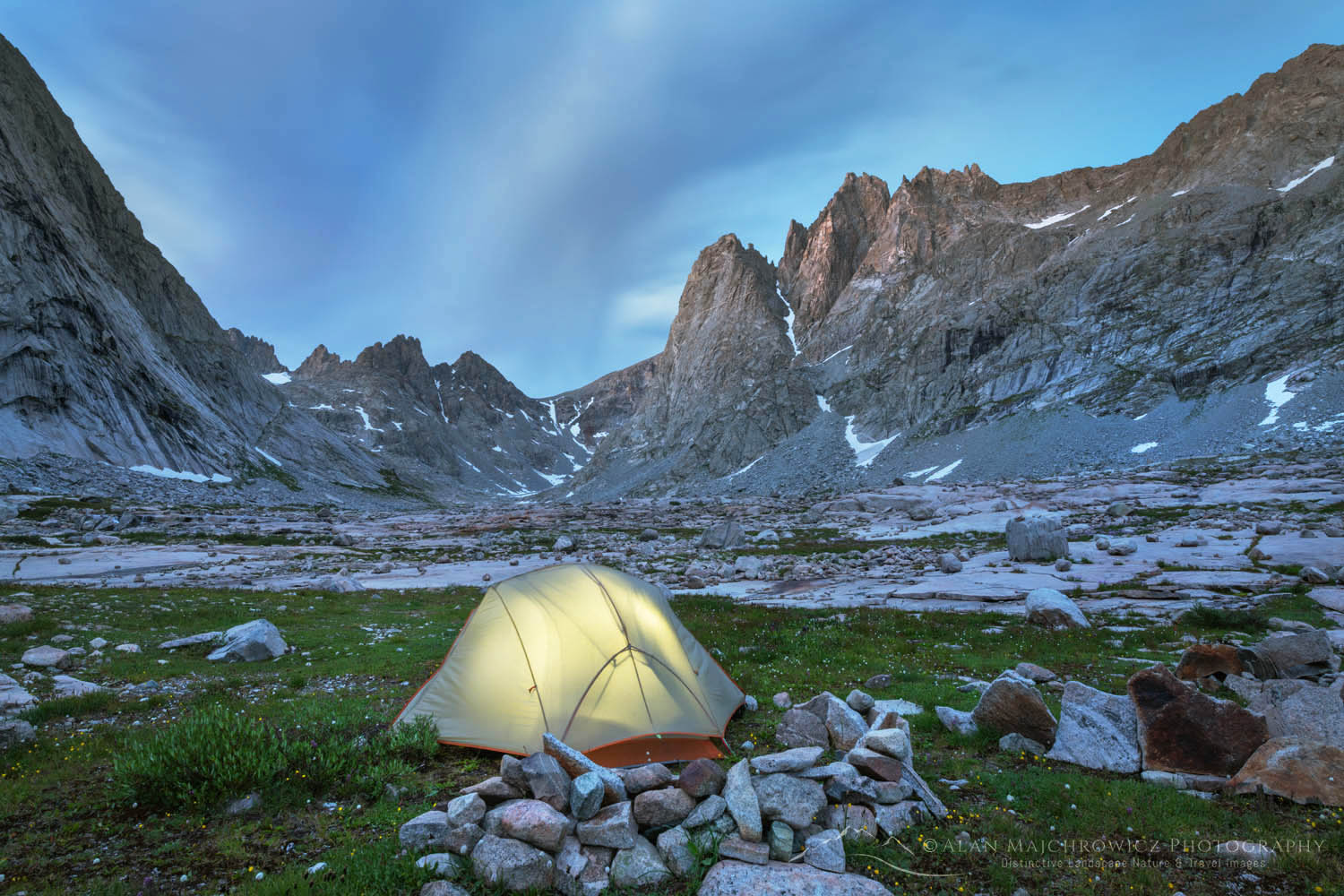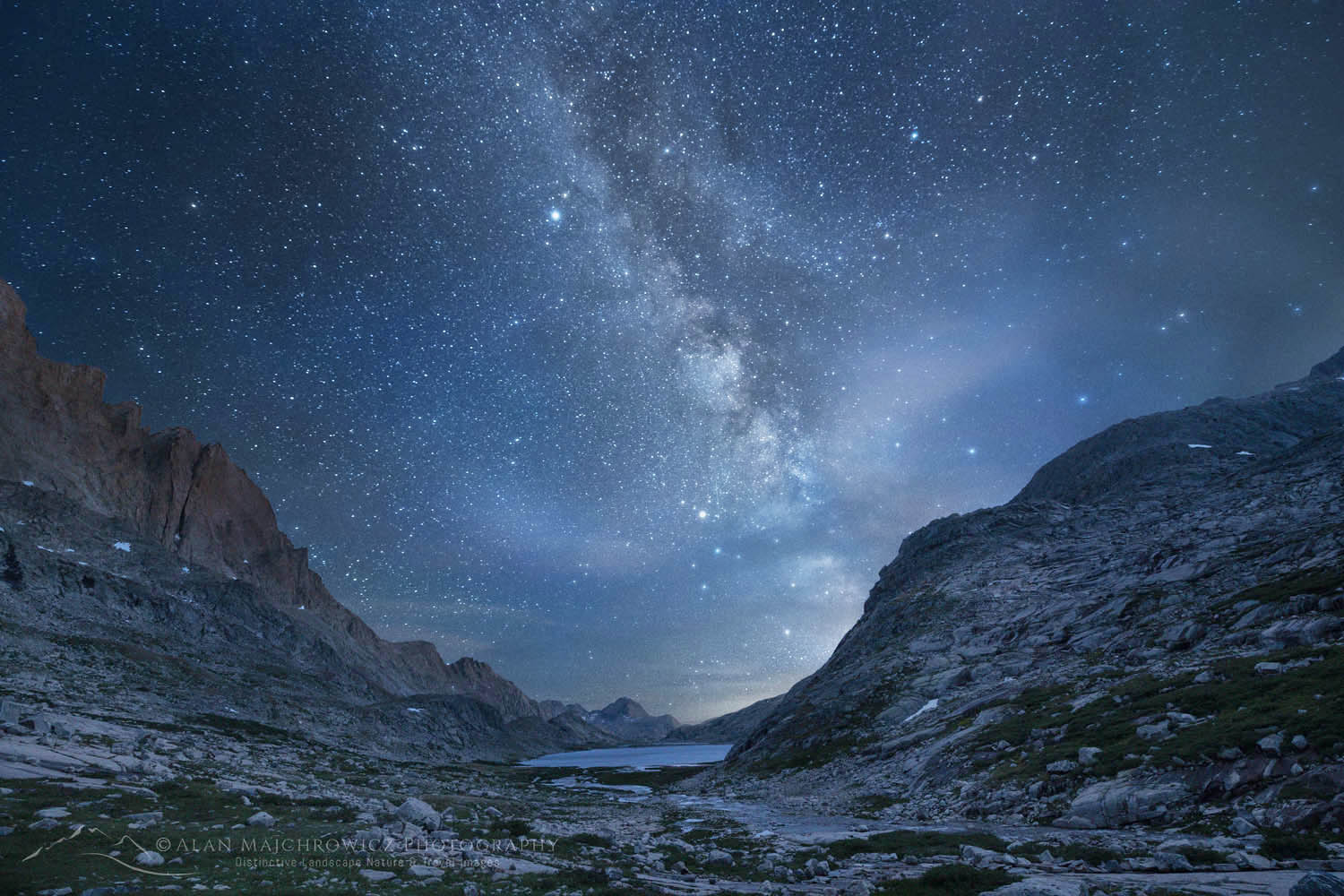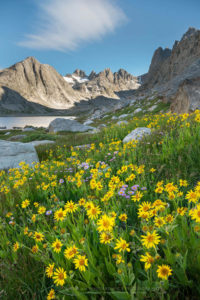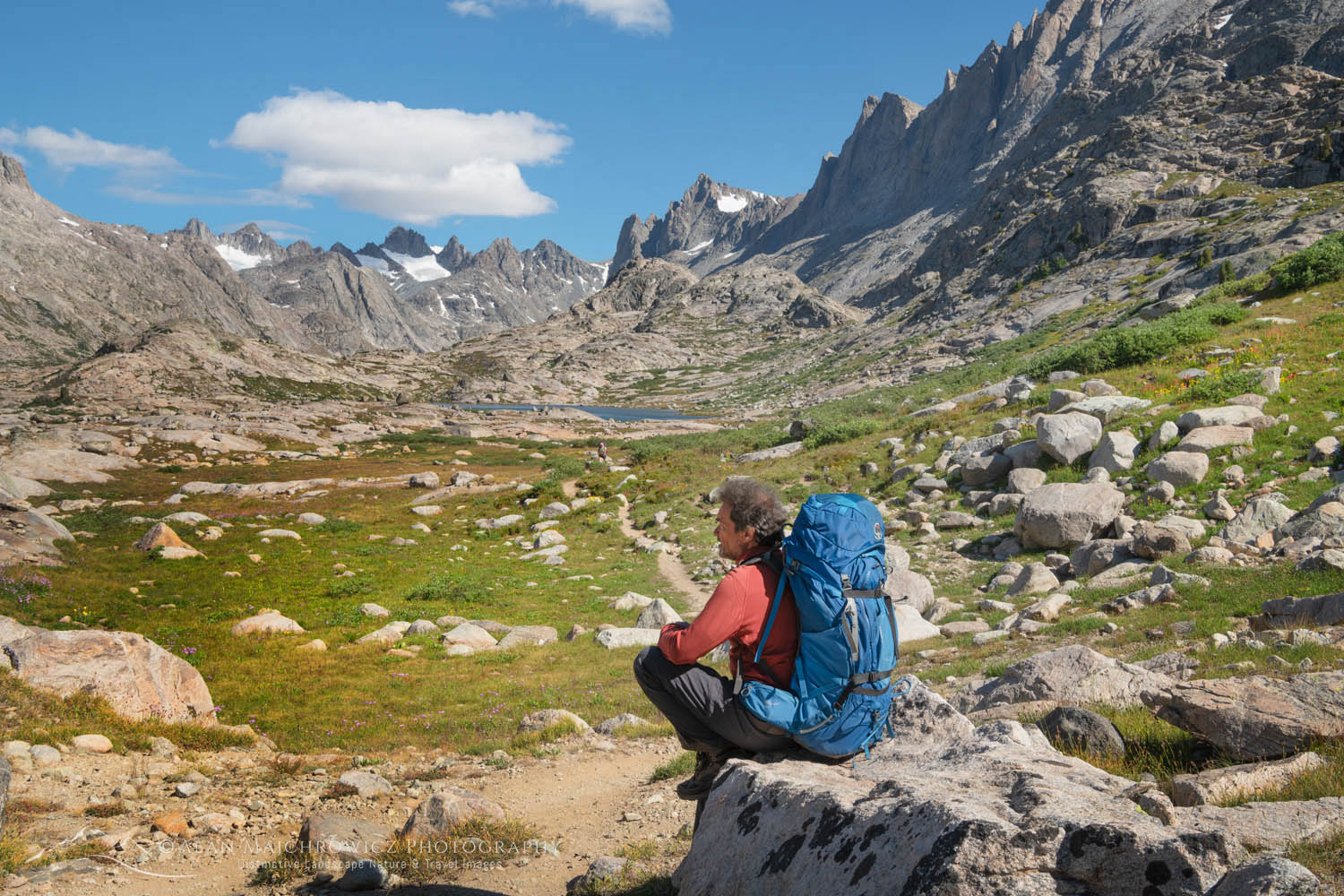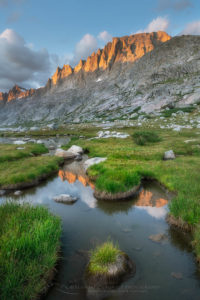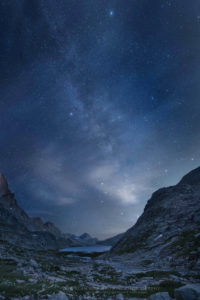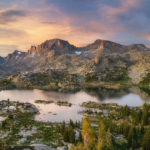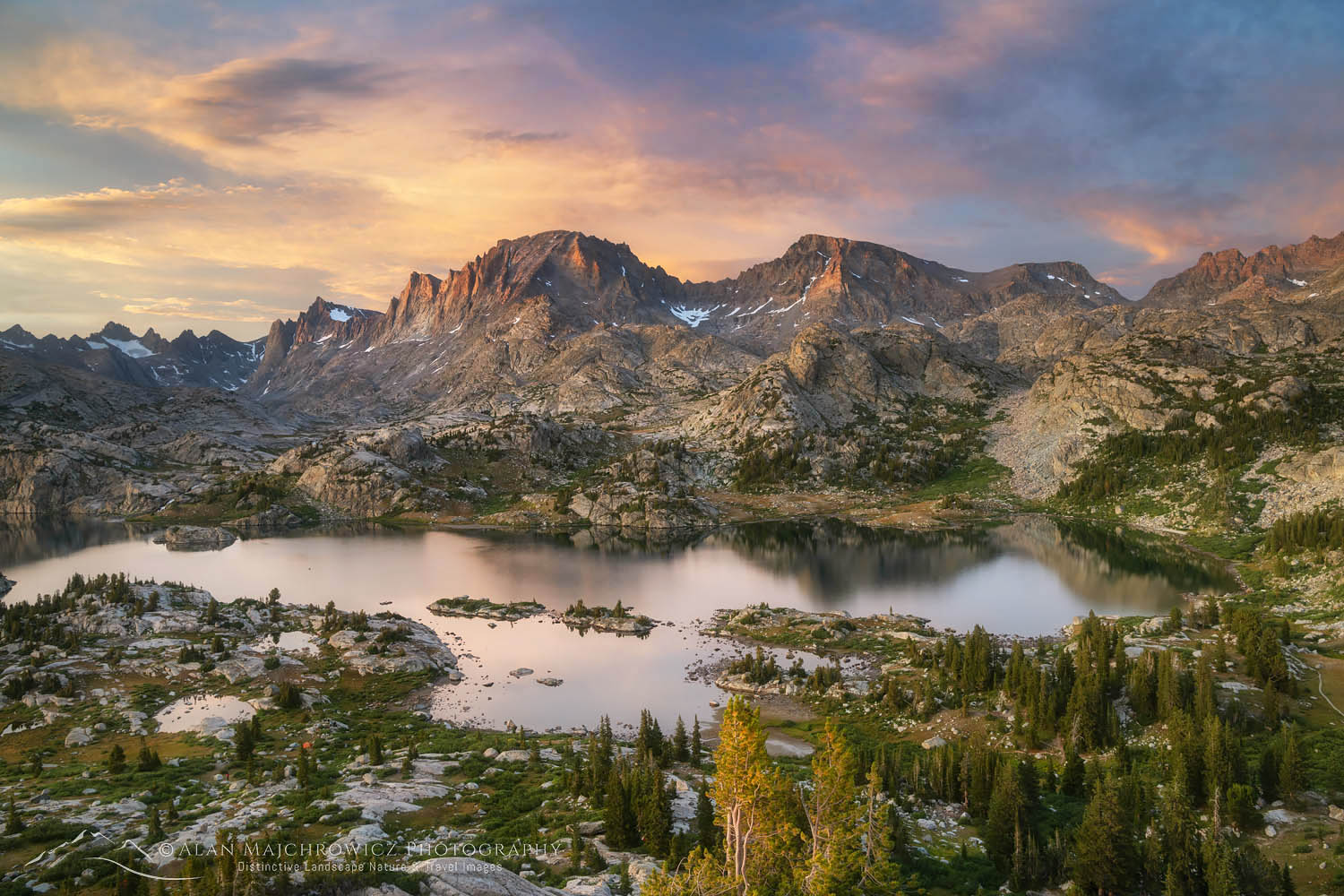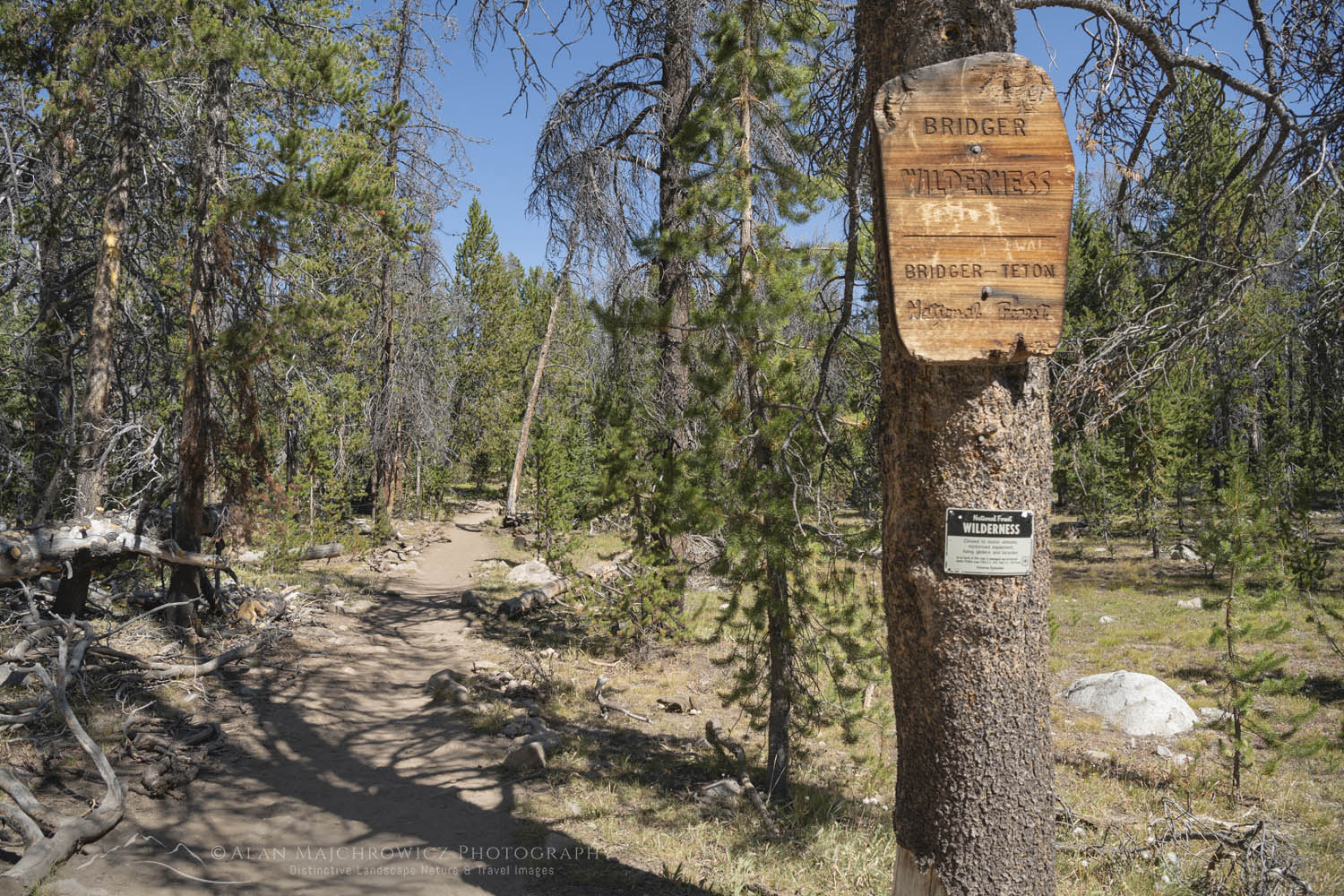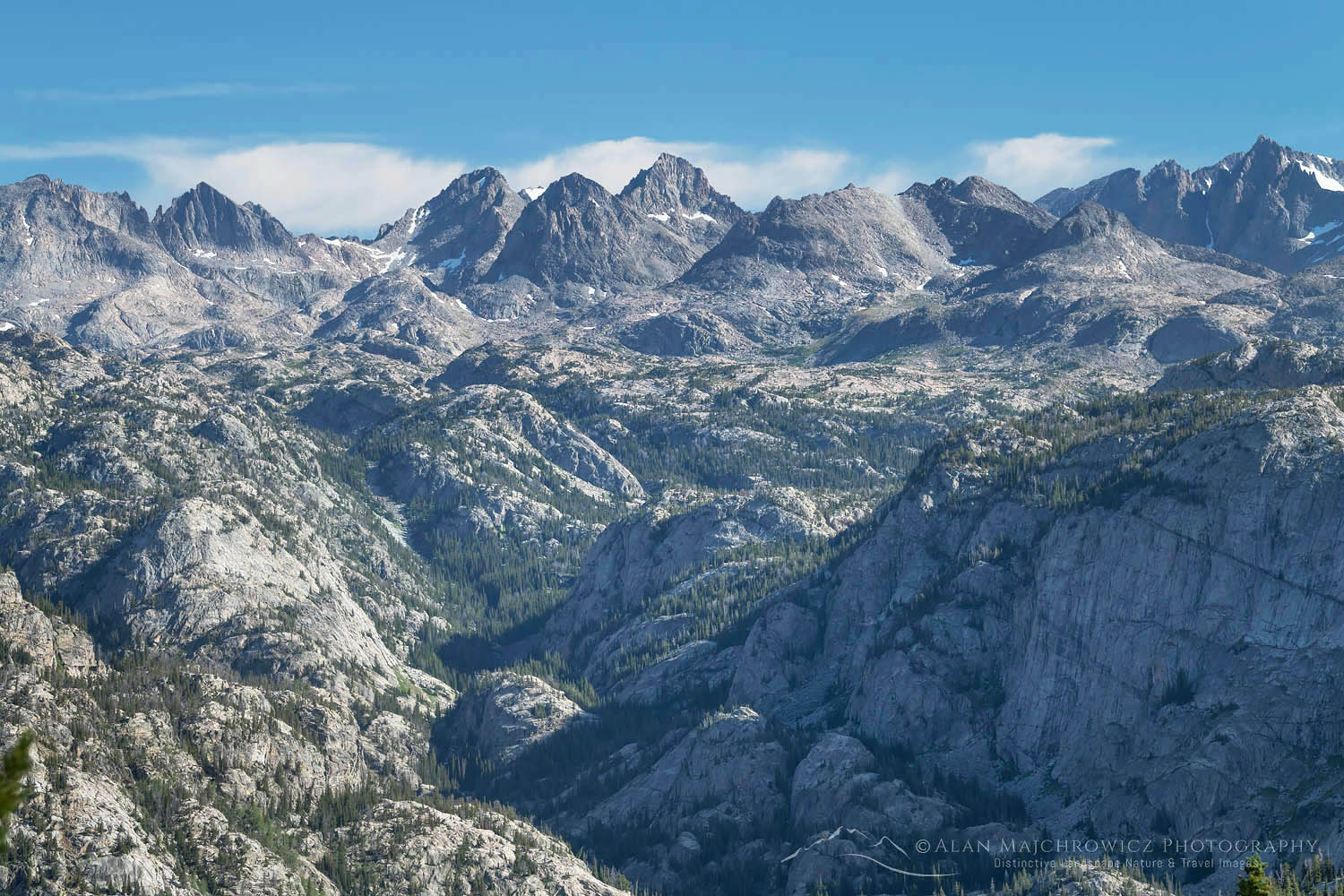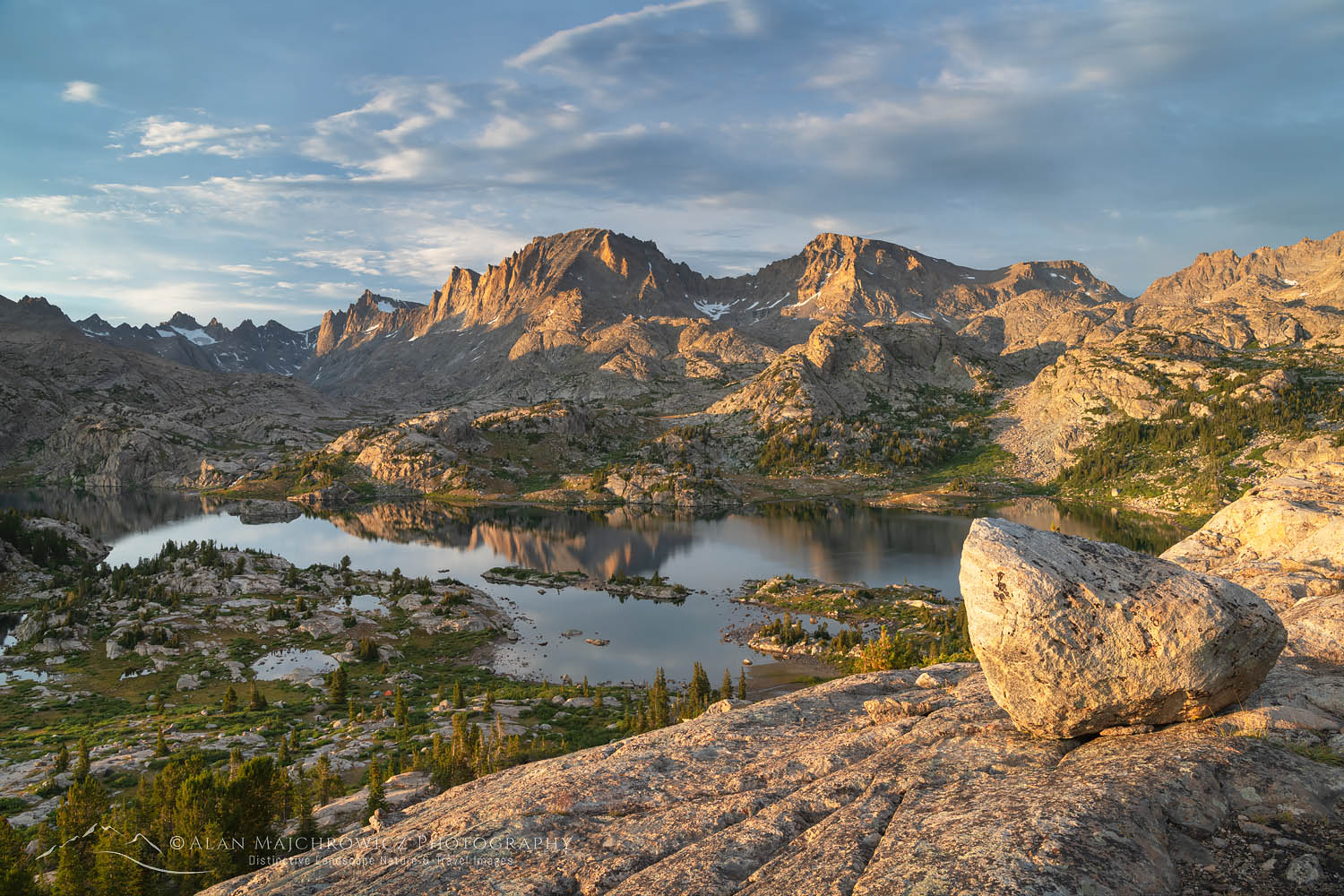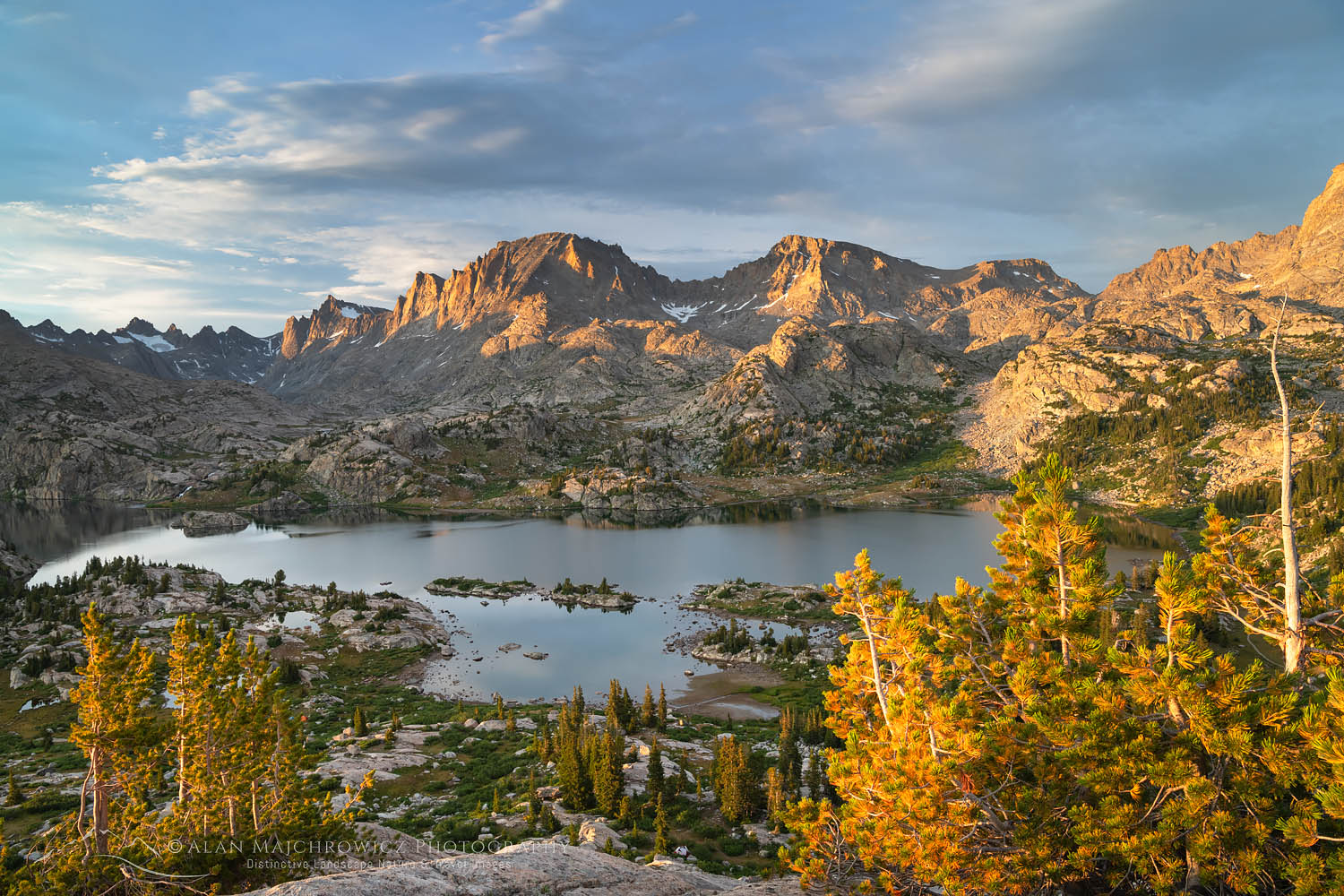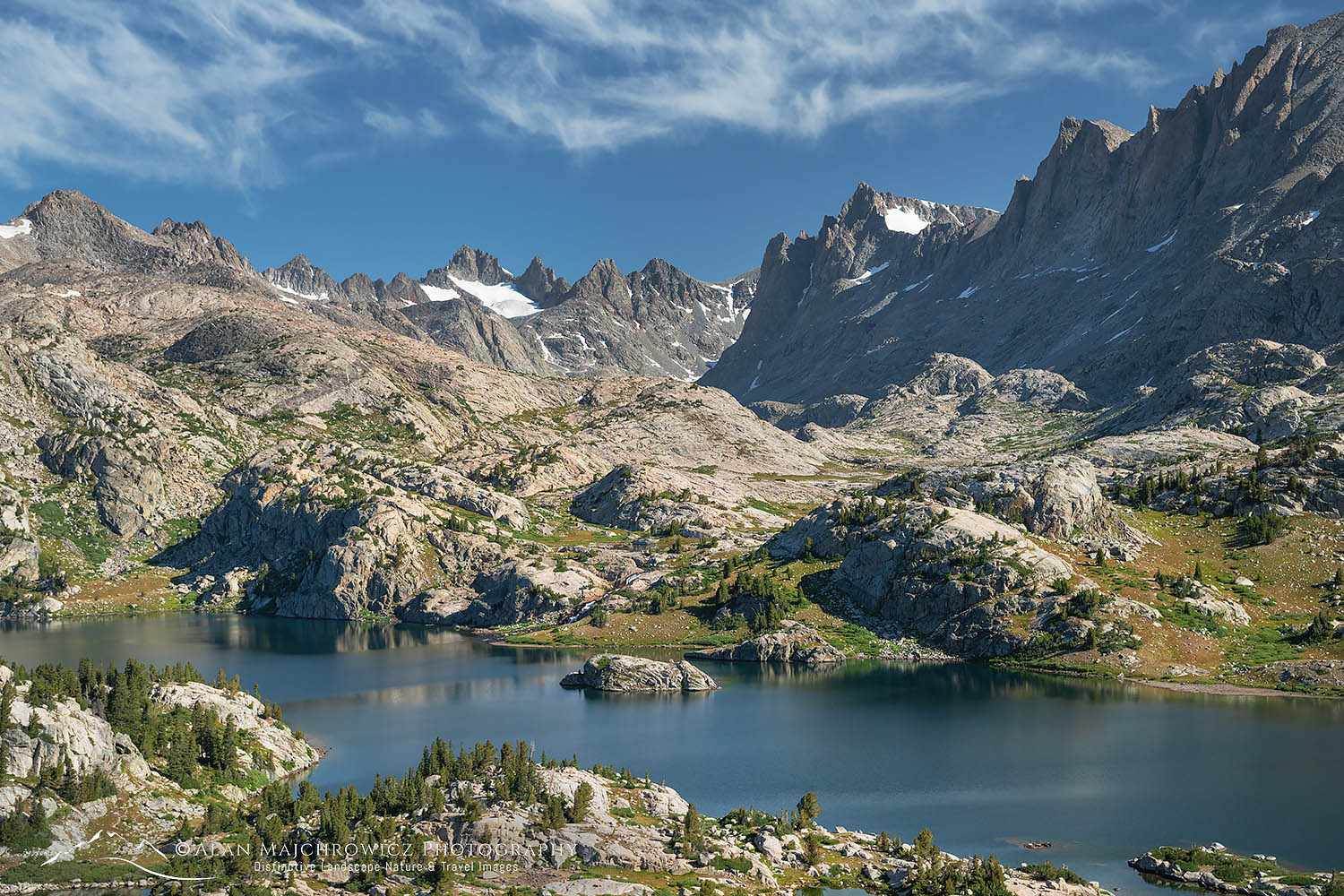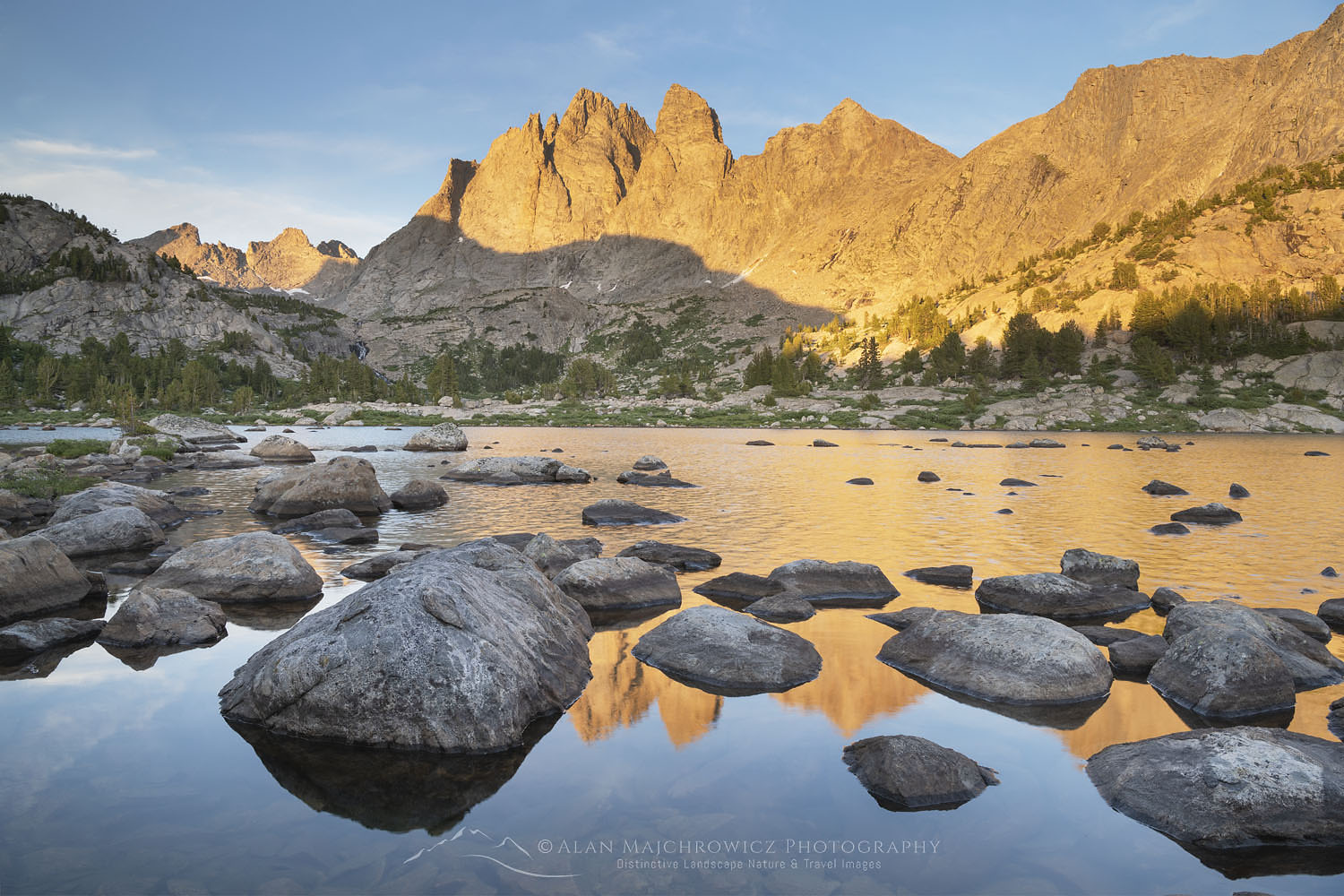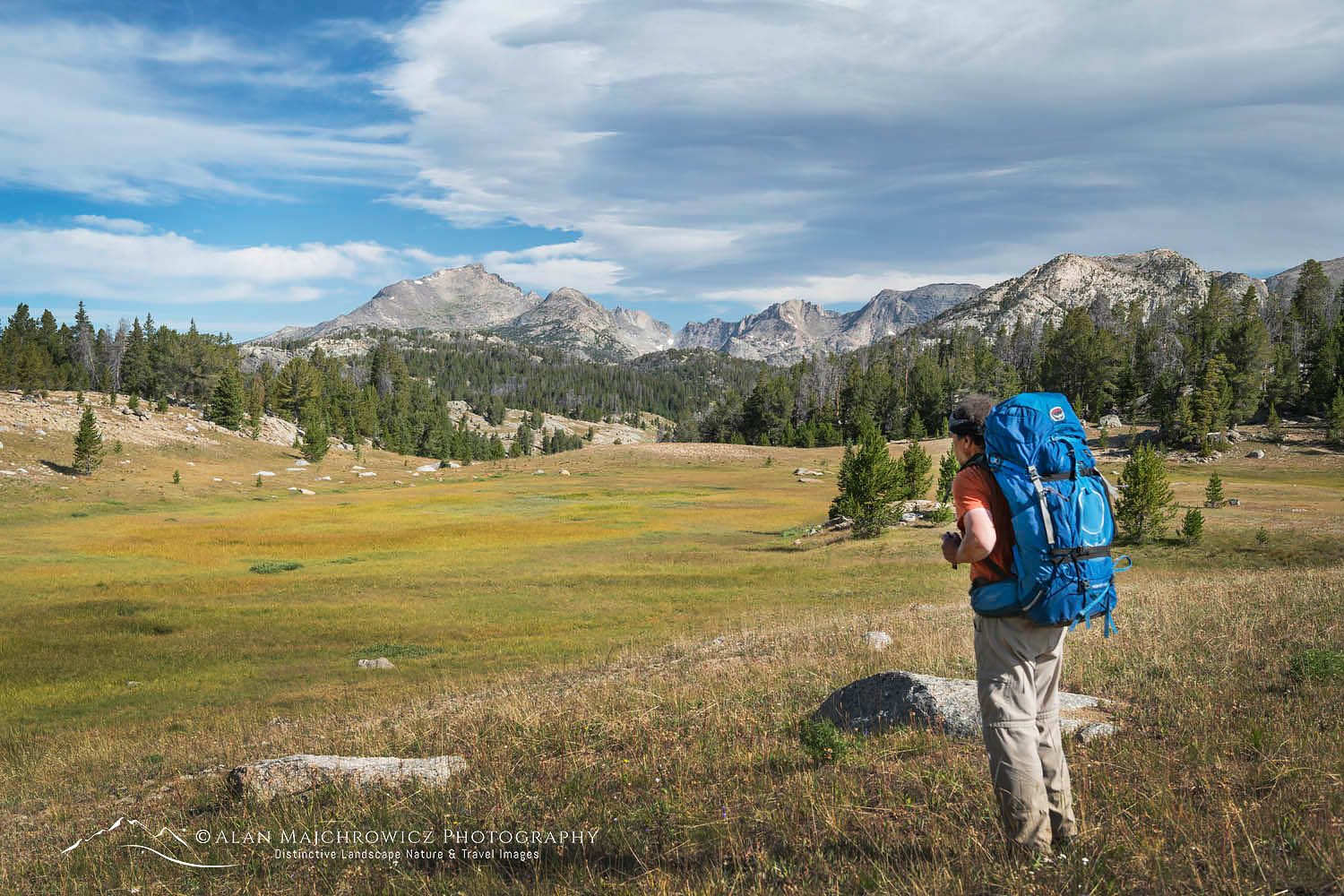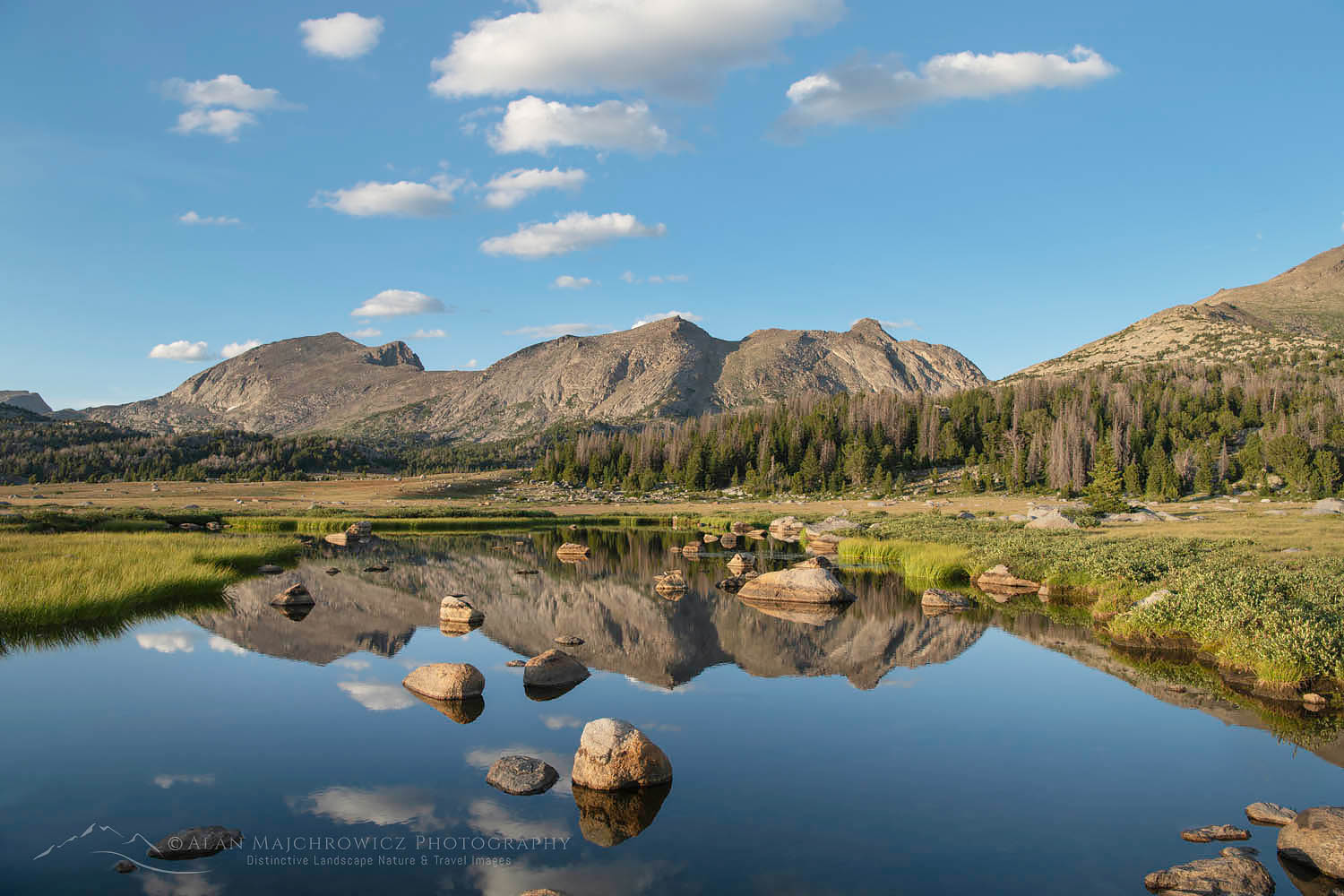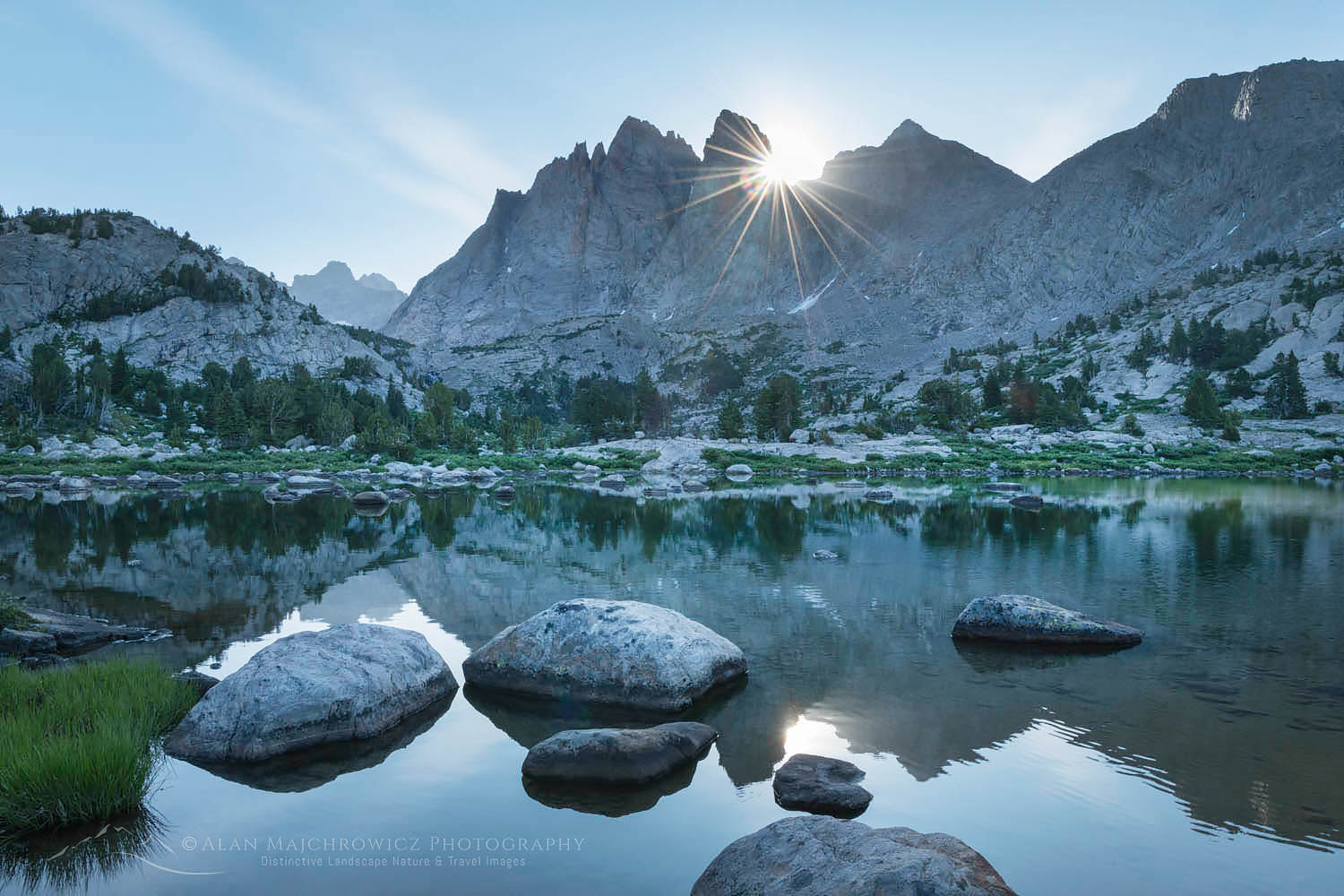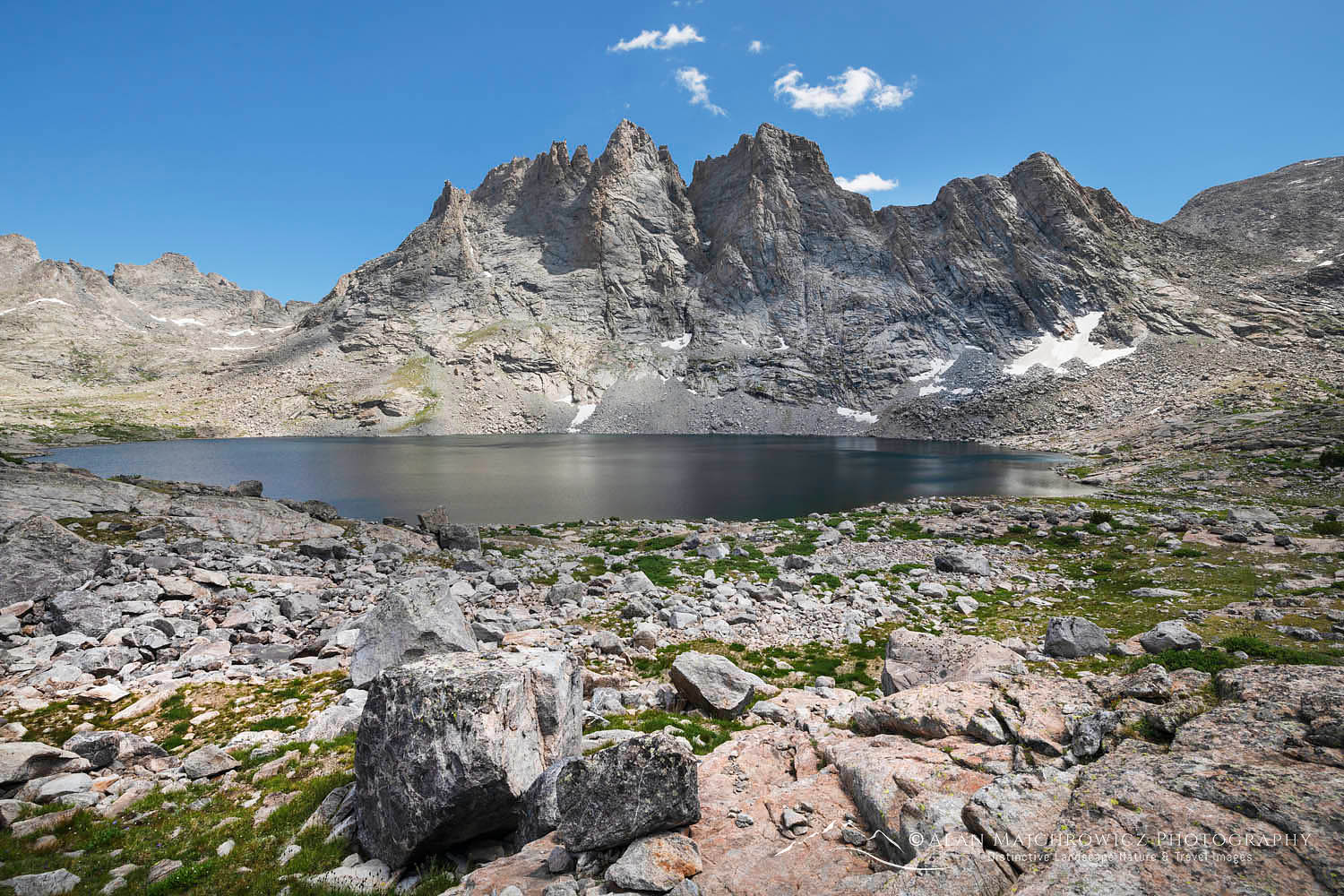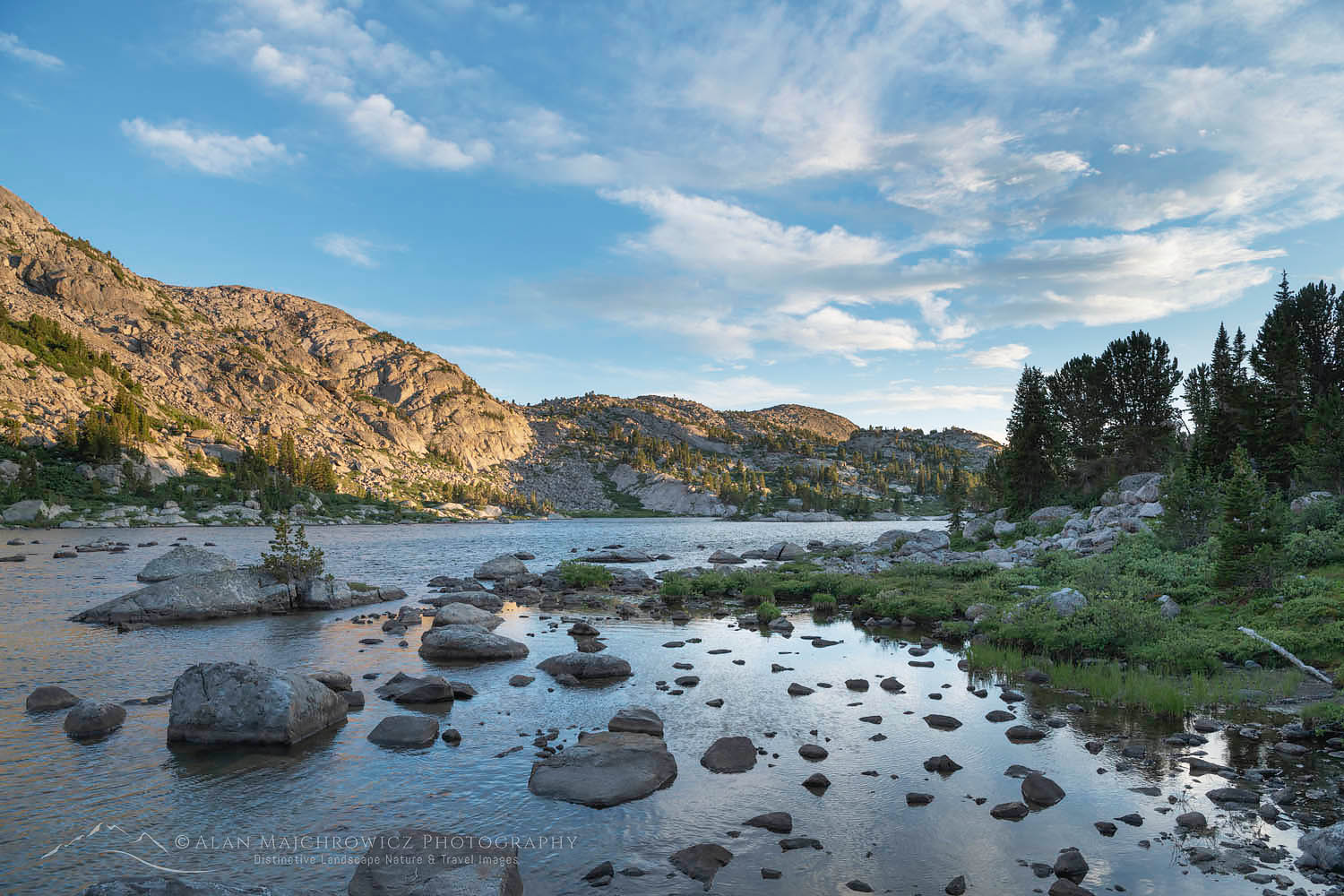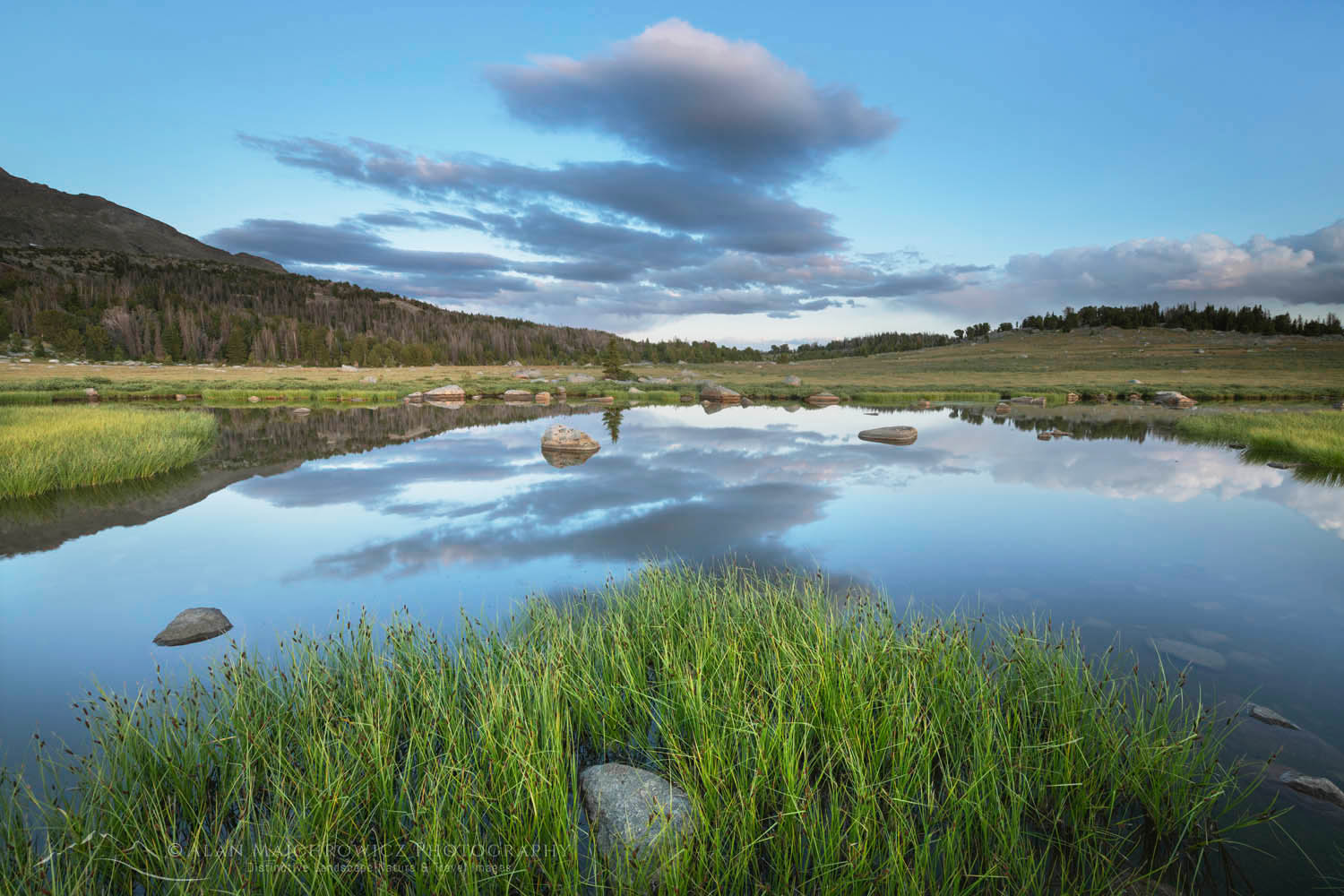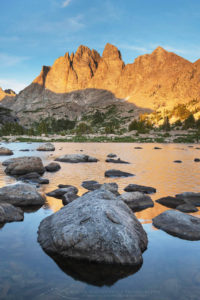Eagle Cap Wilderness Wallowa Mountains
 Eagle Cap reflected in Mirror Lake #68776 Purchase
Eagle Cap reflected in Mirror Lake #68776 Purchase
As part of the Summer 2020 Photography Tour, my first destination was the Eagle Cap Wilderness in northeast Oregon. Over the years I’ve repeatedly passed over this rugged wilderness while on my way to other destinations further east. Every time I would drive by on Interstate 80 I’d glance at them and promise to visit them next time. This went on for over twenty years! However, on this trip the stars aligned and I finally worked it into the schedule.
The Eagle Cap Wilderness sprawls out over most of the Wallowa Mountains. At over 360,000 acres it is the largest wilderness area in Oregon. That’s quite a lot of territory for such a small mountain range. A couple of other things also sets the Eagle Cap apart from other Oregon wilderness areas. First is its geology. Nearly every other mountain wilderness in Oregon is made up of various forms of volcanic rock. In contrast, the Wallowas contain mostly granitic rock. Secondly, the Wallowas are in a higher range. Many of the peaks are 1000′ – 2000′ higher than those in the Cascade Range to the west. And of course, due to its eastern location, the climate is drier, although the peaks still receive copious amounts of winter snow.
 Eagle Cap #68862 Purchase
Eagle Cap #68862 Purchase
Backpacking In The Eagle Cap Wilderness
Since this was my first trip, and I wasn’t sure how long it would be before a return visit, I wanted to photograph in the most scenic locations. After poring over maps, online trip reports, and searching for photos of specific areas I settled on two destinations.
For nearly everyone, the central Lakes Basin is the prime spot for day hikes and overnight trips. This area is where the highest peaks and most of the alpine lakes are situated. Consequently, it is also the area that receives the most visitors. I chose two areas for this trip, and due to practicalities divided them into separate trips. The first would be an extended stay at Mirror Lake and several adjacent lakes, by way of taking the East Lostine River Trail. The second trip was to be a shorter one to Ice Lake via the West Fork Wallowa River Trail. Both trips would ensure excellent photo opportunities. The one uncertainty was the fact that despite it being nearly mid-July there still appeared to be a good deal of snowpack left in the alpine.
Since this was my first trip, and I wasn’t sure how long it would be before a return visit, I wanted to photograph in the most scenic locations. After poring over maps, online trip reports, and searching for photos of specific areas I settled on two destinations.
For nearly everyone, the central Lakes Basin is the prime spot for day hikes and overnight trips. This area is where the highest peaks and most of the alpine lakes are situated. Consequently, it is also the area that receives the most visitors. I chose two areas for this trip, and due to practicalities divided them into separate trips. The first would be an extended stay at Mirror Lake and several adjacent lakes, by way of taking the East Lostine River Trail. The second trip was to be a shorter one to Ice Lake via the West Fork Wallowa River Trail. Both trips would ensure excellent photo opportunities. The one uncertainty was the fact that despite it being nearly mid-July there still appeared to be a good deal of snowpack left in the alpine.
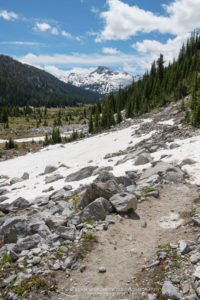 East Lostine River Trail #68765 Purchase
East Lostine River Trail #68765 Purchase
Hiking Into Mirror Lake
This trip was also to be my introduction to the realities of traveling during the COVID 10 Pandemic. Driving up the long, bumpy, and dusty Lostine River Road, where I was to spend the first-night car camping, I found nearly every campsite was occupied. At the time I thought it was due to being the weekend. Later on, I would find out that where or when didn’t matter, crowds were everywhere. After finding a decent spot I sorted through and prepared all my gear for an early start in the morning.
The next day I hit the trail bright and early and brimming with excitement about the views and pictures awaiting me. The first half of the East Lostine River Trail is fairly uneventful and typical of a forest approach hike. The second half, however, is very pleasant and scenic. This is due to the fact it enters a very long nearly flat sub-alpine valley with wide-open views for over a mile. During this section the trail skirts along open meadows, ponds, and the lazily flowing Lostine River. At the head of the valley looms 9572′ Eagle Cap Peak. This is where I first worried about the timing and feasibility of my two trips.
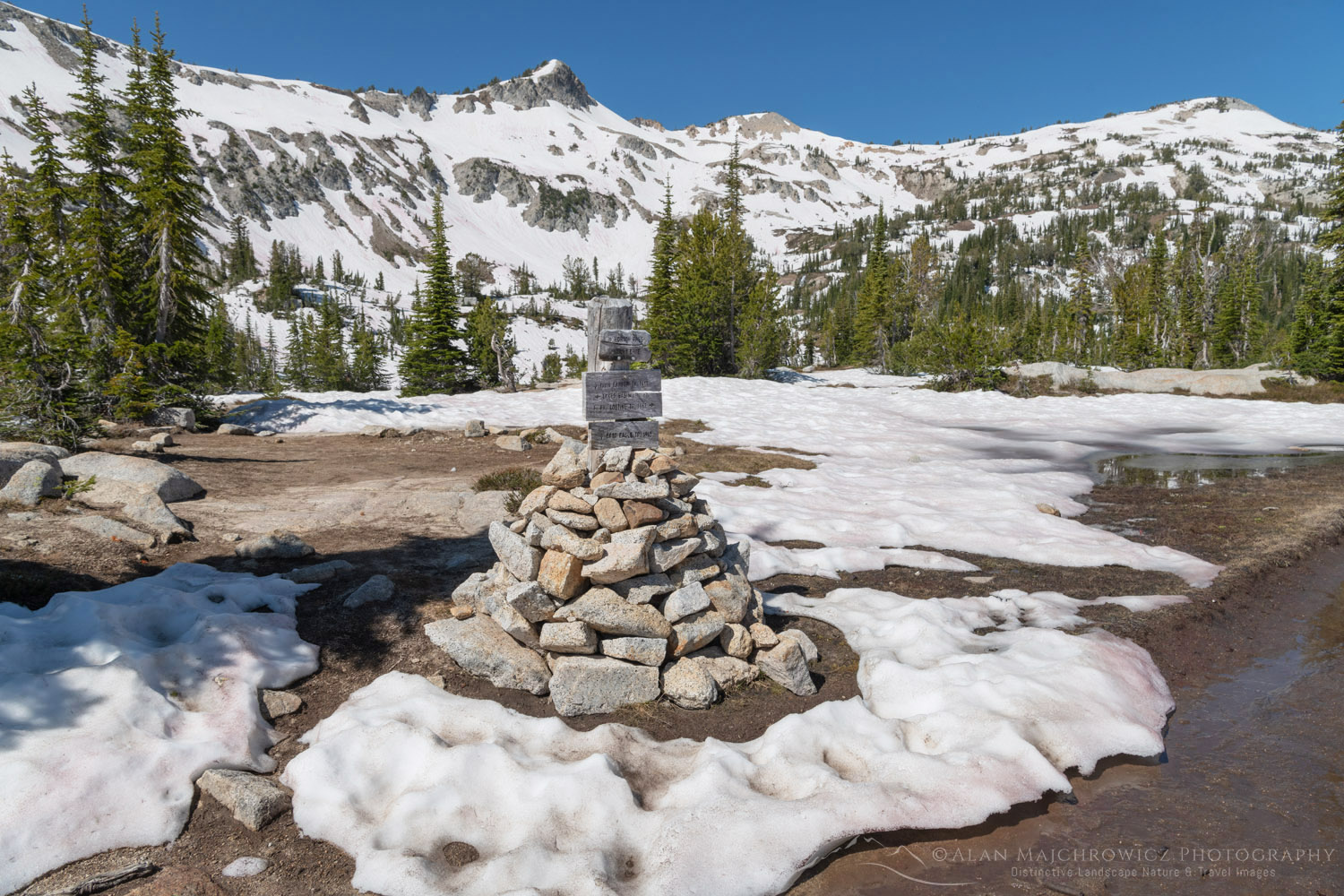 Eagle Cap Wilderness Cairn #68822 Purchase
Eagle Cap Wilderness Cairn #68822 Purchase
There were still numerous spots of avalanche snow left melting on the trail, and Eagle Cap, and the pass to Mirror Lake was nearly covered in snow. This left me thinking about the chances of successful photography, and of being able to visit all the lakes on my itinerary. The last mile or so to the pass was mostly over deep snow, although it was firm and post-holing was at a minimum. It was a pleasant surprise to find more open ground at the pass. Conditions at Mirror Lake were my main concern though.
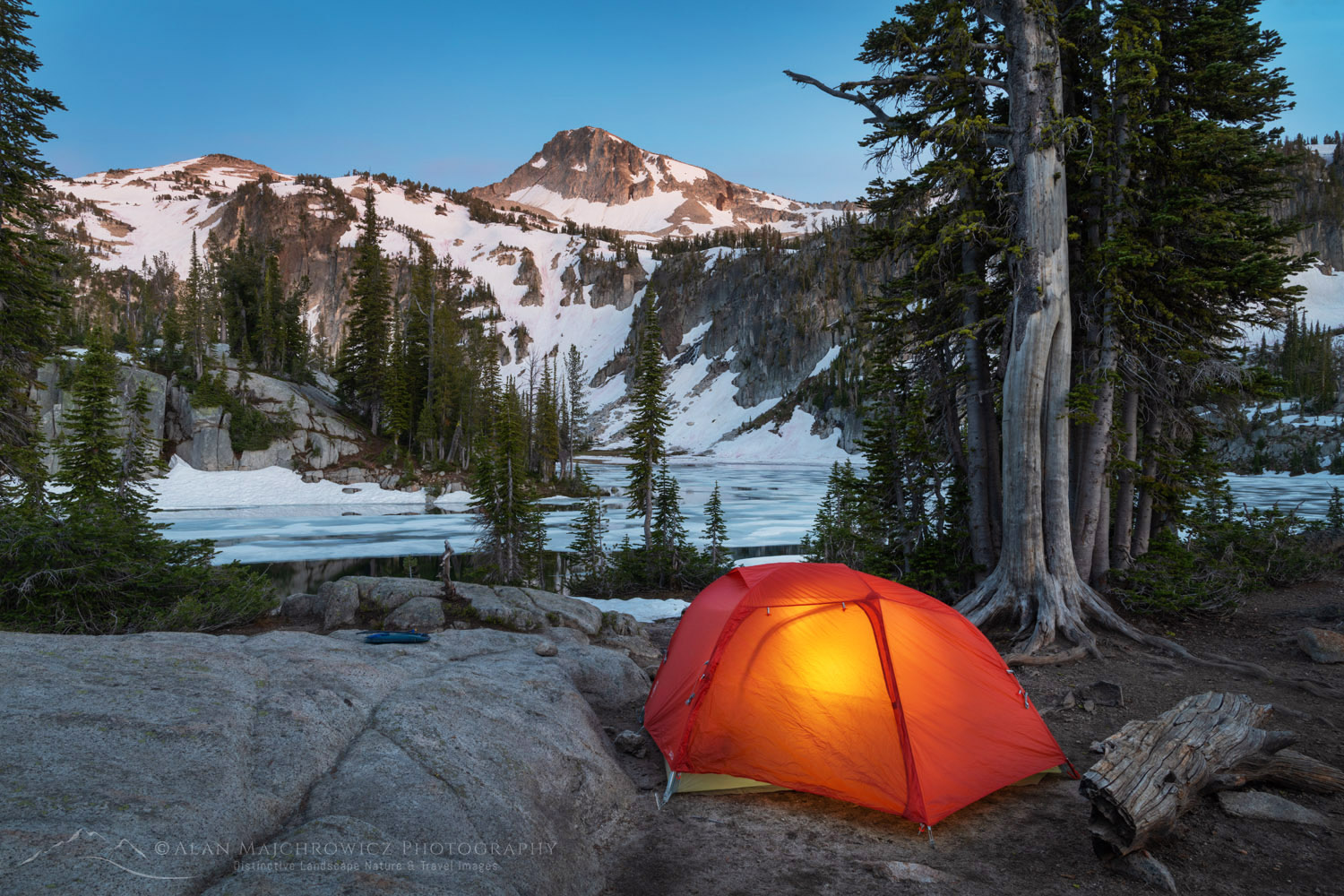 Mirror Lake Camp Eagle Cap Wilderness #68804 Purchase
Mirror Lake Camp Eagle Cap Wilderness #68804 Purchase
Mirror Lake Camping And Photography
On approaching Mirror Lake at 7595′ I saw that its surfaces had about 75% ice on. Most of the open water was along the shoreline, which was good news for me. Also, the majority of designated campsites were still under snow. However, one especially attractive site near the lake was completely snow-free.
There probably wasn’t a better spot in miles. The view across the lake to Eagle Cap was outstanding, and if the light cooperated I was sure to come away with some great photos. As usual, I spent the rest of the afternoon scouting the area in advance for photo compositions. And while I found a few good ones the one near my camp was clearly the best, at least until all the snow melted.
 Alpenglow over Eagle Cap #68793 Purchase
Alpenglow over Eagle Cap #68793 Purchase
Up until that time I planned to move on the next day over another pass to Glacier Lake. But it was obvious the way would be entirely over snow, and since Glacier Lake was even higher up it was certain to be nearly frozen over. Because of this I reluctantly made the decision not to go, and spend more time in the immediate area instead.
During the afternoon the sky had clouded over, and I thought I would be out of luck for a photo session with good evening light. But towards sunset, it became apparent that the clouds were starting to clear in the west. Soon sun rays began to stream through and illuminate the lake area and Eagle Cap.
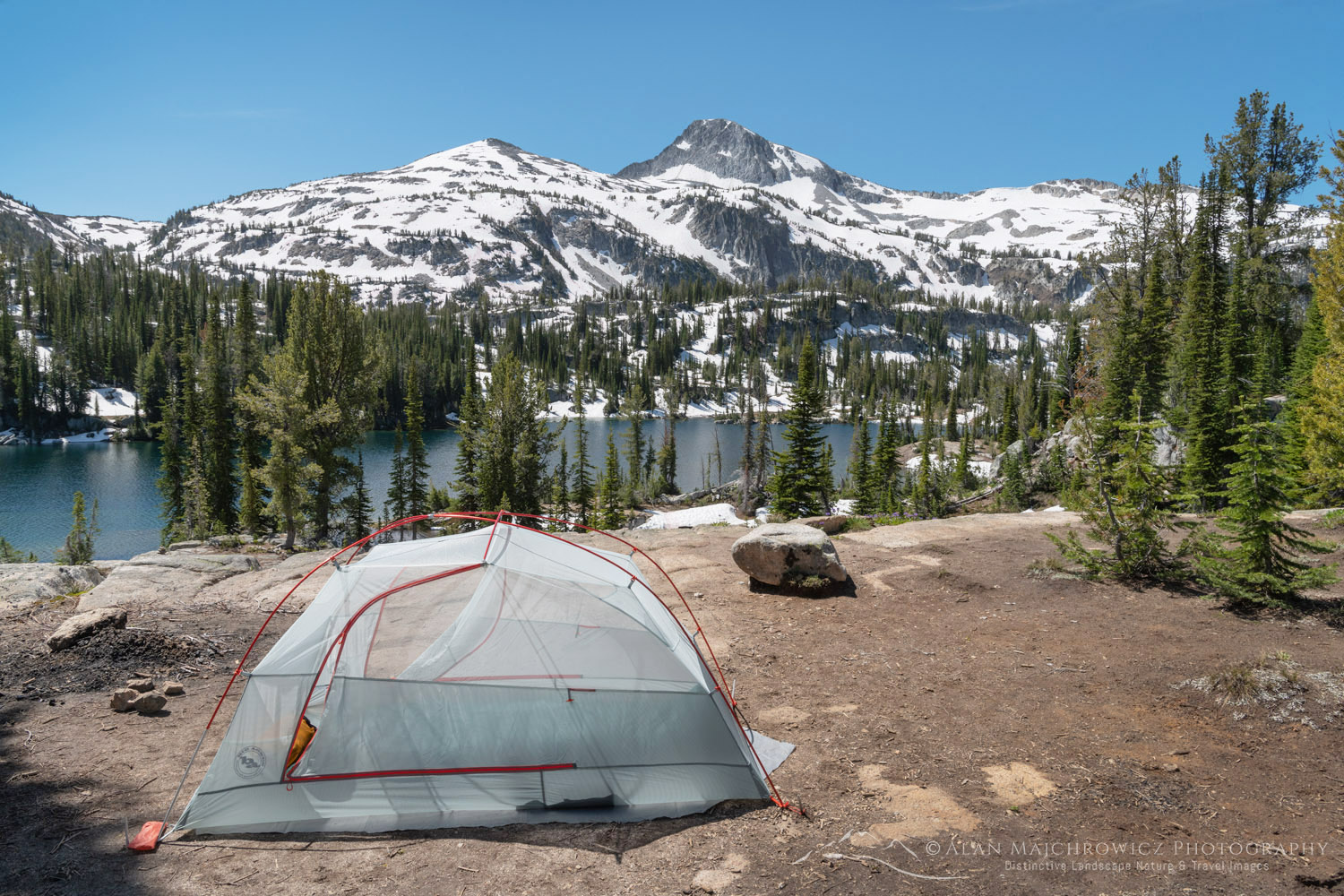 Moccasin Lake Camp #68814 Purchase
Moccasin Lake Camp #68814 Purchase
Moccasin Lake And Out
Since Glacier Lake was now out of the picture I went scouting higher up on the open slopes behind the camp and on the way to the other lakes in the basin. There was still too much snow to make the other lakes worthwhile so I went down to nearby Moccasin Lake. Even though it was only a few hundred feet lower there was considerably less snow. But unfortunately, I found only one established campsite. It was on a rock shelf above the lake with a great view, but it was also sorely overused. This must be the only site in the area since there was enough bare dusty ground for several parties.
I wasn’t as fortunate here with the light and compositions so I took advantage of clear skies to do some night sky Milky Way photography. The next day I decided to move back down the trail to the open meadows along the Lostine River. On my way in I saw some great photo opportunities in this area so I made this my final destination on this hike. After finding a hidden out-of-the-way campsite I was able to make several more evening photos.
 Milky Way Over Eagle Cap #68819 Purchase
Milky Way Over Eagle Cap #68819 Purchase
The next day I headed out with mixed feelings. On the one hand, I was able to spend some time in one of the best locations in the Wallowas and make some wonderful images to boot. On the other hand, the lingering snowpack prevented me from photographing some other great areas.
Afterward, I drove to Joseph Oregon to have a good meal. I also had to decide if it would be worth doing the second trip to Ice Lake. After agonizing over the decision it was apparent that it was still too early in the season to make it worthwhile for the photographs I had in mind.
So the next morning I began the drive to the second major destination of the summer photo tour, the Cecil D. Andus-White Clouds Wilderness of Idaho. Check back to read a post on that incredible area!
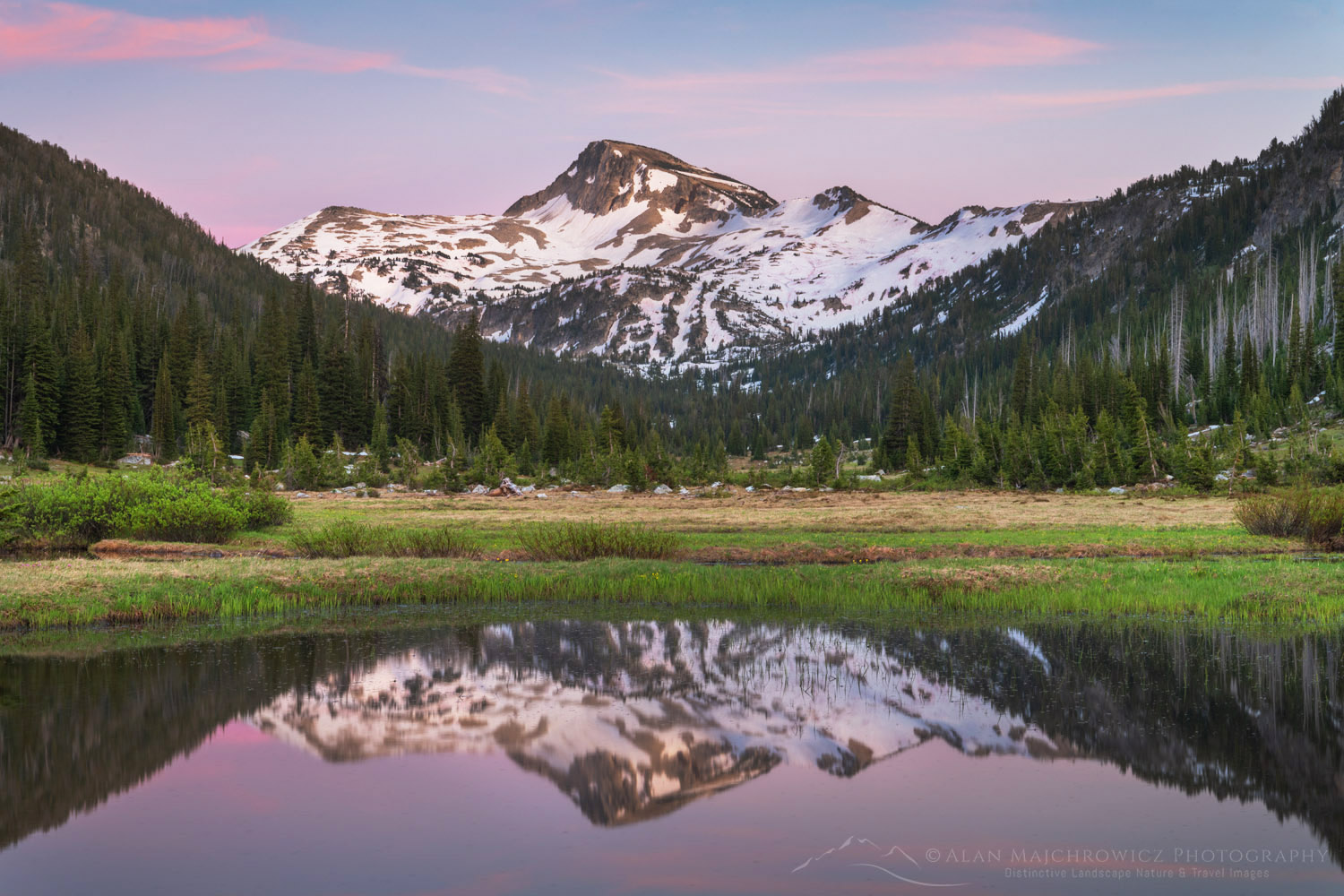 Eagle Cap Reflection #68866 Purchase
Eagle Cap Reflection #68866 Purchase
If You Go:
Round trip to Mirror Lake from Lostine River Two Pan Trailhead: 14 miles
Elevation Gain: about 2200′
Difficulty: Moderate
Red Tape: Northwest Forest Pass or America the Beautiful Pass required
Map: Green Trails Wallowa Mountains Eagle Cap Wilderness Map
The Two Pan Lostine River Trailhead is located about 18 miles south of Lostine Oregon, on Forest Road #8210. The last 10 miles are unpaved and can be rough in several places. Along Forest Road #8210 there are numerous small campgrounds and a few opportunities for primitive dispersed camping.
Note that Mirror Lake is only one of many backcountry destinations from this trailhead. Mirror Lake can be the only destination or be part of extended backpacking trips into the Wallowas. Check out the map in the link above for all the exciting possibilities.
The town of Joseph Oregon at the head of the very scenic Wallowa Valley makes a great base for trips into the Wallowas. It’s also a great jumping-off town for adventures in the Hells Canyon Recreation Area. It has everything you’ll need, from good food and lodging to brewpubs, a distillery, and outdoor recreation stores. There are also numerous local artists displaying their work in Joseph’s galleries. Make sure to check out the Josephy Center For Arts & Culture while you’re there.
 Eagle Cap Mirror Lake #68801 Purchase
Eagle Cap Mirror Lake #68801 Purchase
Leave No Trace
And now for a short lecture. As I’ve been saying in previous posts, don’t even think about visiting this or any other wilderness area unless you are prepared to follow the guidelines of Leave No Trace (LNT). The Eagle Cap and all other wilderness areas throughout the world are under incredible pressure from growing amounts of visitors. Please do your part to tread lightly and help preserve these precious areas for future generations!
To learn more about the principles and practicing LNT please take a few minutes to visit the Leave No Trace Center for Outdoor Ethics. Your children and grandchildren will thank you!
Seven Leave No Trace Principles
- Plan ahead and prepare.
- Travel and camp on durable surfaces.
- Dispose of waste properly.
- Leave what you find.
- Minimize campfire impacts (be careful with fire).
- Respect wildlife.
- Be considerate of other visitors.
Photo Gear Used On This Trip
Nikon D850
Nikkor Lens:
14-24mm 2.8G ED
24-70mm 2.8E ED
70-200mm 2.8E FL ED
Gitzo 1532 Tripod
Really Right Stuff B-55 Ball Head
Assorted Lee Graduated Neutral Density Filters
B+H Polarizing Filter
Vello FWM-N2 Remote Shutter Release
If you enjoyed reading Eagle Cap Wilderness Wallowa Mountains please share it with your friends and family.
All photos appearing in Eagle Cap Wilderness Wallowa Mountains are available for Commercial Licensing and Fine Art Prints. Click on any image to purchase, or contact me for more info!


